By the time of the Great War, Llanelli was a hugely industrious town, by far the largest in West Wales. Many men from all over Great Britain came here to work and live, and the population swelled. The Town therefore played a hugely important role in supplying recruits to all three services, army, navy and air force, as well as creating the backbone of several local units, the 15th Welsh (Carmarthen Pals), the 4th Welsh (Territorial), the Welsh Field Company, Royal Engineers (Territorial), and the Pembroke Yeomanry. As far as I know, there are no names on the main Llanelli War Memorial, so I have used the original Carmarthen County War Memorial roll as the basis for this page. Due to the large number of men commemorated here I have split the Llanelli WW1 page of the website into three, with surnames starting in alphabetical order: A to H; I to O; and P to Z.
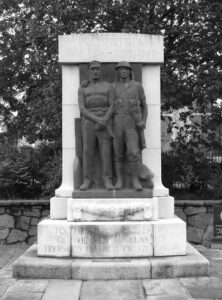
Llanelli War Memorial, The Great War, 1914-1918 (Surnames P to Z)
George Deas Page, Sapper, 770, Royal Engineers. George was the son of George Deas Page (the famous Scottish Architect) and Ann Anderson Graham Page, of Grahamville, Orchard St., Falkirk. He resided at Llanelli prior to the war, and enlisted there into the 1/1st Welsh Field Company, Royal Engineers, which was attached to the 53rd (Welsh) Division. The 53rd (Welsh) Division sailed from Devonport in July 1915, and arrived at Mudros on 5 August 1915. From here they moved to Gallipoli, landing on 9 August 1915. Here the Division was immediately thrown into action, and spent the next few days in isolated pockets, fighting against a Turkish counter-attack during the Battle of Sari Bair, then the ensuing Attack on Scimitar Hill. The Division remained here throughout the coming months, and suffered severe losses in manpower strength during the great November 1915 blizzard on Gallipoli, when its total strength was reduced to less than that of a full-strength Brigade. On 11 December 1915 the Division was evacuated to Mudros, and by 23 December 1915 were moved to Egypt. George took ill and died in hospital at Alexandria on 13 November 1916. He was 31 years old, and is buried at Alexandria (Hadra) War Memorial Cemetery, Egypt.
Harry James Palmer, Private, L/7708, Queens Royal West Surrey Regiment. Harry was born at Bermondsey in 1885, the son of Jane Palmer, and had enlisted into the Queen’s Royal West Surrey Regiment by 1903. He had served in South Africa and India before returning to Britain in 1906, and joined the army reserve in 1906. Harry resided with Mrs Edith Potter at 40, Coronation Road, Bigyn, Llanelli prior to the war. He was recalled to the colours, joining the 1st Battalion, Queens Royal West Surrey Regiment, which was attached to 3 Brigade, 1st Division. The Division had been one of the first to arrive in France, fighting at the Battle of Mons, and taking part in the retreat to the Marne, where the Germans were stopped. They then fought at the Aisne, and at Chivy, before being moved north to Ypres. Here they fought at the First Battle of Ypres, where they stopped the German drive towards the Channel ports. Harry was killed at First Ypres, on 23 October 1914, aged 29. He is commemorated on the Ypres (Menin Gate) Memorial, Belgium.
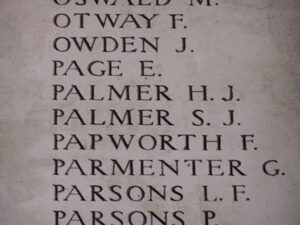
Henry William Palmer, Corporal, 201132, Welsh Regiment. Harry born at Walsall in 1898, the son of George and Mary Palmer. By 1901 the family had moved to Mona, Pembrey Road, Llanelli. Henry enlisted there into the 1/4th Battalion, Welsh Regiment, which was the local Territorial Battalion, attached to 159 Brigade, 53rd (Welsh) Division. The Division landed at Cape Helles, Gallipoli, on 9 August 1915, and was immediately thrown into action, spending the next few days in isolated pockets, fighting against a Turkish counter-attack during the Battle of Sari Bair. The Division remained here throughout the coming months, and suffered severe losses in manpower strength during the great November 1915 blizzard on Gallipoli, when its total strength was reduced to less than that of a full-strength Brigade. On 11 December 1915 the Division was evacuated to Mudros, and by 23 December 1915 were moved to Egypt. They remained on the Suez Canal Defences for the next twelve months, where it took part in operations against the Sultan of Darfur, and in March 1917 took part in the advance into Palestine. Henry was wounded while fighting in the Jordan Valley. He died of his wounds on 10 March 1918, aged 19, and is buried at Jerusalem War Cemetery, Israel.

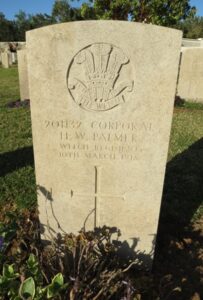
Emrys Parry, Private, 13178, Royal Welsh Fusiliers. Emrys was born at Llanelli, and enlisted there into the 9th Battalion, Royal Welsh Fusiliers. The battalion was attached to 58 Brigade, 19th (Western) Division. The Division moved to France during July 1915, and moved to positions near Loos, where it took part in the opening attack of the Battle of Loos on 25 September 1915. Emrys was killed at Loos on 25 September 1915. He is commemorated on the Loos Memorial, France.
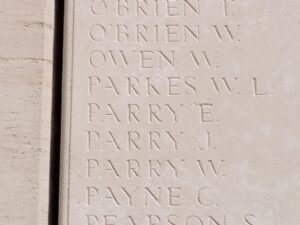
Thomas George Parry, Private, PLY/15060, Royal Marine Light Infantry. Thomas was born on 12 November 1891, the son of Arthur Rees Parry and Margaret Parry, of Thomas Street, Llanelli. He had enlisted into the Royal Marines during 1909, and had seen service around the world prior to the outbreak of war. Thomas then joined the crew of HMS Goliath, which was a Reserve battleship, attached to the 3rd Fleet (Pembroke Reserve), at Pembroke Dock. Goliath was sent to the Mediterranean, where her guns covered the landings on Gallipoli on 25 April 1915. She saw considerable action at Gallipoli, but on 13 May 1915 was struck by torpedoes from the Turkish MTB Muavenet, and sank with heavy loss of life. Thomas was 23 years old when he went down with Goliath that day, and he is commemorated on the Plymouth Naval Memorial, Devon.
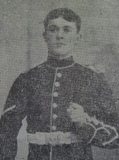
William Partridge, Private, 36166, Welsh Regiment. William was the son of Mary Ann Murphy, of 1, Gwyn Terrace, Sea Side, Llanelli. He enlisted into the South Wales Borderers, but was posted to France, where he joined the 1st Battalion, Welsh Regiment, which was attached to 84 Brigade, 28th Division. The Division formed in England between December 1914 and January 1915 from regular units returning from India, Singapore and Egypt. During January 1915 it moved to France, landing at Le Havre and moved to the Western Front, where it saw its first major action during the Second Battle of Ypres. William was just 18 years old when he was killed by a German shell which hit his trench during the Battle of Bellewaarde, on 24 May 1915, aged 18. He was seen to have been carried away by stretcher, but is today commemorated on the Ypres (Menin Gate) Memorial, Belgium.
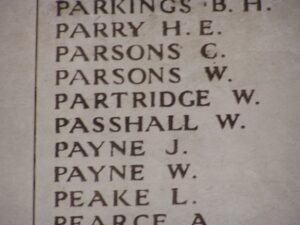
Charles Payne, Private, 13085, Royal Welsh Fusiliers. Charles was the son of George and Ellen Payne, of Stourport. He resided at Llanelli prior to the war, and enlisted there into the 9th Battalion, Royal Welsh Fusiliers, which was attached to 58 Brigade, 19th (Western) Division. The Division crossed to France during July 1915, and moved to positions near Loos, where it took part in the opening attack of the Battle of Loos on 25 September 1915. Charles was killed during the futile charge that day. He was 25 years old, and is commemorated on the Loos Memorial, France.
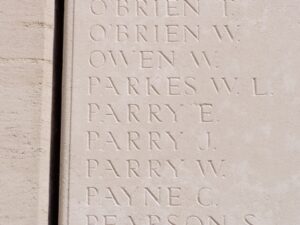
George Payne, Private, G/2988, East Kent Regiment. George was born at Llanelli in 1890, the son of Evan Alfred Payne and Sarah Payne. The family later resided at Kingsbridge, Gorseinon, Swansea. George enlisted at Swansea into the army, and was posted to France, where he joined the 8th Battalion, East Kent Regiment, which was attached to 17 Brigade, 24th Division. The Division had moved to France during August 1915 and marched to positions near Loos, where they took up reserve positions for the main Battle of Loos. They were sent into battle on 26 September 1915 at Loos and suffered terrible casualties due to not being properly trained for battle. George was one of many men killed here on 26 September 1915. He was 25 years old, and is commemorated on the Loos Memorial, France.
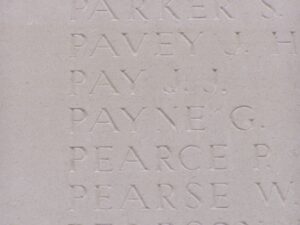
William Frank Pearce, Private, 201291, Welsh Regiment. William was the son of James and Mary Ann Pearce, of 19, Great Western Terrace, Llanelli. He enlisted at Llanelli into the 1/4th Battalion, Welsh Regiment, which was the local Territorial Battalion, attached to 159 Brigade, 53rd (Welsh) Division. The Division landed at Cape Helles, Gallipoli, on 9 August 1915, and was immediately thrown into action, spending the next few days in isolated pockets, fighting against a Turkish counter-attack during the Battle of Sari Bair. The Division remained here throughout the coming months, and suffered severe losses in manpower strength during the great November 1915 blizzard on Gallipoli, when its total strength was reduced to less than that of a full-strength Brigade. On 11 December 1915 the Division was evacuated to Mudros, and by 23 December 1915 were moved to Egypt, joining the Egyptian Expeditionary Force. They remained on the Suez Canal Defences for the next twelve months, where it took part in operations against the Sultan of Darfur. During March 1917 the EEF advanced into Palestine. William was captured by the Turks during the First Battle of Gaza, and died as a POW in a military hospital at Baghdad on 4 March 1918, aged 25. He is buried at Baghdad (North Gate) War Cemetery, Iraq.
John Peters, Leading Seaman, Z/367, Royal Navy. John was born on 22 December 1894, the son of James and Mary Peters, of 3, Tregob, Llanelli. John served aboard the Battlecruiser HMS Indefatigable, which was based at Edinburgh, attached to the Battlecruiser Squadron of the Grand Fleet. On 31 May 1916 the Grand Fleet intercepted the German High Seas Fleet off Jutland, and the greatest sea battle of all time followed, which became known as The Battle of Jutland. Indefatigable was one of the first casualties of the battle. Huge shells from the German Battleship SMS Van Der Tann struck the decks of Indefatigable, and penetrated into the ammunition storage areas, tearing the ship apart. Only two men survived from her huge complement of crew. John was just 22 years old when he died that day, and is commemorated on the Plymouth Naval Memorial, England. His brother Josiah also fell.
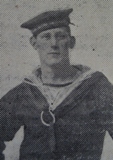
Josiah Peters, Private, 73778, Welsh Regiment. Josiah was the son of James and Mary Peters, of 3, Tregob, Llanelli. He married Mary Elizabeth Thomas on 14 April 1918, and she lived at 8, Crescent Row, Llanelli. He attested into the Army Reserve in July 1916 and on 16 April 1918 was called up, being posted to France, where he joined the 14th Battalion, Welsh Regiment. The battalion had been in France since 2 December 1915 attached to 114 Brigade, 38th (Welsh) Division, and had taken part in the capture of Mametz Wood in July 1916, and of Pilckem Ridge in July 1917. In April 1918 the Division moved to positions on the Somme, north of Albert, and from here launched its drive across the old Somme battlefields on 21 August 1918. Josiah was killed while fighting around Le Cateau on 8 October 1918. He is buried at Bois-Des-Angles British Cemetery, Crevecouer-Sur-L’Escaut, France. His brother John also fell.
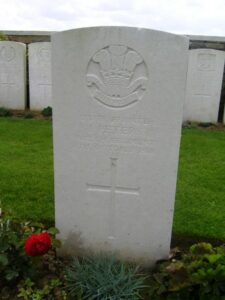
Benjamin Phillips, Private, 54113, Welsh Regiment. Benjamin was the son of John and Mary Ann Phillips, of 13, Stradey Road, Furnace, Llanelli. He enlisted at Llanelli into the 17th Battalion (1st Glamorgan), Welsh Regiment, which was attached to 119 Brigade, 40th (Bantam) Division. The Division moved to France between the 1st and 9th June, and moved to the front near Loos. Late in 1916 they moved south to the Somme, and fought at the Battle of the Ancre, and remained in the area over the winter. In March, 1917 the Germans withdrew to their shortened line, called the Hindenburg Line, and the 40th Division were one of the Divisions that followed the withdrawal. Later in the year they took part in the Battle of Cambrai, playing an important role in the attack on Bourlon Wood. Benjamin was wounded about this time, and was evacuated to Doullens for treatment. He died of his wounds aged 23, on 4 November 1917, and is buried at Doullens Communal Cemetery Extension No. 1, France.
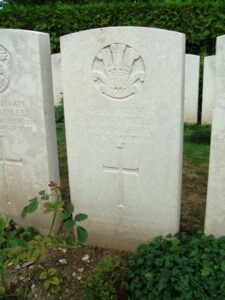
David Charles Phillips, Lieutenant, South Wales Borderers. David was the son of Charles and Elizabeth Phillips, of The Albion Inn, Murray Street, Llanelli. David was commissioned into the South Wales Borderers, and was posted to France on 14 February 1917, where he joined the 2nd Battalion, SWB, which was attached to 87 Brigade, 29th Division. The Division took part in its first major action in France during the 1916 Somme Offensive, and fought at the Battles of Albert and Le Transloy, suffering heavy casualties. In the Spring of 1917 they fought at the Battle of the Scarpe, which was part of the Arras Offensive, and then moved further north to Ypres. David was in command of C Company at Ypres, and on 26 August 1917 the 2nd SWB launched an assault on the German positions at Langemarck. David was killed that day, while leading his men near Fourche Farm. He was 22 years old, and was buried by Reverend Kenelm Swallow at Artillery Wood Cemetery, Belgium.
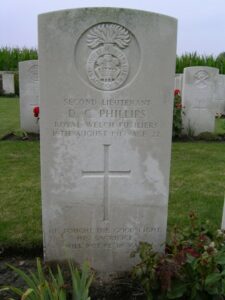
Edgar Rees Phillips, Private, 260401, Gloucestershire Regiment. Edgar was the son of Hector Rees Phillips and Anne Phillips, of 56, James Street, Llanelli. He enlisted at Llanelli into the Monmouth Regiment, but was posted to France on 21 November 1915 with the 12th (Bristol) Battalion, Gloucestershire Regiment, which then became attached to 95 Brigade, 5th Division. March 1916 saw the Division moving to positions near Arras, and then in July 1916 the Division moved south, and fought at the Battle of the Somme. On 5 October, after suffering heavy casualties, the Division moved to Festubert, where they remained until March, 1917. They next saw action at the Battle of Arras, fighting at the Battle of Vimy in April 1917, and the attack on La Coulette. On 3 May they fought in the Third Battle of the Scarpe, and captured Oppy Wood. On 7 September, they were pulled out of the line again, and moved north to join the great offensive in Flanders, the Battle of Passchendaele as it is better known. Edgar was killed here during the Battle of Broodseinde, on 7 October 1917. He was 19 years old, and is buried at Bedford House Cemetery, Belgium.
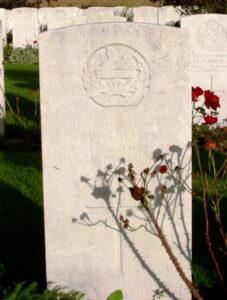
J. O. Phillips, Petty Officer, Royal Navy. This man cannot presently be identified.
J. E. Phillips, Private, London Regiment. This man cannot presently be identified.
Sydney Phillips, Rifleman, S/4249, Rifle Brigade. Sydney was born at Llanelli, and enlisted at Treorchy into the army. He was posted to France with the 13th Battalion, Rifle Brigade, which was attached to 111 Brigade, 37th Division. Late in July 1915 the Division landed in France and concentrated near St Omer by 2 August 1915. They took part in the Attack on the Gommecourt Salient, during the first phase of the Battle of the Somme. Two of the Division’s infantry Brigades, the 111th and 112th, were then attached to the 34th Division from 6 July, and it was during this period that Sydney was killed on 11 July 1916. He is commemorated on the Thiepval Memorial, France.
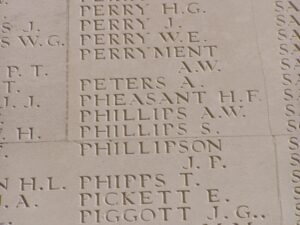
William Charles Phillips, Private, 4163, Welsh Regiment. William was the son of Charles and Hannah Phillips, of 25, Derwent Street, Llanelli. He worked as a behinder at the Old Lodge Tinplate Works prior to enlisting at Llanelli into the 1/4th Battalion, Welsh Regiment, which was the local Territorial Battalion, attached to 159 Brigade, 53rd (Welsh) Division. The Division landed at Cape Helles, Gallipoli, on 9 August 1915, and was immediately thrown into action, spending the next few days in isolated pockets, fighting against a Turkish counter-attack during the Battle of Sari Bair. William was killed here on 10 August 1915. He was 21 years old, and is commemorated on the Helles Memorial, Gallipoli.
Wyndham Phillips, Private, 26813, Welsh Regiment. Wyndham was the son of John and Charlotte Phillips of Abercarn. He married Margaret Ann Edwards after moving to Llanelli to work as a Tinplater in 1900, and the couple resided at 8, Lakefield Road, Llanelli. He was the father of three children. Wyndham enlisted at Llanelli into the 9th Battalion, Royal Welsh Fusiliers, which was attached to 58 Brigade, 19th (Western) Division, and moved to France with the Division in July 1915. The Division saw its first action during the opening assault of the Battle of Loos on 25 September 1915, and it was on that day that Wyndham fell, struck by German shrapnel. He was 37 years old, and is buried at Brown’s Road Military Cemetery, Festubert, France.
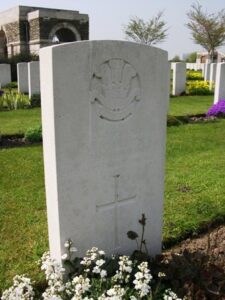
Harry Lawson Pickard, MC, Lieutenant, Royal Welsh Fusiliers. Harry was the son of John Lawson Pickard and Jeanettie Pickard, of Grimsby, and the husband of Phoebe Pickard, of 46, Walker Road, Blackley, Manchester. He had lived at Llanelli prior to the war, and enlisted there into the Welsh Guards, fighting with them on the Somme. Harry was commissioned from the Welsh Guards into the Royal Welsh Fusiliers on 27 November 1917, and was posted to the 9th Battalion, RWF, which was attached to 58 Brigade, 19th (Western) Division. The Division had just seen heavy fighting at Ypres. In 1918 they were caught up in the German Spring Offensive near St. Quentin, where they suffered terrible casualties, before being moved to positions near Messines again. Again the Division was caught up in heavy fighting, during the German attack at Messines, and after suffering terribly again, they moved South to the quieter French sector to rebuild, but were caught up in the German offensive on the Aisne. The Division then moved back to the Northern Somme sector, and took part in the great offensive from 21 August 1918. Harry was awarded the Military Cross during the advance; ‘For conspicuous gallantry, leadership and devotion to duty during an operation near the Bois de Biez on September 30th, 1918. During the attack he led his platoon with great dash, and though early wounded he continued at duty and remained in charge of the outpost line until his company was relieved 18 hours later. His fine conduct had an inspiring effect on his men.’ Sadly he was killed just weeks later, on 20 October 1918, during the Battle of the Selle. He was 32 years old, and is buried at St. Aubert British Cemetery, France.
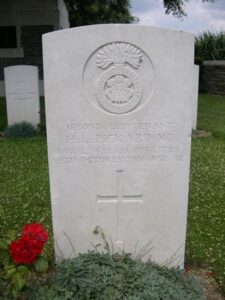
Ellis Pierce, Private, 60216, Royal Welsh Fusiliers. Ellis was the son of Robert and Mary Pierce, of Pen-Y-Bont, Abererch, Pwllheli. He probably worked at Llanelli prior to the war, and enlisted there into the army. Ellis was posted to France, where he joined the 10th Battalion, Royal Welsh Fusiliers, which was attached to 76 Brigade, 3rd Division. In 1915 the Division saw action at Bellewaarde and Hooge, and took part in the Second attack on Bellewaarde, and in 1916 fought at the Actions of the Bluff, and at the St Eloi Craters. They were then moved south to the Somme, and fought there at the Battle of Albert, and the Battle of Bazentin, where they captured Longueval. They then took part in the Battle of Delville Wood, and the Battle of the Ancre, before settling into another bleak winter in France. In May 1917 the Division were at Arras, and fought at the First and Second Battles of the Scarpe, and at the Battle of Arleux and the Third Battle of the Scarpe, where they captured Roeux. Ellis was wounded at Arras, and died on 16 June 1917. He was 31 years old, and is buried at Duisans British Cemetery, Etrun, France.
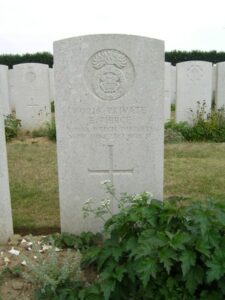
George Nathaniel Pinnegar, Private, 19277, Royal Dublin Fusiliers. George was the son of Nathaniel George and Sarah Pinnegar, of 35, St. Mary’s Gardens, Hertford Road, Lower Edmonton. He had worked at Llanelli prior to the war, returning home to enlist into the army. George was posted to the 6th Battalion, Royal Dublin Fusiliers, which was attached to 198 Brigade, 66th (2nd East Lancs) Division. The Division had fought on the Somme in 1916, and at Ypres the following year. It suffered heavy casualties during the German Offensives of 1918, and didn’t return to action until the latter stages of the war. George was wounded during the end of the war, and died of his wounds on 29 March 1919. He was 23 years old, and is buried at Edmonton Cemetery, Middlesex.
John James Pontin, Sapper, 386, Wiltshire Regiment. John was the son of Simeon and Jane Pontin, of Cherhill, Calne, Wilts. He had worked at Llanelli prior to the war, before going to France with the 6th Battalion, Wiltshire Regiment, which was attached to 42 Brigade, 14th (Light) Division. The Division was to see its first action during the Action of Hooge, where the Division were the first to be attacked by the German use of flamethrowers. They then fought at the Second attack on Bellewaarde. In July 1916 they moved to the Somme, and fought at the Battle of Delville Wood, and then the Battle of Flers-Courcelette, and in March 1917 followed the German Retreat to the Hindenburg Line. May saw them at Arras, where they took part in the First Battle of the Scarpe, and later at the Third Battle of the Scarpe, and then they were sent to Ypres, where they fought at the Battle of Passchendaele. In the Spring of 1918 the Division were near St. Quentin, and were hit there by the German Spring Offensive, launched on 21 March. After rebuilding, the Division moved back to France and joined the Second Army during July 1918. John died on 22 September 1918, during the great advance. He was 20 years old, and is buried at Grand-Seraucourt British Cemetery, France.
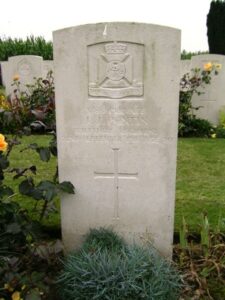
Henry James Pound, Private, 204, Welsh Guards. Henry was the son of Edward Craggs Pound and Mary Jane Pound, of 38, St. Alban’s Road, Swansea. He probably worked at Llanelli, and enlisted there into the Grenadier Guards, before transferring sometime after 26 February 1915 into the 1st Battalion, Welsh Guards, which was attached to 3rd Guards Brigade, Guards Division. This Division has the distinction of being formed in France in August 1915. The various Guards units that had been with other Divisions were withdrawn to be brought together to create this fine formation. It remained on the Western Front throughout the war and saw its first major action during the Battle of Loos on 25 September 1915. Henry was killed at Loos on 27 September 1915. He was 21 years old, and is commemorated on the Loos Memorial, France.
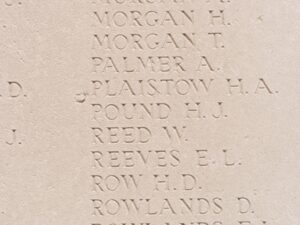
Isaac Sydney Poyer, Private, 11615, Welsh Regiment. Sydney was the son of Henry Thomas and Mary Jane Poyer, of 1, Crescent Row, Llanelli. He joined the Welsh Regiment at Cardiff in April 1914, but bought his discharge seven weeks later. Sydney re-enlisted after the outbreak of war, and was posted to the 19th Battalion, Welsh Regiment, the Pioneer battalion to the 38th (Welsh) Division. On 2 December 1915 the battalion moved to France, and the entire Division moved to the Fleurbaix sector, where it was initiated into trench warfare. During June 1916 the Division marched south to the Somme, and on 7 July 1916 attacked Mametz Wood. The initial attack failed, and it was three days later, on 10 July, that a fresh attack was mounted. After two days of heavy hand to hand fighting within the wood, the Germans withdrew, and the battered Welshmen moved via Hebuterne to Boesinghe, on the Yser Canal. Sydney was wounded at Boesinghe, and died on 23 June 1917, aged 24. He is buried at Mendinghem Military Cemetery, Belgium.
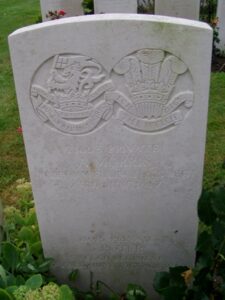
William Henry Poyntz, Private, 3649, Welsh Regiment. William was the son of Police Sergeant William Henry Poyntz, and the husband of Sarah Poyntz, of 10, Cornish Place, Llanelli. He worked for the GWR prior to enlisting at Llanelli into the 1/4th Battalion, Welsh Regiment, which was the local Territorial Battalion, attached to 159 Brigade, 53rd (Welsh) Division. The Division landed at Cape Helles, Gallipoli, on 9 August 1915, and was immediately thrown into action, spending the next few days in isolated pockets, fighting against a Turkish counter-attack during the Battle of Sari Bair. William was wounded at Gallipoli, and died at sea on 31 August 1915, aged 22. He was buried at sea, so is commemorated on the Helles Memorial, Gallipoli.
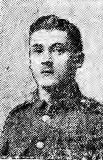
Sydney Stevenson Preston, Private, 3889, Welsh Regiment. Sydney was the son of Ernest John Preston and Ellen Preston, of Downing Street, Llanelli. He enlisted at Llanelli into the 1/4th Battalion, Welsh Regiment, which was the local Territorial Battalion, attached to 159 Brigade, 53rd (Welsh) Division. The Division landed at Cape Helles, Gallipoli, on 9 August 1915, and was immediately thrown into action, spending the next few days in isolated pockets, fighting against a Turkish counter-attack during the Battle of Sari Bair. Sydney was wounded at Gallipoli, and evacuated to the Hospital at Malta, where he died on 12 October 1915. He was 18 years old, and is buried at Pieta Military Cemetery, Malta. His father had served as a Sergeant with the 2/4th Welsh.
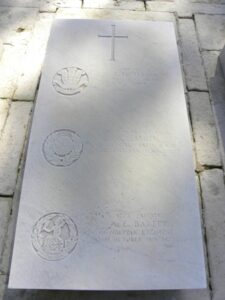
Cyrus Price, Private, 31167, Royal Welsh Fusiliers. Cyrus was the son of Thomas and Margaret Price, of Nyth y Drew, Dafen. Cyrus was a tinplater prior to the war and enlisted at Swansea on 1 September 1914 into the Royal Garrison Artillery. On 5 June 1915 he was transferred to the Royal Welsh Fusiliers, and landed in France on 29 September 1915, where he was attached to the 2nd Battalion, Royal Welsh Fusiliers, who by this time were attached to 19 Brigade, 33rd Division. Cyrus was wounded at Cuinchy on 25 April 1916, and after a spell in hospital rejoined the battalion in time for the infamous explosion of the Red Dragon mine on 22 June 1916. The battalion lost a large number of men killed during the explosion, and resulting German attack, and the following month moved to the Somme. Cyrus was killed in action during the attack on High Wood, on 20 July 1916, aged 21. He has no known grave, and so is remembered on the Thiepval Memorial, France. His father had died just days before news of Cyrus’s death was received by his mother, and the telegraph was handed to her as the funeral cortege was assembling.
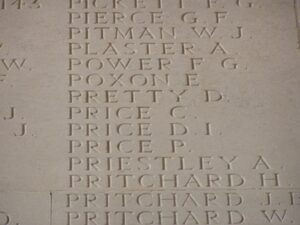
William Price, Rifleman, R/14994, King’s Royal Rifle Corps. William was born at Llanelli, the son of John and Jane Price. The family later resided at 44, Siding Terrace, Skewen, and William enlisted at Swansea into the army. He was posted to France with the 8th Battalion, King’s Royal Rifle Corps, which was attached to 41 Brigade, 14th (Light) Division. The Division was to see its first action during the Action of Hooge, where the Division were the first to be attacked by the German use of flamethrowers. They then fought at the Second attack on Bellewaarde. In July, 1916 they moved to the Somme, and fought at the Battle of Delville Wood, and then the Battle of Flers-Courcelette. William was killed at Flers on 15 September 1916. He was 22 years old, and is buried at Delville Wood Cemetery, Longueval, France.
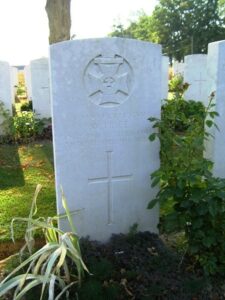
Ernest Pritchard, Lance Corporal, 15733, Worcestershire Regiment. Ernest was the son of John Pritchard, and the brother of Walter Pritchard, of Abberley View, Wilden, Stourport, Worcs. He worked at Llanelli prior to the war, and enlisted there into the army. Ernest was posted to France with the 10th Battalion, Worcestershire Regiment, which was attached to 57 Brigade, 19th (Western) Division. The Division moved to France during July 1915, and moved to positions near Loos, where it took part in the opening attack of the Battle of Loos on 25 September 1915. The following year the Division moved to the Somme, where it took part in the second wave of the attack on Ovillers-La Boiselle on 1 July, capturing the village at heavy cost. It then fought at the Battle of Poziéres, and it was here that Ernest was killed on 30 July 1916. He was 23 years old, and is commemorated on the Thiepval Memorial, France. His brother Arthur Thomas Pritchard also died in service.
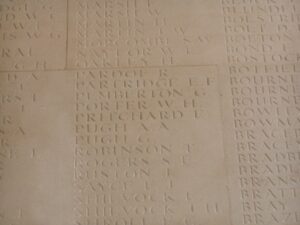
David Prothero, Private, 13610, South Wales Borderers. David was the son of David and Dinah Prothero, of 75, Berry Street, Workington. He was employed at the Morfa Tinworks prior to the war, and enlisted at Llanelli into the 1st Battalion, South Wales Borderers, which was attached to 3 Brigade, 1st Division. The Division had been one of the first to arrive in France, fighting at the Battle of Mons, and taking part in the retreat to the Marne, where the Germans were stopped. They then fought at the Aisne, and at Chivy, before being moved north to Ypres. Here they fought at the First Battle of Ypres, where they again stopped the German Offensive, before wintering in Flanders. The following year saw them in action again at the Battle of Aubers, before moving South to Loos, where they fought during the Battle of Loos. David was killed at Loos on 26 September 1915. He was 23 years old, and is commemorated on the Loos Memorial, France. His brother Thomas Prothero also fell.
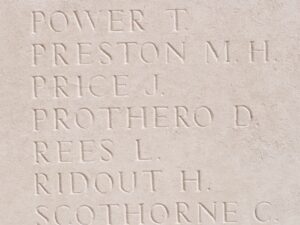
George Protheroe, Private, 17461, Cheshire Regiment. George was the son of John and Mary Protheroe, of Thomas Street, Llanelli. He was employed at Llanelli Steelworks prior to enlisting into the army. George was posted to France with the 9th Battalion, Cheshire Regiment, which was attached to 56 Brigade, 19th (Western) Division. . The Division moved to France during July 1915, and moved to positions near Loos, where it took part in the opening attack of the Battle of Loos on 25 September 1915. The following year the Division moved to the Somme, where it took part in the second wave of the attack on Ovillers-La Boiselle on 1 July, capturing the village at heavy cost. George was killed at La Boiselle on 4 July 1916. He is commemorated on the Thiepval Memorial, France.

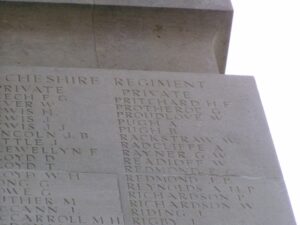
Thomas Prothero, Private, 49223, East Lancashire Regiment. Thomas was the son of David and Dinah Prothero, of 75, Berry Street, Workington. He worked alongside his brother David at the Morfa Tinworks prior to enlisting into the army, and served with the Border Regiment, before being posted to the 11th Battalion, East Lancashire Regiment, which was attached to 94 Brigade, 31st Division. During December 1915 the Division moved to Egypt, and took part in the defence of Suez Canal. In March, 1916 they moved to France, fighting on the Somme that year. They wintered on the Ancre, until moving to Arras the following year. Here they fought at the Third Battle of the Scarpe, and helped in the capture of Oppy Wood. At the beginning of 1918 the Division was in the St. Quentin sector, and was hit by the German Spring Offensive of 21 March 1918 at the Battle of St Quentin. The Division withdrew west, fighting at the First Battle of Bapaume, and then at the First Battle of Arras. After suffering terrible casualties the Division were moved to Flanders to rest, but in April the Germans launched an offensive in Flanders, and the Division were caught up in the fighting there. In August 1918 the war turned in favour of the Allies, and the Division took part in the Advance in Flanders. They then fought at the Battle of Ypres. Thomas was killed here on 28 September 1918. He was 34 years old, and is buried at Underhill Farm Cemetery, Belgium. His brother David Prothero also fell.
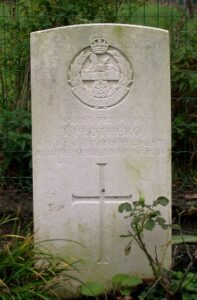
William Bertram Protheroe, Lieutenant, Royal Flying Corps. William was born in Garnant in 1891, the son of William Henry Protheroe and Elizabeth Protheroe (nee Morgan). The family then moved to Delfan, Gilbert Crescent, Llanelli soon after his birth as his father had set up his own boot store. William was employed by Thomas & Clement prior to the war and was a highly regarded rugby player. He enlisted into the army soon after the outbreak of war and was commissioned as Second Lieutenant into the 15th Battalion, Welsh Regiment, the Carmarthen Pals battalion, on 3 April 1915. He landed in France with elements of the battalion on 4 December 1915, and served with the battalion until after the fighting at Mametz Wood, when he volunteered for service with the Royal Flying Corps. William gained his Pilots wings, and was promoted to Lieutenant, joining 53 Squadron, RFC in France. At 02.20 on the morning of 12 June 1917, William and his Observer, Lieutenant W. Turnbull, were flying a Photographic Reconnaissance mission over Oostaverne in their FE2b, Serial A4207, when they were spotted by Vzfw Wittekind of Jasta 28, which was commanded by Ritter Max Von Muller. The FE2b was easily out-manoeuvred by the superior German Albatross fighter, and was shot down in flames, killing both men. The bodies of William and his Observer were burnt in the wreckage, and they are commemorated on the Arras Flying Services Memorial, France. Turnbull was also a keen rugby player and reportedly an international, although no evidence of this can be found.
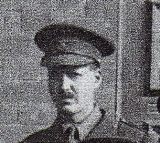
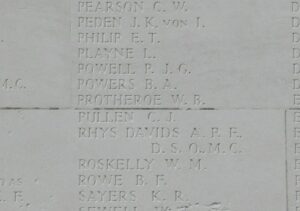
William John Protheroe, Private, 265853, Welsh Regiment. William was the son of John and Margret Protheroe, of Gorseinon. He had resided at Llanelli prior to the war, and enlisted at Gorseinon into the 6th Battalion, Welsh Regiment. The battalion moved to France just after the outbreak of war, and late in 1915 became the Pioneer Battalion to the 1st Division. They fought at the Battle of Loos in September 1915, and the following year fought at the Battle of the Somme. They followed the German retreat to the Hindenburg Line in early 1917, before moving to the Flanders Coast. While training on the coast, the Third Battle of Ypres had stalled in the mire, and the Division were recalled to Ypres, where they fought at the Second Battle of Passchendaele. After spending another winter in Flanders, they were near Estaires when the German Spring Offensive caught them, and the Division suffered heavy casualties over the coming weeks. William was wounded during this time, and died on 11 May 1918, aged 34. He is buried at Etaples Military Cemetery, France.
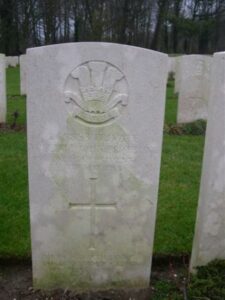
William S. Quane, Sapper, 448693, Royal Engineers. William was from Birkenhead. He had served with the Royal Munster Fusiliers for a brief period, and worked at Llanelli prior to the war. He re-enlisted there into the Royal Welsh Fusiliers at the outbreak of war. He later transferred into the 124th Field Company, Royal Engineers, which was attached to the 38th (Welsh) Division. William probably joined the Division after its move to Ypres from the Somme late in 1916. He was killed in action on the Canal Bank near Boesinghe on 11 June 1917, and is buried at Essex Farm Cemetery, Belgium.
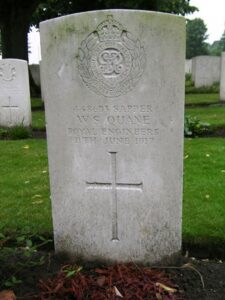
George Edward Radford, MM, Sergeant, 117038, Royal Garrison Artillery. George was the son of William and Matilda Radford, of Weston-super-Mare, Somerset. He was a Schoolmaster, and married Annie Jane Morgan, of 8, Queen Victoria Road, Llanelli on 2 June 1906. The couple set up home in Franklin Villa, Milton Road, Weston Super Mare, where their son Frederick was born on 18 September 1906. George enlisted into the Royal Garrison Artillery on 2 December 1915, and was posted to France on 15 May 1915 with the 331st Siege Battery, RGA. George was wounded during the advance on the Hindenburg Line, and died on 22 September 1918, aged 39. He is buried at La Chapelette British & Indian Cemetery, Peronne, France. George was the holder of the Military Medal.
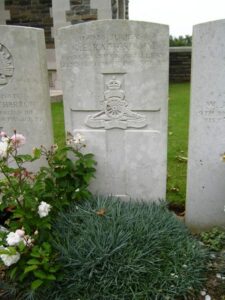
George William Randle, Sergeant, 201047, Welsh Regiment. George was the son of Richard and Jane Randle, of 2, Lodge Road, Stourport, Worcs. He lived at Llanelli with his wife, Florence Annie Randle,prior to the war, and enlisted at Carmarthen into the 1/4th Battalion, Welsh Regiment, which was the local Territorial Battalion, attached to 159 Brigade, 53rd (Welsh) Division. The Division landed at Cape Helles, Gallipoli, on 9 August 1915, and was immediately thrown into action, spending the next few days in isolated pockets, fighting against a Turkish counter-attack during the Battle of Sari Bair. The Division remained here throughout the coming months, and suffered severe losses in manpower strength during the great November 1915 blizzard on Gallipoli, when its total strength was reduced to less than that of a full-strength Brigade. On 11 December 1915 the Division was evacuated to Mudros, and by 23 December 1915 were moved to Egypt. They remained on the Suez Canal Defences for the next twelve months, where it took part in operations against the Sultan of Darfur, and in March 1917 took part in the advance into Palestine. George was killed during the First Battle of Gaza, on 26 March 1917, aged 33, and is commemorated on the Jerusalem Memorial, Israel.
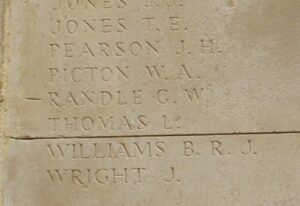
John Rattenbury, Corporal, 129, Royal Engineers. John was the son of William and Susannah Rattenbury, and the husband of Frances Ann Rattenbury, of 4, Mariners Court, Llanelli. He was employed at Llanelli Steelworks, prior to enlisting into the 1/1st Welsh Field Company, Royal Engineers, which was attached to the 53rd (Welsh) Division. The 53rd (Welsh) Division sailed from Devonport in July 1915, and arrived at Mudros on 5 August 1915. From here they moved to Gallipoli, landing on 9 August 1915. John was wounded at Helles, and was evacuated to a Hospital Ship moored offshore, where he sadly died of wounds and was buried at sea on 29 August 1915, aged 39. John is remembered on the Helles Memorial, Gallipoli.

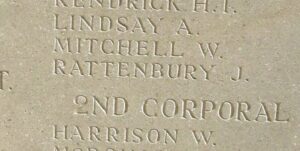
George Rawlings, Private, G/62, Royal Fusiliers. George was the son of Henry and Mary Ann Rawlings, of London. He had served in the Boer War, before setting up home with his wife, Violet Rawlings, at 34, Coronation Road, Llanelli. George was called up from the Reserve at the outbreak of war, and joined the 2nd Battalion, Royal Fusiliers which was attached to 86 Brigade, 29th Division. The Division moved to Gallipoli via Egypt, landing on 25 April 1915, and took part in all of the major battles thereafter. George was wounded during the Defence of Suvla, and died on 26 August 1915, aged 40. He is buried at Hill 10 Cemetery, Gallipoli.

Thomas James Ray, Private, 77577, Royal Welsh Fusiliers. Thomas was the son of David and Elizabeth Ray, of 17, Pleasant Place, Wern, Llanelli. He enlisted at Carmarthen into the army, and was posted to France early in 1918, where he joined the 2nd Battalion, Royal Welsh Fusiliers. In February 1918 the battalion became attached to 115 Brigade, 38th (Welsh) Division, and moved to the Somme in April 1918, taking up positions north of Albert, around Aveluy Wood. On 21 August 1918 the Division launched its assault across the River Ancre, and over the coming days drove the Germans back across the old Somme battlefield, towards Longueval. Thomas was killed during the Second Battle of Bapaume, on 1 September 1918. He was 19 years old, and is buried at Sailly-Saillisel British Cemetery, France.
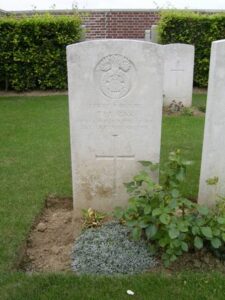
Daniel Michael Reardon, Petty Officer (Stoker), 156685, Royal Navy. Daniel was born at Woolwich on 20 May 1871. He had served for many years in the Royal Navy, prior to retiring and moving to Llanelli. He rejoined the colours at the outbreak of war, and served as a Stoker aboard HMS Cressy, which was attached to Cruiser Force C. On 22 September 1914, Cressy was on patrol with HMS Hogue, when both ships were sunk by torpedoes from the German Submarine U9. Daniel was 43 years old when he was killed in the sinking, and is commemorated on the Chatham Naval Memorial, Kent.
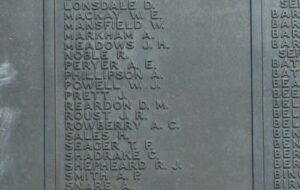
Charles Reay, Seaman, 1777SD, Royal Navy. Charles was the husband of Mary E. Reay (nee Johns), of 11, Bay View Terrace, Machynis, Llanelli. He served with the Royal Navy, and was based at HMS Vivid when he took ill, and died on 24 November 1916. Charles was 34 years old, and is buried at Box Cemetery, Llanelli.
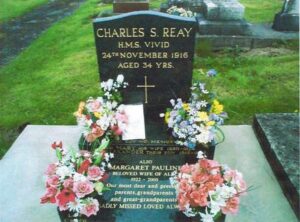
David Gwilym Rees, Driver, 95251, Royal Field Artillery. Gwilym was the son of David and Mary Rees, of Gilbert Place, Llanelli, and enlisted there into the Royal Field Artillery. He was posted to France with the 3rd Battery, RFA. Gwilym was with his battery during the Battle of the Somme, and was killed on 17 November 1916, aged 23, during the Battle of the Ancre. He was buried at Dantzig Alley British Cemetery, Mametz, France.
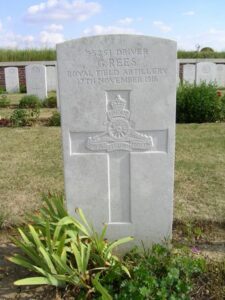
David Roderick Rees, Private, 68878, Royal Welsh Fusiliers. David was the son of David and Sarah Rees, of Llanelli. He resided at 11, Penyton Street, Llanelli prior to enlisting into the Pembroke Yeomanry. He was posted to Salonika in 1917, where he joined the 11th Battalion, Royal Welsh Fusiliers, which was attached to 67 Brigade, 22nd Division. David was killed during the Battle of Doiran, on 18 September 1918, aged 29. He is buried at Karasouli Military Cemetery, Greece.
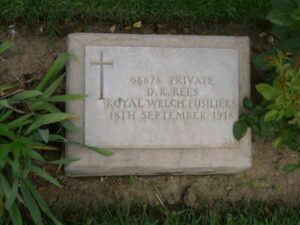
Edmund Rees, Private, 31436, South Wales Borderers. Edmund was born at Llanelli. He enlisted at Pontypridd into the army, and was posted to France, where he joined the 1st Battalion, South Wales Borderers, which was attached to 3 Brigade, 1st Division. Edmund probably joined the battalion in time to take part in the Battle of Loos in September 1915. They fought during the Battle of the Somme, and followed the German retreat to the Hindenburg Line in early 1917. The Division moved to the Flanders Coast during the summer of 1917. While training on the coast, the Battle of Third Ypres had stalled in the mire, and the Division were recalled to Ypres, where they fought at the Second Battle of Passchendaele. After spending another winter in Flanders, they were near Estaires when the German Spring Offensive caught them. Edmund was wounded here, and died on 25 April 1918. He was buried at Pernes British Cemetery, France.
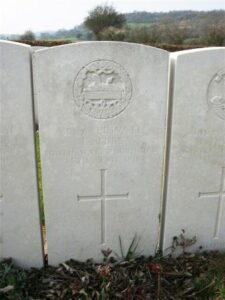
Evan Rees, Sapper, 62979, Royal Engineers. Evan was the son of Sarah Rees, of Newcastle Emlyn. He lived at 4, Cornish Place, New Dock, Llanelli prior to the war. He originally enlisted into the 2/1st Field Company, Royal Engineers, but was posted to France, where he joined the 38th Division Signal Company, Royal Engineers, which was attached to the 38th (Welsh) Division. Evan survived the war, but died of influenza in France on 23 November 1918, aged 29. He is buried at Caudry British Cemetery, France.
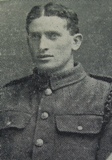
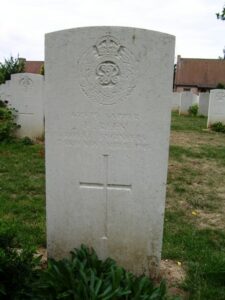
Gwilym Rees, Corporal, Royal Engineers. Gwilym was the son of David and Margaretta Rees, of 4, Erw Road, Llanelli. He had served at Gallipoli with the Welsh Field Company, Royal Engineers, and while in a weakened state, contracted malaria. Gwilym was treated at Malta before returning home to Llanelli, and died on 30 September 1918, eighteen months after being discharged. Little else is known of Gwilym, as he is not commemorated by the CWGC, but his brother Tom was killed in Mesopotamia.

Gwilym Emlyn Rees, Private, 41478, Loyal North Lancashire Regiment. Gwilym was the son of Thomas and Margaret Rees, of 26, Trinity Road, Llanelli. He served with the Training Reserve, before being posted to France in 1918, joining the 9th Battalion, Loyal North Lancashire Regiment, which was attached to the 50th (Northumbrian) Division. During March 1918 they were stationed near St. Quentin, and were hit here by the German Spring Offensive of 21 March 1918, during the Battle of St Quentin. They took part in a gallant rearguard action during the Actions at the Somme Crossings, and then at the Battle of Rosieres. After suffering terrible casualties, the Division moved north to Flanders to rest and rebuild, but in April the Germans launched an attack in Flanders, around the Lys, and the Division took part in the Battle of Estaires, and the Battle of Hazebrouck. Gwilym was killed during the ensuing Second Battle of Kemmel, on 29 April 1918. He was 19 years old, and is commemorated on the Tyne Cot Memorial, Belgium.
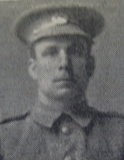
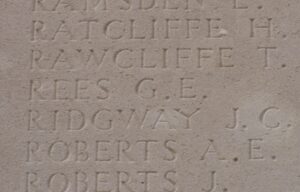
Ivor Guest Rees, Second Lieutenant, Welsh Regiment. Ivor was the son of William and Annie Rees, of Llanelli. He worked as a clerk at the Old Castle Works prior to being commissioned into the 9th Battalion, Welsh Regiment. The Battalion was attached to 58 Brigade, 19th (Western) Division, and moved to France during July 1915, fighting at Loos in September that year. The following year the Division moved to the Somme, where it took part in the second wave of the attack on Ovillers-La Boiselle on 1 July, capturing the village at heavy cost. Ivor was wounded here, and evacuated to the Base Hospital at Rouen for treatment, but sadly died of his wounds there on 5 August 1916, aged 24. He is buried at St. Sever Cemetery, Rouen, France. His brother, Vivian Guest Rees was also killed.
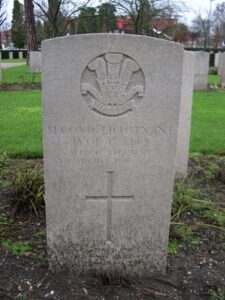
John Rees, Gunner, 95284, Royal Field Artillery. John was the son of Hector and Margaret Rees of 35, Crooked Row, Llanelli. He enlisted at Llanelli into the Royal Field Artillery, and was posted to France with B Battery, 71st Brigade, which was attached to the 15th (Scottish) Division. John was killed during the Second Battle of the Scarpe, on 24 April 1917. He was 29 years old, and is buried at Feuchy Chapel British Cemetery, Wancourt, France.
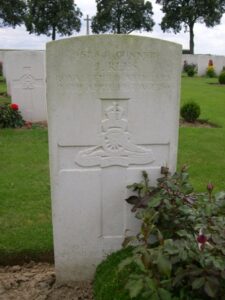
John James Rees, Private, CMT/373, Royal Army Service Corps. John was born in Haverfordwest, and was the husband of Emily Mary Rees, of 70, Marble Hall Road, Llanelli. He worked as a chauffeur for Buckleys prior to the war, and enlisted at Llanelli into the Army Service Corps. John was posted to the 40th Division Salvage Company, which was attached to the 40th (Bantam) Division. This Division was formed between September and December 1915, and moved to France during June 1916, moving to the front near Loos. Late in 1916 they moved south to the Somme, and fought at the Battle of the Ancre, and remained in the area over the winter. In March 1917 the Germans withdrew to their shortened line, called the Hindenburg Line, and the Division was one of the Divisions that followed the withdrawal. Later in the year they took part in the Battle of Cambrai, playing an important role in the attack on Bourlon Wood. They remained in the area over the coming months, but were caught here by the German Spring Offensive of 21 March 1918, and fought there at the Battle of St Quentin and retreating back westwards fought at the First Battle of Bapaume. Due to the terrible casualties suffered by the Division here they were sent north to Flanders to rest and rebuild, but in April the Germans launched an offensive in Flanders, and the 40th Division were caught up in the thick of it again, fighting at the Battle of Estaires, and then at the Battle of Hazebrouck. John was killed after this period, when he was struck by fragments of a German shell on 27 May 1918. He was 26 years old and is buried at Warlincourt Halte British Cemetery, Saulty, France.
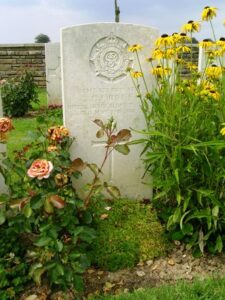
John Roger Rees, Private, SW2650, London Regiment. John was the son of Mrs. Mary Rees, of 20, Pemberton Street, Llanelli. He was working as a Draper at Victoria, London prior to the war, and enlisted in August 1914 into the 23rd Battalion, London Regiment, which was attached to 142 Brigade, 47th (2nd London) Division. He embarked for France on 14 March 1915 with the battalion, and fought at the Battle of Aubers and the Battle of Festubert in May 1915. John was killed at Festubert on 26 May 1915. He was 19 years old, and is commemorated on the Le Touret Memorial, Richebourg L’Avoue, France.
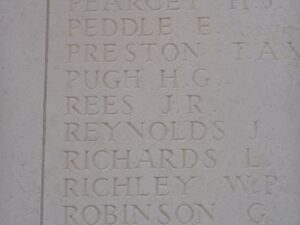
Richard Wells Rees, Private, 200879, Welsh Regiment. Richard was the son of William George and Sarah Rees, of New Houses, Upper William Street, Llanelli. He enlisted at Llanelli into the 1/4th Battalion, Welsh Regiment, which was the local Territorial Battalion, attached to 159 Brigade, 53rd (Welsh) Division. The Division landed at Cape Helles, Gallipoli, on 9 August 1915, and was immediately thrown into action, spending the next few days in isolated pockets, fighting against a Turkish counter-attack during the Battle of Sari Bair, and then at the Attack on Scimitar Hill. The Division remained here throughout the coming months, and suffered severe losses in manpower strength during the great November 1915 blizzard on Gallipoli, when its total strength was reduced to less than that of a full-strength Brigade. On 11 December 1915 the Division was evacuated to Mudros, and by 23 December 1915 were moved to Egypt. They remained on the Suez Canal Defences for the next twelve months, where it took part in operations against the Sultan of Darfur, and in March 1917 took part in the advance into Palestine. Richard was transferred into the 1/5th Battalion, Welsh Regiment in Palestine, and took ill and died in hospital at Cairo on 12 June 1918. He was 21 years old, and is buried at Cairo War Memorial Cemetery, Egypt.
Robert Rees, Private, 21947, South Wales Borderers. Robert was the husband of Elizabeth Rees, of 6, Upper Cross Row, Rhymney, Mon. He enlisted at Newport into the 11th Battalion, South Wales Borderers, which was attached to 115 Brigade, 38th (Welsh) Division. The Division had landed in France during December 1915 and had spent their first winter in the trenches near Armentieres. In June they marched south to the Somme, where they were tasked with the capture of Mametz Wood. The attack on the wood began on 7 July, but met with fierce resistance, and it took until 14 July to totally clear the wood. Robert was killed during the terrible fighting within Mametz Wood on 10 July 1916. He was 36 years old, and is commemorated on the Thiepval Memorial, France. (His links to Llanelli aren’t clear, but this is the only R Rees who died with the SWB).
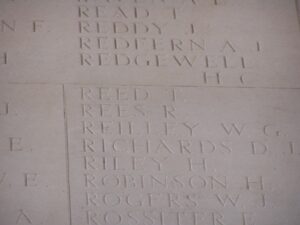
Thomas Rees, Lance Corporal, 12681, South Wales Borderers. Thomas was the son of David and Margaretta Rees, of 7, Erw Road, Llanelli, and the husband of Catherine Rees. He enlisted at Llanelli into the 4th Battalion, South Wales Borderers, which was attached to 40 Brigade, 13th (Western) Division. On 13 June 1915 the Division sailed for Alexandria, then took part in the Gallipoli campaign. On 8 January 1916, the Division was evacuated from Helles, and by 31 January was concentrated at Port Said, where they held forward posts in the Suez Canal defences. On 12 February, 1916 the Division began to move to Mesopotamia, and Thomas was killed here on 15 February 1917. He was 37 years old, and is commemorated on the Basra Memorial, Iraq. His brother Gwilym also fell.
Vivian Guest Rees, Private, 64723, Welsh Regiment. Vivian was the son of William and Annie Rees of 5, Goring Terrace, Llanelli. He worked at the National Provincial and Union Bank, at Carmarthen, and enlisted at Carmarthen in September 1916 into the 2/4th Royal Welsh Fusiliers. He was then transferred to the 7th Battalion, Welsh Regiment, and remained on home service. Vivian had taken ill during May 1918, and died at the VAD Hospital, at Holgate, Middlesbrough of pneumonia on 10 May 1918. He was 20 years old, and was buried at Box Cemetery, Llanelli.
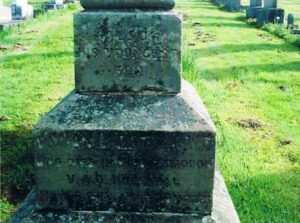
Willie Rees, Private, 810, Welsh Regiment. Willie was the son of William and Esther Rees, and the husband of Margaret Rees, of 19, Dolau Road, Llanelli. He enlisted at Llanelli into the 1/4th Battalion, Welsh Regiment, which was the local Territorial Battalion, attached to 159 Brigade, 53rd (Welsh) Division. The Division landed at Cape Helles, Gallipoli, on 9 August 1915, and was immediately thrown into action, spending the next few days in isolated pockets, fighting against a Turkish counter-attack during the Battle of Sari Bair. Willie returned home after the evacuation of Gallipoli, and died in a military hospital in Kent on 18 July 1916. He was 33 years old, and is buried at Box Cemetery, Llanelli.
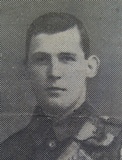
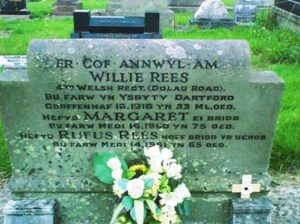
William Henry Sebastian Rees, Company Sergeant Major, 200742, Welsh Regiment. William was born at Devonport on 1 August 1894, the son of Major W. H. Rees and Mrs. E. A. Rees, of Palmer Avenue, Llanelli, and of 35C, The Promenade, Palmers Green, London. William enlisted into the Territorials in 1914, and at the outbreak of war joined the 1/4th Battalion, Welsh Regiment, which was the local Territorial Battalion, attached to 159 Brigade, 53rd (Welsh) Division. The Division landed at Cape Helles, Gallipoli, on 9 August 1915, and was immediately thrown into action, spending the next few days in isolated pockets, fighting against a Turkish counter-attack during the Battle of Sari Bair. The Division remained here throughout the coming months, and suffered severe losses in manpower strength during the great November 1915 blizzard on Gallipoli, when its total strength was reduced to less than that of a full-strength Brigade. On 11 December 1915 the Division was evacuated to Mudros, and by 23 December 1915 were moved to Egypt. They remained on the Suez Canal Defences for the next twelve months, where it took part in operations against the Sultan of Darfur, and in March 1917 took part in the advance into Palestine. William was 22 years old when he was killed during the First Battle of Gaza, on 26 March 1917, and is buried at Gaza War Cemetery, Israel.
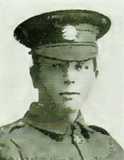
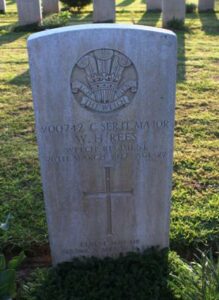
William James Rees, Private, 16356, South Lancashire Regiment. William was born at Llanelli in December 1884, the son of David and Elinor Rees. The family later moved to Highfield Old Rd., Melyncrythan, Neath, and William enlisted there into the army. He was posted to France on 10 March 1916, joining the 7th Battalion, South Lancashire Regiment, which was attached to 56 Brigade, 19th (Western) Division. The Division had been in France since July 1915, and moved to positions near Loos, where it took part in the opening attack of the Battle of Loos on 25 September 1915. William was taken ill over that first winter in France, being hospitalised on 29 March 1916, and died on 4 April 1916, aged 32. He is buried at Merville Communal Cemetery, France.
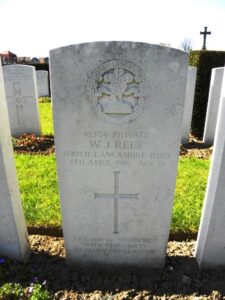
William Reginald Rees, Private, 5353, Welsh Regiment. William was the son of Rhys and Amy Rees, of Tanygraig, Pottery Road, Llanelli. He enlisted at Llanelli into the 1/4th Battalion, Welsh Regiment, which was the local Territorial Battalion, attached to 159 Brigade, 53rd (Welsh) Division. The Division landed at Cape Helles, Gallipoli, on 9 August 1915, and was immediately thrown into action, spending the next few days in isolated pockets, fighting against a Turkish counter-attack during the Battle of Sari Bair. The Division remained here throughout the coming months, and suffered severe losses in manpower strength during the great November 1915 blizzard on Gallipoli, when its total strength was reduced to less than that of a full-strength Brigade. On 11 December 1915 the Division was evacuated to Mudros, and by 23 December 1915 were moved to Egypt. William died here of appendicitis on 27 February 1916. He was 18 years old, and is buried at Cairo War Memorial Cemetery, Egypt.
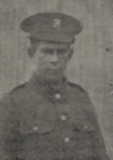
Harry Revell, Private, 16085, Devonshire Regiment. Harry was the son of William and Lydia Revell, of Newton Abbott, Devon, and worked for the GWR at Llanelli prior to the war, as a Fireman, with the Locomotive and Carriage Department. He enlisted at Llanelli into the 9th (Service) Battalion, Devonshire Regiment, which was attached to 20 Brigade, 7th Division. The Division landed at Zeebrugge on 6 October 1914, but the City was falling, and the Division moved to Ypres, where they became the first British Division to hold the city. They fought during the First Battle of Ypres, and helped stop the German advance through Belgium, and in March 1915 fought at the Battle of Neuve Chapelle. During May they fought at the Battle of Aubers Ridge, and at Festubert, before taking part in the Battle of Loos in September. Harry was killed at Loos on 30 September 1915, aged 21. He is commemorated on the Loos Memorial, France.
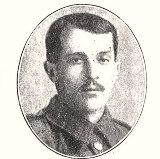
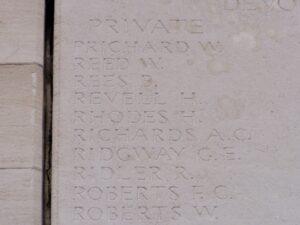
Daniel John Reynolds, Private, 260488, Gloucestershire Regiment. Daniel was the son of Daniel Reynolds, of 2, Panteg Row, Felinfoel. Prior to the war he resided with his sister, Mrs. Mary H. Edwards, of 67, Marble Hall Road, Llanelli. He enlisted at Newport into the Monmouth Regiment, and later transferred into the 12th Battalion, Gloucester Regiment. They formed part of 95 Brigade, 5th Division, which had been in France since 15 August 1914, and had fought in the retreat from Mons to the MArne, before moving to Ypres. Here they had fought at First and Second Ypres, then in 1916 fought at the Somme. During 1917 the Division fought during the Battles of Arras. On 7 September 1917, they were pulled out of the line again, and moved north to join the great offensive in Flanders- Third Ypres, or Passchendaele as it is better known. On 26 September they fought at the Battle of Polygon Wood, then at Broodseinde, which is where Daniel was killed in action on 4 October 1917, aged 35. He has no known grave, and so is remembered on the Tyne Cot Memorial, Belgium.

Robert Reynolds, Private, 20088, Welsh Regiment. Robert was born at Swansea, the son of John and Elizabeth Reynolds. The family had moved to 6, Pemberton Street, Llanelli by 1901, and Robert enlisted there in February 1915 into the 15th Battalion, Welsh Regiment, which was the Carmarthen Pals Battalion. At some time after this, Robert was transferred into the 2nd Battalion, Welsh Regiment, which was in France attached to 3 Brigade, 1st Division. Robert probably joined the battalion after it had taken part in the Battle of Loos in September 1915. The Division moved to the Somme in the summer of 1916, and it was here, during the Battle of Flers-Courcelette, that Robert was wounded. He died on 12 September 1916, aged 24, and is buried at Heilly Station Cemetery, Mericourt-L’Abbe, France.
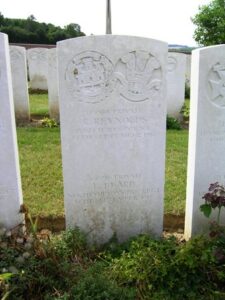
Ivor Towy Rhys, Driver, 730936, Royal Field Artillery. Ivor was the son of the Reverend Rhys Towy Rhys and Margaret Rhys, of Wem Villa, Resolven, Glamorgan. Rhys was from Llanelli, and Ivor returned there to work prior to the war. He served with D Battery, 102nd Brigade, Royal Field Artillery, which was attached to the 23rd Division. Ivor was killed at Ypres on 28 May 1917. He was 21 years old, and is buried at Railway Dugouts Burial Ground, Belgium.
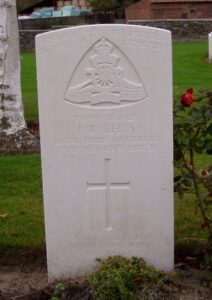
Daniel Richards, Driver, W/3950, Royal Field Artillery. Daniel was the son of Thomas and Jane Richards, of 33, Penallt Terrace, Llanelli. He enlisted at Llanelli into the Welsh Artillery, and went to France with B Battery, 121st Brigade, Royal Field Artillery, which was attached to the 38th (Welsh) Division. The entire Division moved to the Fleurbaix sector, where it was initiated into trench warfare. During June 1916 the Division marched south to the Somme, and on 7 July 1916 attacked Mametz Wood. The initial attack failed, and it was three days later, on 10 July, that a fresh attack was mounted. After two days of heavy hand to hand fighting within the wood, the Germans withdrew, and the battered Welshmen moved via Hebuterne to Boesinghe, on the Yser Canal, where it remained until launching its attack on Pilckem Ridge on 31 July 1917. Daniel was killed a month later, on 29 August 1917, while carrying a sack of mail up into the front line. He was 21 years old, and is buried at Bard Cottage Cemetery, Belgium.
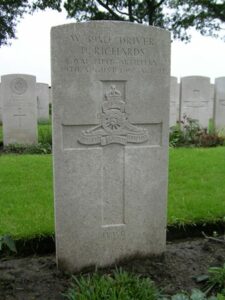
David Curtis Richards, Private, 17511, Royal Berkshire Regiment. David was born in Llandybie in 1890, the son of David Jacob Richards and Mary Ann Richards. Just before the war the family had moved to Barley Mow Hotel, Market Street, Llanelli. David worked as a shop assistant at Llanelli prior to enlisting at Brecon into the 3rd Battalion, South Wales Borderers on 24 January 1914. He then left the battalion and transferred to the Army Service Corps on 8 April 1914, but just six weeks later was discharged after being deemed as being unsuitable to serve in the Corps. David then re-enlisted at Lewes in Sussex, under the assumed name of David Curtis, into the 6th Battalion, Royal Berkshire Regiment, which was attached to 53 Brigade, 18th (Eastern) Division. The Division landed at Boulogne on 25 May 1915, and moved to the Somme area for trench initiation and training. The division moved to Bouzincourt by 3 August, then the 6th Berkshire’s marched to Daours for training before marching to Bray and on 22 August finally moved into the line near the village of Mametz to begin their first tour in the trenches. After several spells here the battalion moved into the trenches at La Boiselle the following month. David was then among a group of men temporarily sent to assist the 178th Tunnelling Company, Royal Engineers, which was busy tunnelling under the German lines to lay mines in preparation for the forthcoming Somme offensive. David was killed underground when the Germans blew a counter-mine on 20 October 1915. The body of the 25-year-old was recovered and he was buried in Norfolk Cemetery, Becordel-Becourt, France.
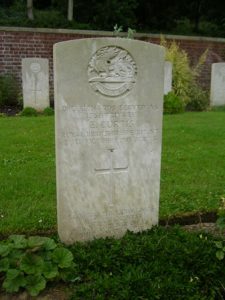
Frederick Charles Richards, Private, 43882, Royal Berkshire Regiment. Frederick was the son of George and Mary Richards, of Brixham, Devon. He worked at Llanelli prior to enlisting at Exeter into the Devonshire Regiment. Frederick was then posted to the 5th Battalion, Royal Berkshire Regiment, which was attached to 36 Brigade, 12th (Eastern) Division. The Division had moved to France at the end of May 1915, and had taken part in the Battle of Loos that year. During 1916 it fought on the Somme, and in 1917 fought at the Battle of Arras. It was on the Somme during the German spring offensive of 1918 and saw heavy fighting there. Later that year it was moved to the area south of Amiens, where it took part in the Battle of Amiens, and then moved back to Albert, taking part in the Battle of Albert on 22 August, pushing right across the wilderness of the old Somme battlefield, capturing Meaulte, Mametz, Carnoy, Hardecourt and Faviere Wood, which was reached after a week’s continuous fighting. Frederick was killed during the great advance, on 25 August 1918, aged 19. He is buried at Peronne Road Cemetery, Maricourt, France.
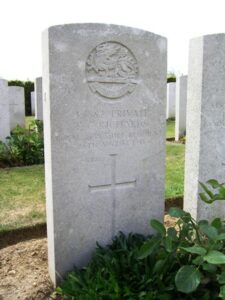
Ivor William Richards, Gunner, 200018, Royal Garrison Artillery. Ivor was the son of Richard and Elizabeth Richards, and the husband of Mary Richards (nee Davies), of 13, Ralph Street, Llanelli. He enlisted at Carmarthen on 13 March 1917, and served at home with the 1st Reserve Battery, Royal Garrison Artillery. Ivor was 19 years and four months old when he was discharged on 13 August 1918 as medically unfit, due to suffering from tuberculosis. Ivor died after discharge, on 10 October 1918, aged 19, and is buried at Box Cemetery, Llanelli. Ivor has recently been accepted for commemoration by the CWGC (January 2012), and his name will be added to the United Kingdom Book of Remembrance, which is held by the CWGC at their HQ at Maidenhead.
John Richards, Stoker, 4291S, Royal Navy. John was born on 22 August 1884, the son of William and Rachel Richards, of 8, Stanley Street, Llanelli, and the husband of Hannah Nilsson Richards, of 7A, Stepney Place, Llanelli. He served with the Royal Navy aboard the Battlecruiser HMS Indefatigable, which was based at Edinburgh, attached to the Battlecruiser Squadron of the Grand Fleet. On 31 May 1915 the Grand Fleet intercepted the German High Seas Fleet off Jutland, and engaged them in battle. This battle was to become known as the Battle of Jutland, and was the largest naval battle of all time. Indefatigable was unfortunately one of the first casualties of the battle. She was hit by shells from the German Battleship SMS Van Der Tann, which penetrated her deck, and blew up her ammunition, resulting in a massive explosion which sank Indefatigable in minutes. John was 31 years old when he was killed that day, and is commemorated on the Plymouth Naval Memorial, Devon.
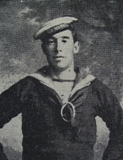
John Richards, Private, 54388, Welsh Regiment. John was the son of Edward and Mary Ann Richards, of 69, Ropewalk Road, New Dock, Llanelli. He enlisted at Llanelli into the army, and was posted to France early in 1917, joining the 16th Battalion, Welsh Regiment, which was attached to 115 Brigade, 38th (Welsh) Division. John joined the battalion at Boesinghe, north of Ypres. He fought in the Battle of Pilckem on 31 July 1917, where the Division successfully captured Pilckem Ridge. The 15th and 16th Welsh remained in the line over the coming weeks, and on 27 August 1917, the 16th Welsh made a badly planned assault on Eagle Trench, near Langemarck. John was killed that day. He was 20 years old, and is commemorated on the Tyne Cot Memorial, Belgium.
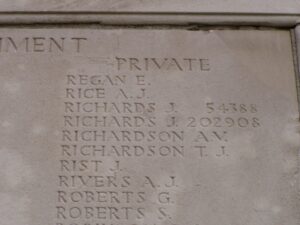
Stanley Richards, Private, 126133, Machine Gun Corps. Stanley was the son of James and Elizabeth Richards, of 37, Brynmouth Road, Llanelli. He originally enlisted at Llanelli into the Welsh Regiment, but was later posted to the 32nd Battalion, Machine Gun Corps, which was attached to the 32nd Division. At the end of December 1915 the Division was in France, and the following year took part in the opening of the Somme Offensive. They remained here over the winter, and in March 1917 followed the German Retreat to the Hindenburg Line. Their next major action was during the First Battle of Arras, after the Germans had launched their Spring Offensive on 21 March 1918. They then moved south, and took part in the Battle of Amiens, and took part in the Battle of Albert on 21 August. From here on the Allies were on the offensive, and the Division fought at the Battle of Bapaume, then at the Battle of the St Quentin Canal. The once impregnable Hindenburg Line was then broken, and the Division took part in the Battle of Beaurevoir, and the Battle of the Sambre, where they fought the Passage of the Sambre-Oise Canal. Stanley was killed just two days before the Armistice, on 9 November 1918, aged 19. He is buried at Maubege-Centre Cemetery, France.
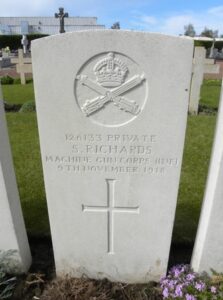
William Richards, Private, 14175, King’s Shropshire Light Infantry. William was born at Llanelli, and resided at Tylorstown prior to the war. He enlisted at Ferndale into the 7th Battalion, King’s Shropshire Light Infantry. The battalion landed at Boulogne on 28 September 1915, attached to 76 Brigade. The following month the battalion became attached to 8 Brigade, 3rd Division. In 1916 the Division fought at the Actions of the Bluff, and at the St Eloi Craters. They were then moved south, and fought there throughout the Battle of the Somme. In May 1917 the Division was at Arras, and fought at the First and Second Battles of the Scarpe, and at the Battle of Arleux and the Third Battle of the Scarpe, where they captured Roeux. Later that year they moved back to Ypres, where they fought in the Third Battle of Ypres, at the Battle of the Menin Road and the Battle of Polygon Wood. William was killed at Polygon Wood on 26 September 1917. He is commemorated on the Tyne Cot Memorial, Belgium.
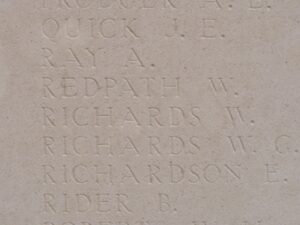
William Richards, Driver, 2250, Royal Field Artillery. William was the son of James and Emily Richards, of 17, Rock Street, Swansea. He worked at Llanelli prior to the war, and enlisted there into the Royal Artillery. William was posted to France with the 56th Division Ammunition Column, Royal Field Artillery, which was attached to the 56th (London) Division. William was wounded on the Somme, and died on 25 June 1916, aged 29. He is buried at Couin British Cemetery, France.
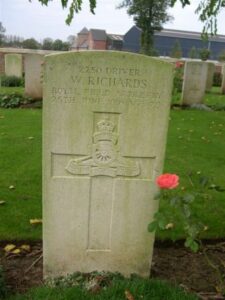
William John Richards, Rifleman, 485024, London Regiment. William was the son of Richard and Elizabeth Richards, of 53, Stepney Place, Llanelli. He joined the staff of Llanelli Post Office in 1911, and on 8 December 1915 enlisted at Llanelli into the 8th Battalion, London regiment, which was known as the Post Office Rifles. William was posted to France on 18 March 1917, where he joined the 12th Battalion (The Rangers), London Regiment, which was attached to 168 Brigade, 56th (London) Division. He joined the battalion on the Somme, in time to take part in the advance to the Hindenburg Line in March 1917 and the ensuing Battle of Arras. William was wounded here during the Third Battle of the Scarpe on 12 May, after being shot in the head, and was evacuated to the Base Hospital at Etaples for treatment. He died on 27 May 1917, aged 24, and is buried at Etaples Military Cemetery, France.
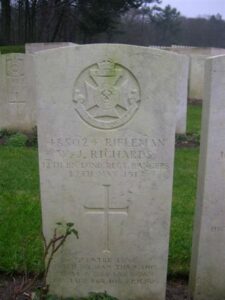
Herbert Gladstone Ridge, Sapper, 915, Royal Engineers. Herbert was born at Manchester in 1886, the son of Alfred Ridge. By 1901 the family was living at Taunton, and it was probably there that Herbert joined the Great Western Railway. By 1911, Herbert was lodging at 1, Alma Road Avenue, Kingston, Bristol, working as a Piano Tuner. Prior to the outbreak of war, Herbert was living at 36, Gilbert Road, Llanelli, and was working for the Great Western Railway, based at Llanybydder. He enlisted at Llanelli on 24 July 1915 into the Welsh Field Company, Royal Engineers, and was posted to the Mediterranean Expeditionary Force, which was in Egypt. After a year on active service in Egypt, Herbert became ill, and returned home on 2 October 1916. He died at Taunton on 18 March 1918, aged 31, and was buried at Taunton (St. Mary’s) Cemetery. Herbert has only recently been accepted for commemoration by the CWGC.
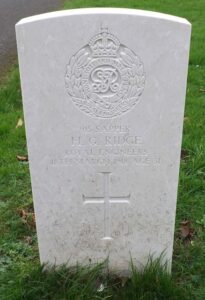
James Riley, Private, 22663, Welsh Regiment. James was the son of Henry Riley, of 6, Strathblaine Rd., St. John’s Hill, Clapham Junction, London. He enlisted early in 1915, and served with the 2nd Battalion, Welsh Regiment, which was in France, attached to 3 Brigade, 1st Division. James was wounded at Aubers, shortly after arriving in France, and died on 22 April 1915, aged 18. He is buried at St. Sever Cemetery, Rouen, France.
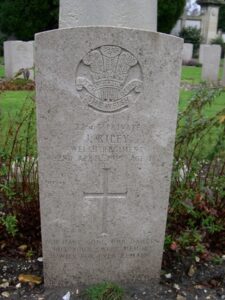
Arthur Roberts, Private, 201032, Welsh Regiment. Arthur was born at Tenby, the son of Henry James Roberts and Agnes Roberts. The family had moved to 19, Upper Water Street, Llanelli by 1901, and Arthur enlisted there into the 4th Battalion, Welsh Regiment. He doesn’t look to have served overseas, but died of sickness on 13 July 1918, aged 22. Arthur is buried at Old Road Church Cemetery, Llanelli.
Tom Roberts, Lieutenant, Cheshire Regiment. Tom was the son of John Wells Roberts and Caroline Martha Roberts, of Swansea Road Nurseries, Llanelli. Tom was educated at Aberystwyth, and became a teacher in London prior to the war. He gained a commission into the 3rd Battalion, Cheshire Regiment, and was sent to France in March 1915, joining the 2nd Battalion, Cheshire Regiment at Ypres on 21 March. He was gassed during the Battle of Bellewaarde on 24 May 1915. Instead of remaining at the Aid Post, he returned to lead his men in the defence of a heavy German attack on their positions, and was shot in the chest and leg and killed that same day. Tom was 22 years old, and is buried at Bedford House Cemetery, Belgium. He left behind a rich legacy of information in letters which he had sent to his parents, describing his experiences during his short time at the front.
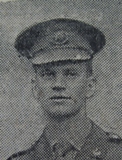
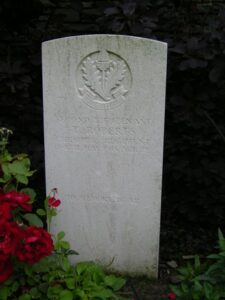
Victor George Roberts, Second Lieutenant, Welsh Regiment. Victor was born in 1897, the son of Joseph Roberts and Annie Roberts (nee Bowen), of Y Goedwig, Lakefield Road, Llanelli. He had been a Welsh schoolboy rugby international before beginning to play in the backs for the Scarlets. Victor joined the Inns of Court OTC on 2 January 1916 and was commissioned Second Lieutenant into the 4th Battalion, Welsh Regiment on 28 February 1917. Victor was drafted to France and was posted to the 15th Battalion, Welsh Regiment, the Carmarthen Pals battalion, which was at Ypres attached to 114 Brigade, 38th (Welsh) Division. The division had taken over the Canal Bank sector at Boesinghe the previous year, following its assault on Mametz Wood. The infantry battalions of the Division then began carrying out the normal pattern of rotation in the trenches, four days in the front, four in support and four in reserve, whilst also working on trench improvement, digging new trenches, and also carrying out regular patrols and trench raids. The Third Battle of Ypres was due to open on 31 July 1917 and in the days leading up to the battle, the 15th Welsh were holding positions in the Zwaanhof sector. At 17.00 on 27 July 1917, two platoons from the 15th Welsh were sent out to check the German positions. They found no Germans in the front line, but their support and reserve positions were strongly held, and here the patrols met with strong opposition and were forced to hurriedly withdraw. The Germans retaliated to this by hitting the front-line trenches with an artillery barrage, mixing up some gas shells into the bombardment for good effect, and the battalion suffered heavy casualties as a result, with the war diary showing figures of three officers and twenty-one other ranks killed, three officers and sixty-one other ranks wounded, and a further thirteen men missing. Victor was among the officers killed that day. The 20-year-old is buried alongside many of his comrades in Bard Cottage Cemetery, Boesinghe, Belgium.
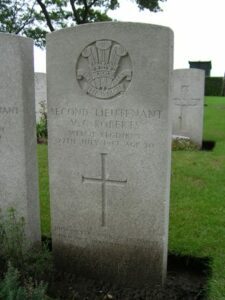
William Henry Roberts, Gunner, 3248, Royal Field Artillery. William was the son of William and Eliza Roberts, of Marble House, Marble Hall, Llanelli. He enlisted at Llanelli into the Royal Garrison Artillery, and was posted to France with ‘A’ Battery, 84th Brigade, RGA, which was attached to the 18th (Eastern) Division. On 25 May 1915 the Division landed in Boulogne, and didn’t see its first major action until July, 1916 when it took part in the Battle of Albert. They then fought at the Battle of Bazentin, where they captured Trones Wood, and moved on to the Battle of Delville Wood. In October they took part in the Battle of the Ancre Heights, and captured Schwaben Redoubt, and helped capture Regina Trench. William was killed here on 7 March 1917. He was 42 years old, and is buried at Pozieres British Cemetery, Ovillers-La-Boiselle, France.

George John Robinson, Private, 46055, King’s Liverpool Regiment. George was the son of Charles Collett Robinson and Mary Ann Robinson, of Wolvercote, Oxford, and the husband of Hannah Jane Robinson, of Hook Norton, Banbury. He probably worked at Llanelli prior to the war, and enlisted there into the King’s Liverpool Regiment. George was at some time transferred to a Labour Battalion of the Liverpool Regiment. He was wounded during the Battle of the Menin Road, and died on 22 September 1917, aged 47. George is buried at Dozinghem Military Cemetery, Belgium.
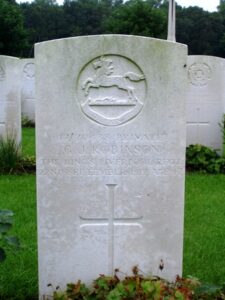
Alan Whitlock Nicholl Roderick, Lieutenant, Welsh Regiment. Alan was the third son of William and Ella Augusta Buckley Roderick, of Goodig, Pembrey. He served as a Lieutenant with the 4th Battalion, Welsh Regiment, which had formed at Carmarthen in August, 1914. They were later attached to 159 Brigade, 53rd (Welsh) Division, and sailed from Devonport in July 1915 arriving at Mudros by 5 August, 1915. From here they moved to Gallipoli, landing on 9 August 1915. Here they immediately faced the chaotic leadership that was to lead to the ultimate failure of the campaign, and spent the next few days in isolated pockets, fighting against a Turkish counter-attack. Alan was killed in action here on 10 August 1915, and is remembered on the Helles Memorial, Gallipoli. His brothers Hume and John Roderick also fell.
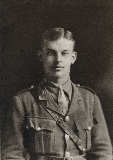
Hume Buckley Roderick, Captain, Welsh Guards. Hume was the eldest son of William and Ella Buckley Roderick, of Goodig, Pembrey. Born in 1887, he was educated at Parkfield School, Hayward’s Heath, and at Rugby, where he was a member of the Cricket XI. He later qualified as a Solicitor, and was a member of the firm of Roderick and Richards, Llanelli. At the outbreak of war, Hume was a Captain with the 4th Welsh, stationed at Pembroke Dock. He went with the Welsh to Gallipoli, attached to the 53rd (Welsh) Division, but was invalided home due to illness. Hume then returned to Egypt to rejoin his Battalion in 1916, and later that year returned home again, to take up a Commission in the Welsh Guards. Meanwhile, whilst back in the UK, he married Barbara Garnons-Williams, daughter of the late Lieutenant-Colonel R. D. Garnons-Williams, who had been killed at Loos the previous year. The couple set up home at Tegfan, Devynock, Breconshire. Hume joined his new Battalion on the Western Front in December 1916 and took command of No. 3 Company, 1st Battalion, Welsh Guards. In July 1917 Hume was wounded at Ypres, but remained at the front, and moved with the Battalion from Ypres to positions near Cambrai, where they fought at the Battle of Cambrai throughout November and December 1917. Hume was killed in action at Cambrai on 1 December 1917, whilst leading his Platoon on a charge against a German Machine Gun Post. He was 30 years old, and is buried at Gouzeaucourt New British Cemetery, France. His brothers Alan and John Roderick also fell.
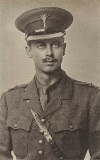
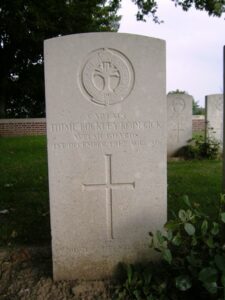
John Victor Tweed Roderick, Lieutenant, Coldstream Guards. John was the son of William Buckley Roderick and Ella A. Roderick, of 45, Brunswick Gardens, Kensington, London. He had been commissioned into the Coldstream Guards, and served with the 1st Battalion, which was part of 1st Brigade, Guards Division. The Division saw its first major action during the Battle of Loos on 25 September 1915. In July 1916 the Division moved to the Somme, and fought here for the remainder of the year. In March 1917 took part in the advance caused by the German Retreat to the Hindenburg Line. Later that year they moved north to Ypres, and fought during the Third Battle of Ypres. November saw them move south again, where they took part in the Battle of Cambrai. They remained in the area over the final winter of the war, and were stationed near Gouzeaucourt when the German Spring Offensive hit the area on 21 March 1918, and made a fighting retreat west. After this, the German Offensive petered out on the Somme. On 21 August 1918 the British launched an attack on the Somme, and this is where John was killed in action on 21 August 1918. He was 21 years old, and is buried at Bac-Du-Sud British Cemetery, Baillieulval, France. His brothers Alan and Hume also fell.
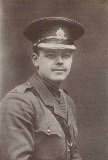
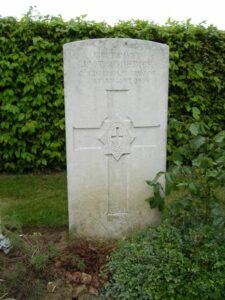
George Lewis Rogers, Private, 20463, Border Regiment. George was the son of John and Ann Rogers, of Caerelms, Llanelli. He was the secretary of London Irish Rugby Club, and of the London Olympic Committee prior to the war. George enlisted at Carlisle into the 1st Battalion, Border Regiment, which was attached to 87 Brigade, 29th Division. The Division moved to Gallipoli via Egypt, landing on 25 April 1915. They remained here until evacuation to Egypt on 11 January 1916 and then moved to the Western Front on 15 March 1915. The Division took part in its first major action in France during the 1916 Somme Offensive, and fought at the Battles of Albert and Le Transloy, suffering heavy casualties. George was wounded here, and died on 28 October 1916. He was 34 years old, and is buried at Heilly Station Cemetery, France.
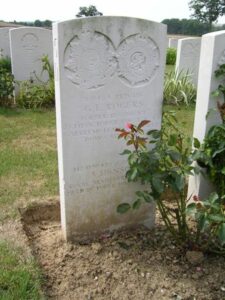
Thomas Rogers, Private, 20640, Welsh Regiment. Thomas was the son of David and Hannah Rogers, of 2, Singleton Terrace, Llansaint, Kidwelly. He was one of the original men who enlisted at Llanelli into the 15th Battalion, Welsh Regiment, who were raised as the Carmarthen Battalion, and trained at Rhyl. During 1915 the battalion moved to Winchester, and became part of 114 Brigade, 38th (Welsh) Division. The Division had landed in France during December 1915, and had spent their first winter in the trenches near Armentieres. In June they marched south to the Somme, where they famously captured Mametz Wood. The Division suffered terrible casualties at Mametz, and were taken out of the line, and moved to Ypres to rebuild. Thomas was killed in action here during a trench raid on 30 April 1917, aged 26. He is buried at Perth Cemetery (China Wall), Belgium.
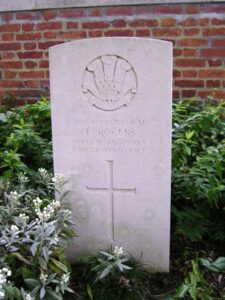
Douglas Rollason, Driver, W/4905, Royal Field Artillery. Douglas was the son of Enoch and Elizabeth Rollason, of Chester, and the husband of Dora Rose Rollason, of 47, Stafford Street, Llanelli. He enlisted at Newtown into the Welsh Royal Artillery, and was posted to France with D Battery, 121st Brigade, Royal Field Artillery, which was attached to the 38th (Welsh) Division. Douglas served with the Division throughout the war, and took part in its epic assault on Pilckem Ridge during July and August 1917. Over the winter of 1917-18 the Division was stationed around Armentieres. Douglas was killed here on 11 March 1918, aged 28. He is buried at Erquinghem-Lys Churchyard Extension, France.
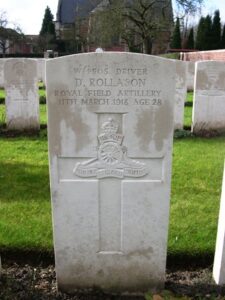
Charles Vaughan Rose, Private, 10576, Cavalry. Charles was the son of Jehu and Emily Rose, of Holly Farm, Freshford, Bath. He worked for the GWR at Llanelli prior to the war, and enlisted there into the 1st (Royal) Dragoons. At the outbreak of war the regiment was stationed at Potchefstroom, South Africa, and on 27 August 1914 sailed from Cape Town, arriving in England on 19 September 1914, where it joined 6th Cavalry Brigade, 3rd Cavalry Division. The Division landed at Ostend on 8 October 1914, and remained on the Western Front for the duration of the war. Charles was killed in action during the German Spring offensive on the Somme on 24 March 1918, aged 22. He is commemorated on the Pozières Memorial, France.
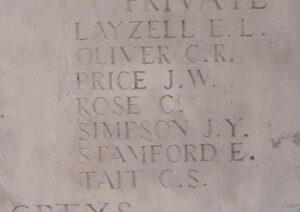
Joseph Rose, MM, Sergeant, 80455, Royal Field Artillery. Joseph was born at Bristol, the son of Thomas and Margaret Rose. He had resided at Llanelli, where he worked as a Collier, before moving to Carmarthen, where he worked at the Hospital. He enlisted there into the Royal Field Artillery on 14 August 1914, and was posted to France with D Battery, 63rd Brigade, RFA, which was attached to the 12th (Eastern) Division. He returned home on leave in 1917, and married Mary Evans, of Laurel Cottage, Johnstown, Carmarthen, on 8 July before returning to the front. Joseph was killed during the Battle of Cambrai, on 1 December 1917, aged 27. He is buried at Péronne Communal Cemetery Extension, France. He was the holder of the Military Medal, and had been Mentioned in Despatches twice.
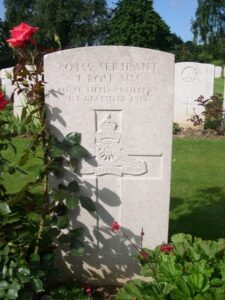
Frederick Lewis Rowlands, Gunner, 113090, Royal Field Artillery. Frederick was the son of William and Elizabeth Rowlands, of Llangendeirne. He had lived at 26, Stepney Place, Llanelli prior to the war, and worked for the GWR. He enlisted there into the Royal Field Artillery, and was posted to France with C Battery, 64th Brigade, RFA, which was attached to the 12th (Eastern) Division. Frederick survived the war, but died of influenza on 19 January 1919, aged 33. He is buried at Marquette Communal Cemetery, France.
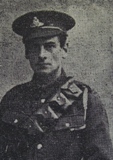
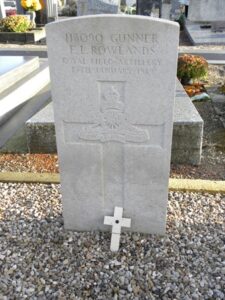
Griffith Ashton Rowlands, Private, 266478, Royal Welsh Fusiliers. Griffith was the son of John and Margaret Rowland, of Llanrug, Carnavonshire. He worked as a Miner at Llanelli prior to the war, and lived at 62, Biggyn Road, Llanelli. Griffith enlisted there on 11 December 1915 into the Royal Garrison Artillery, but on 20 October 1916 was posted to the 1/6th Battalion (Caernavon & Anglesey), Royal Welsh Fusiliers, which was attached to 158 Brigade, 53rd (Welsh) Division, and took part in the advance into Palestine from March 1917. Griffith was attached to the 48th Labour Corps when he took ill with appendicitis, and died in hospital at Cairo on 12 October 1917, aged 28. He was buried at Cairo War Memorial Cemetery, Egypt.
William Malcolm Rowlands, Sergeant, 3161, Welsh Regiment. William was son of Edward Isaac and Elizabeth Rowland, of 14, Sunninghill Terrace, Llanelli. He enlisted at Llanelli into the 1/4th Battalion, Welsh Regiment, which was the local Territorial Battalion, attached to 159 Brigade, 53rd (Welsh) Division. The Division landed at Cape Helles, Gallipoli, on 9 August 1915, and was immediately thrown into action, spending the next few days in isolated pockets, fighting against a Turkish counter-attack during the Battle of Sari Bair. William was killed here while advancing along a gulley on 10 August 1915, aged 28. He is commemorated on the Helles Memorial, Gallipoli.
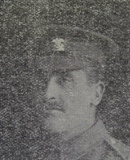
Wilfred George Ruck, Private, 19201, Gloucestershire Regiment. Wilfred was the son of William and Mary Ruck, of 8, Keynsham St., Cheltenham. He had worked as a Carter at Llanelli prior to the war, and enlisted there into the army. Wilfred was posted to the 2/5th Battalion, Gloucestershire Regiment, which was attached to 184 Brigade, 61st (2nd South Midland) Division. The Division moved to France during 21 May 1916, moving to positions at Fromelles, and took part in the disastrous attack on 19 July 1916 at Fromelles. In March 1917 the Division followed the German retreat to the Hindenburg Line. Later that year it fought at the Third Battle of Ypres. The Division then moved south, and fought in the Battle of Cambrai. During March 1918 the Division was holding the forward zone of defences in the sector northwest of Saint Quentin, in the area of Ham and lost many men as it fought a chaotic but ultimately successful withdrawal back over the Somme crossings over the next ten days. After suffering heavy casualties, the Division was moved to Flanders to rest, but the Germans launched the second phase of their offensive here just weeks later, seeing the Division in the thick of the action again, during the Battle of Estaires, the Battle of Hazebrouck, and the Battle of Bethune. The Division was again used during the great offensive of August 1918 onwards, and took part in the Advance in Flanders. Wilfred was killed during the Final Advance in Artois, on 30 September 1918. He was 21 years old, and is buried at Laventie Military Cemetery, La Gorgue, France.
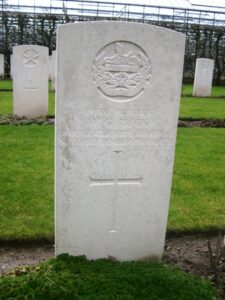
Austin Francis Ryan, Private, 6740, Royal Munster Fusiliers. Austin was the son of Mrs. Ryan, of Fanore, Ballyvaughan, Co. Clare. He lived at Llanelli prior to the war, and enlisted there into the army. Austin then went back to Ireland, where he joined the 3rd Battalion, Royal Munster Fusiliers, which was a training reserve battalion. Austin became ill, and died on 9 June 1916, aged 22. He is buried at Cobh Old Church Cemetery, Ireland. Many thanks to Margaret, at Cobh Museum, for the photograph.
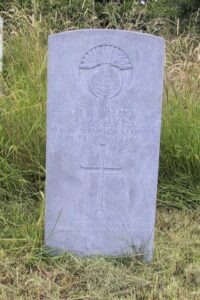
Arthur Samuel, Private, 75208, Royal Welsh Fusiliers. Arthur was the son of David and Mary Ann Samuel, of 9, Spring Gardens, Llanelli. He enlisted there into the 4th Welsh, and was posted to France early in 1918, where he joined the 2nd Battalion, Royal Welsh Fusiliers. The battalion had joined 115 Brigade, 38th (Welsh) Division in February 1918, before moving to positions north of Albert on the Somme. On 21 August 1918 the Division began to cross the River Ancre, capturing Thiepval Ridge and Pozières before pushing towards Longueval and Sailly-Saillisel. Arthur was killed during the advance, on 1 September 1918, aged 19. He is commemorated on the Vis-En-Artois Memorial, France. His brother Sydney also fell.
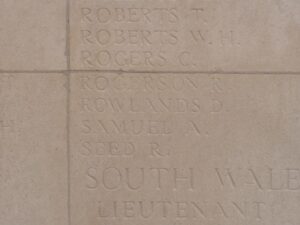
James Roscoe Samuel, Second Lieutenant, North Staffordshire Regiment. James was born in 1893, the son of James Samuel and Elizabeth Samuel (nee Price), of 4, Coldstream Street, Llanelli. James was educated at Llanelli Intermediate School and had played rugby and cricket for the school. His father, a former professional soldier, died on 10 May 1915. James followed in his footsteps and enlisted into the King’s Shropshire Light Infantry, serving in the ranks before being commissioned as Second Lieutenant into the North Staffordshire Regiment. He was then drafted to Mesopotamia on 4 July 1916, where he joined the 7th Battalion, North Staffordshire Regiment, which was attached to 39 Brigade, 13th (Western) Division. The British had sent a large force to Mesopotamia in the spring of 1916 to secure the oilfields and also to relieve the besieged troops of General Townshend at Kut. This heralded the opening of a theatre of war that was to see more casualties suffered by sickness and disease than in action. James was killed in action in Mesopotamia just after the Second Battle of Kut, on 25 January 1917. The 24-year-old is buried at Amara War Cemetery, Iraq.
Sydney Samuel, Private, 200928, Welsh Regiment. Sydney was the son of David and Mary Ann Samuel, of 9, Spring Gardens, Llanelli. He served with the 1/4th Battalion, Welsh Regiment, which was the local Territorial Battalion, attached to 159 Brigade, 53rd (Welsh) Division. The Division landed at Cape Helles, Gallipoli, on 9 August 1915, and was immediately thrown into action, spending the next few days in isolated pockets, fighting against a Turkish counter-attack during the Battle of Sari Bair. The Division remained here throughout the coming months, and suffered severe losses in manpower strength during the great November 1915 blizzard on Gallipoli, when its total strength was reduced to less than that of a full-strength Brigade. On 11 December 1915 the Division was evacuated to Mudros, and by 23 December 1915 were moved to Egypt. They remained on the Suez Canal Defences for the next twelve months, where it took part in operations against the Sultan of Darfur, and in March 1917 took part in the advance into Palestine. Sydney survived the war, and was still in Egypt with the 4/5th Welsh when he took ill and died on 24 May 1919, aged 26. He is buried at Alexandria (Hadra) War Memorial Cemetery, Egypt. His brother Arthur also fell.
Thomas Samuel, Rifleman, S/3567, Rifle Brigade. Thomas was the son of Evan and Hannah Samuel, of Llanelli. He married Elizabeth Ann Griffiths in 1905, and the couple set up home at 7, Sandy Gate, Llanelli. Thomas enlisted at Cardiff into the army, and was posted to the 7th Battalion, Rifle Brigade, which was in France attached to 41 Brigade, 14th (Light) Division. The Division was to see its first action during the Action of Hooge, where the Division were the first to be attacked by the German use of flamethrowers. They then fought at the Second attack on Bellewaarde. In July, 1916 they moved to the Somme, and fought at the Battle of Delville Wood, and then the Battle of Flers-Courcelette. Thomas was wounded on the Somme, and brought home, where he died at King George’s Hospital, London on 26 August 1916, aged 32. He was buried at Capel Newydd Calvinist Methodist Chapelyard, Llanelli.
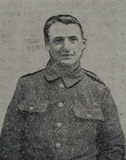
James Joseph Sanders, Lance Corporal, 706212, Canadian Infantry. James was born on 14 January 1875, the son of John and Mary Sanders, of Fleet Marston, Aylesbury, Bucks, England. He was the husband of Catherine Sanders, of Westfield House, Coldstream Street, Llanelli. James had lived in Canada for several years prior to the war, and enlisted at Victoria, British Columbia into the 103rd Battalion, Canadian Infantry, which was a Feeder Battalion for units at the front. James died after the armistice, on 25 February 1919, aged 44, and is buried at Box Cemetery, Llanelli.
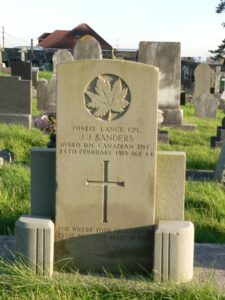
William John Saunders, Private, 1669, Welsh Regiment. William was the son of David Saunders and Ann Saunders (nee Lewis), of Caerelms, Llanelli. He married Elizabeth Ann Thomas in 1905, and the couple lived at Wern Road, Llanelli, and had worked as a Coal Hewer and as a Tinman prior to the war. He enlisted at Llanelli at the outbreak of war into the 2nd Battalion, Welsh Regiment, which was in France attached to 3 Brigade, 1st Division and joined the battalion in France on 23 November 1914. The Division had been one of the first to arrive in France, fighting at the Battle of Mons, and taking part in the retreat to the Marne, where the Germans were stopped. They then fought at the Aisne, and at Chivy, before being moved north to Ypres. Here they fought at the First Battle of Ypres, where they again stopped the German Offensive, before wintering in Flanders. William was killed near Givenchy on 28 December 1914, aged 31. He is commemorated on the Le Touret Memorial, Richebourg L’Avoue, France.
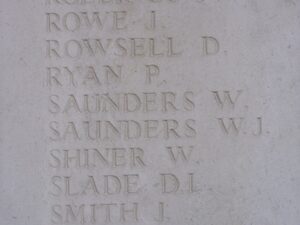
Frederick Harold Savage, Private, 368304, Royal Army Medical Corps. Frederick was born at Llanelli in March 1895, the son of William and Emma Savage. The family later resided at 6, Wellington Street, Swansea. Frederick had served with the 1st Welsh Howitzer Battery for four years prior to the war, before being declared medically unfit. He re-enlisted at Swansea on 7 June 1915into the 1/3rd Welsh Field Ambulance, Royal Army Medical Corps, which was attached to the 53rd (Welsh) Division. The Division sailed from Devonport in July 1915, and arrived at Mudros on 5 August 1915. From here they moved to Gallipoli, landing on 9 August 1915. Here the Division was immediately thrown into action, and spent the next few days in isolated pockets, fighting against a Turkish counter-attack during the Battle of Sari Bair, then the ensuing Attack on Scimitar Hill. The Division remained here throughout the coming months, and suffered severe losses in manpower strength during the great November 1915 blizzard on Gallipoli, when its total strength was reduced to less than that of a full-strength Brigade. On 11 December 1915 the Division was evacuated to Mudros, and by 23 December 1915 were moved to Egypt. They remained on the Suez Canal Defences for the next twelve months, and in early 1917 moved into Palestine, where they remained for the duration of the war, fighting at the Battles of Gaza, and successfully capturing Jerusalem. Frederick was wounded while the Division was taking part in operations in the Jordan Valley. He died from wounds received during an enemy air raid on 11 April 1918, aged 20, and is buried at Jerusalem War Cemetery, Israel.
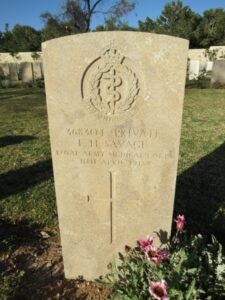
Charles Dalkeith-Scott, Lieutenant, Canadian Infantry. Charles was born at Llanelli on 20 August 1889, the son of Captain Dalkeith Martin Scott of the Carmarthenshire Constabulary, and of Amy Dalkeith Scott. The family later moved to 47, Rivers Street, Bath. Charles was educated at Bath College, where he was in the first Rugby XV, and also for several years served in the Cadet Corps. On leaving college he took up work in Vancouver Island, and lived there for six years prior to the war, being employed by Mr. A.W. Hanham, Quamichan, and the V.I. Nurseries, Somenos. He enlisted in September 1914 into the 16th Battalion, Canadian Infantry as a private, and arrived in France in October 1914. Charles was subsequently commissioned in January 1916 into the 15th Battalion, CWF, before being wounded and volunteering to serve with the Royal Flying Corps. After gaining his pilots wings, Charles was attached to 70 Squadron, Royal Flying Corps. On 30 September 1917 Charles was flying his Sopwith Camel, serial B2398 over the Houthulst Forest when he was attacked by a large formation of German Albatros scouts. After a gallant fight, his aeroplane was driven down, killing Charles. He was 28 years old when he died that day, and is commemorated on the Arras Flying Services Memorial, France.
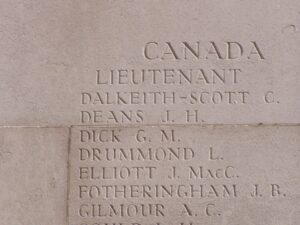
Francis Charles Dudley Scott, Lieutenant, Royal Air Force. Francis was the son of William and Ellen Scott, of Edgehill Lodge, Enfield, Middx. He had lived at Llanelli prior to enlisting into the 9th Battalion, London Regiment, and landing in France on 4 November 1914. Francis was commissioned into the Durham Light Infantry in August 1915, before volunteering to join the Royal Flying Corps. He gained his flying certificate on 25 April 1917, and joined 62 Squadron, RFC in France. On 4 November 1918 Francis was flying a Bristol F2b, serial D7948, near Mons, when he came into contact with two German aircraft. He shot one down, but his aircraft was damaged, and crashed to earth, killing Francis and his Observer, Lieutenant Rigby. Francis was 23 years old. Both men are commemorated on the Arras Flying Services Memorial, France.
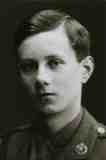
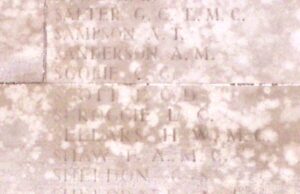
George Edward Scott, Private, 3016, Welsh Regiment. George was born at Bristol in 1892, the son of John Scott and Mary Ann Scott (nee Lovell). By 1901 the family had moved to 4, Bank Buildings, Llandeilo, where George and his brothers and sisters were educated. George and his brother John had played rugby for Llandeilo. By the outbreak of war the family had moved to 37, Victoria Street, Llandovery. George worked as a mason and following his marriage to Janet Jones at Llandovery on 22 August 1913 the couple moved to 16, Mansel Street, Pembrey. George then began playing rugby at full-back for the Scarlets. He returned home and enlisted at Llandovery into the 1/4th Battalion, Welsh Regiment soon after the outbreak of war. The battalion was the local Territorial unit and mobilised for war at Carmarthen in August 1914, as part of South Wales Brigade, Welsh Division and moved to Tunbridge Wells until the end of the month, before moving to Scotland to man the Forth and Tay Defences. On 17 April 1915 the battalion moved to Bedford, joining 158 Brigade, 53rd (Welsh) Division. On 19 July 1915 the entire Division sailed from Devonport for Imbros and on 9 August 1915 landed at Suvla Bay. The infantry moved off the beaches across the Salt Lake, under shellfire, into the scrub covered Chocolate Hill, but due to a lack of maps and no knowledge of the terrain, many of the units became disorientated, and the situation became chaotic. George was wounded soon after and was evacuated to a Hospital Ship anchored off-shore, where he died of his wounds at sea on 14 August 1915. The 23-year-old was buried at sea, so is commemorated on the Helles Memorial, Gallipoli. His brother John had been killed just three days earlier, whilst their father John drowned on active service at Port Talbot.
Philip Llewellyn Searle, Driver, 448104, Royal Engineers. Philip was born in 1893, the son of Edwin Searle and Mary Jane Searle (nee Wilmott), of Chorlton, Carnglas Road, Sketty, Swansea. He worked at Llanelli prior to the war and had enlisted in the town into the Welsh Field Company, Royal Engineers. Philip had embarked for the Mediterranean in October 1915, seeing service in Gallipoli, Egypt and in Palestine with the 53rd (Welsh) Division over the coming years. He was invalided back to Britain at some time and was transferred to the Depot Company, Royal Anglesey Royal Engineers at Beaumaris. Phillip became ill towards the end of the war and died of influenza at Beaumaris on 3 November 1918. The body of the 25-year-old was conveyed home and he was buried in Bethel Welsh Congregational Chapelyard at Sketty.
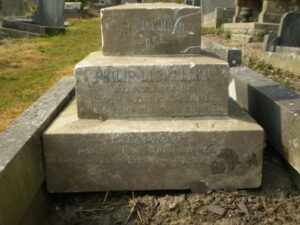
Thomas Sellick, Private, M/315348, Royal Army Service Corps. Thomas was the son of James and Mary Sellick, of Magor, and the husband of Catherine Sellick (nee Hopkins), of 14, Richard Street, Llanelli. He enlisted at December in December 1915, and became a Driver with the Motor Transport Section of the Army Service Corps. On 30 April 1917 Thomas embarked for East Africa. He became ill, and died of dysentery on 25 January 1918, aged 37, and is buried at Durban (Stellawood) Cemetery, South Africa.
James Selwood, Private, 260403, Gloucestershire Regiment. James was the son of Rufus James Selwood and Alice Kate Selwood, of 12A, Katie Street, Blaengarw, Bridgend. His links to Llanelli are unclear, but he resided at Goodwick prior to the war, and enlisted at Fishguard into the Monmouthshire Regiment. James was later transferred into the 12th Battalion, Gloucestershire Regiment, which was attached to 95 Brigade, 32nd Division. At the end of December 1915 the Division was in France, and the following year took part in the opening of the Somme Offensive, fighting at the Battle of Albert, the Battle of Bazentin, the Battle of the Ancre and the resulting Operations on the Ancre. They remained here over the winter, and in March 1917 followed the German Retreat to the Hindenburg Line. Later that year the Division moved to Ypres, and James was killed there on 4 October 1917. He was 18 years old, and is commemorated on the Tyne Cot Memorial, Belgium.
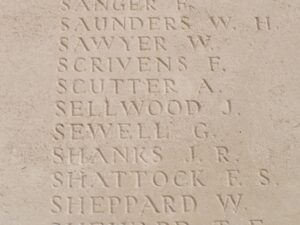
Arthur James Sherwood, Sapper, 197233, Royal Engineers. Arthur was the son of Wyndham Henry and Lelia French Sherwood (nee Collacott), of Mansel House, Highfield, Llanelli. He enlisted at Llanelli into the Royal Field Artillery, but was posted to France with ‘B’ Special Company, Royal Engineers, which was a specialist ‘Gas Company’, expert in the handling and delivery of poison gas. Arthur was wounded during the advance on the Hindenburg Line, and died that same day, on 14 October 1918. He was 27 years old, and is buried at Duisans British Cemetery, Etrun, France. His brother Ernest also fell.
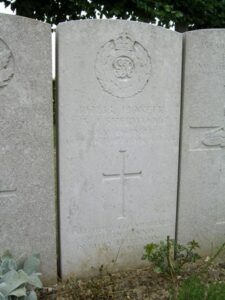
Ernest William Sherwood, Seaman, Mercantile Marine. Ernest was born in 1898, the son of Wyndham Henry and Lelia French Sherwood, of 3, Talbot Street, Llanelli. He volunteered to serve with the Mercantile Marine, and gained an apprenticeship aboard the sailing barque Inveramsay. On 27 April 1917 Inveramsay was sailing from Gulfport for Freeland with a cargo of pine when she was torpedoed and sunk by the German submarine U-62, with the loss of all her crew. Ernest was just 18 years old. He has today, 9 April 2014, been accepted for commemoration by the CWGC, who will be adding his name to the Tower Hill Memorial, London. His brother Arthur also fell.
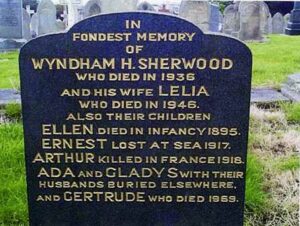
Thomas Simmonds, Private, 11831, Welsh Regiment. Thomas was born at Lydney, Gloucester. He enlisted at Llanelli into the 8th Battalion, Welsh Regiment, which was the Pioneer battalion to the 13th (Western) Division. On 13 June 1915 the Division sailed for Alexandria, and moved to Mudros before being landed at Cape Helles, Gallipoli from 6 July 1915, relieving the 29th Division. Thomas was killed at Gallipoli, during the Battle of Sari Bair, on 8 August 1915. He is commemorated on the Helles Memorial, Gallipoli.
James David Simpson, Private, 15060, South Wales Borderers. James was born at Haverfordwest in 1895, the son of James and Jessie Simpson. The family later resided at 55, Old Castle Road, Llanelli. He enlisted at Llanelli into the 7th Battalion, South Wales Borderers, which was attached to 67 Brigade, 22nd Division. The Division crossed to France in early September 1915, but its stay in France was short, as on 27 October 1915 the Division, having been moved by train to Marseilles, began to embark for Salonika, completing concentration there in November 1915. It remained in the theatre for the rest of the war, taking part in the Retreat from Serbia during December 1915. During August 1916 they fought at the battle of Horseshoe Hill, then in September 1916 at the battle of Machukovo. Between April and May 1917 the Division fought at the battle of Doiran. James was killed in action during the Second Battle of Doiran, on 25 September 1918. He was 23 years old and is remembered on the Doiran Memorial, Salonika.
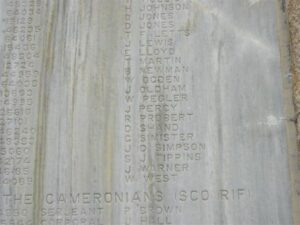
Sidney John Skone, Private, 48899, Lancashire Fusiliers. Sidney was the son of John and Catherine Skone, of St. Mary’s, Pembroke. He resided at 6, Luton Terrace, Furnace, Llanelli prior to the war, and enlisted there into the Army. Sidney was posted to the 10th Battalion, Lancashire Fusiliers, which was attached to 52 Brigade, 17th (Northern) Division. Between the 12th to the 17th July 1915 the Division landed in France. They spent their initial period of trench familiarisation and then holding the front lines in the southern area of the Ypres salient. Here they took part in fighting at the Bluff during February 1916 before moving south, where they fought at the Battle of Albert, where the Division captured Fricourt at heavy cost during the opening of the Somme Offensive. They then saw action during the Battle of Arras, at the First and Second Battles of the Scarpe and the Capture of Roeux, before moving back to Ypres, and taking part in the First and Second Battles of Passchendaele. In March 1918 the Division was back on the Somme, Sidney was wounded here and sadly died as a result on 1 March 1918, aged 29. He is buried at Hermies Hill British Cemetery, France.
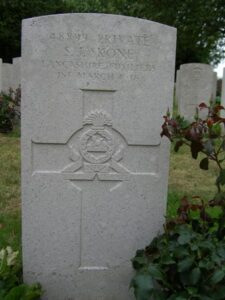
Frederick Smith, Gunner, W/539, Royal Field Artillery. Frederick was the son of Abraham and M. Smith, of Newlands Cottage, East Liss, Hants. He worked at Llanelli prior to the war, and enlisted there into the Welsh Artillery. Frederick went to France in December 1915 attached to C Battery, 121st Brigade, Royal Field Artillery, which was attached to the 38th (Welsh) Division. Frederick would have fought at Mametz Wood with the Division. He was killed the following year, during the Battle of Langemarck, on 15 August 1917. Frederick was 34 years old, and is buried at Canada Farm Cemetery, Belgium.
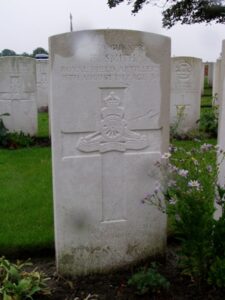
J. Smith, Corporal, King’s Liverpool Regiment. This man cannot presently be identified.
William Robert Smith, Lance Corporal, 36155, Welsh Regiment. William was the son of Walter and Emily Smith, of 21, Caroline Street, Sea Side, Llanelli, and the husband of Margaret Ann Smith, of 20, Mount Pleasant Street, Trecynon, Aberdare, Glam. He had served with the South Wales Borderers at the start of the war, before being transferred into the 1st Battalion, Welsh Regiment, which was attached to 84 Brigade, 28th Division. William was killed during the Battle of Loos, on 1 October 1915. He was 39 years old, and is commemorated on the Loos Memorial, France. He left his wife with six children to raise.
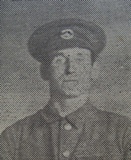
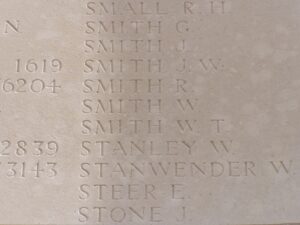
George Henry Joseph Sowter, Captain, Lincolnshire Regiment. George was the son of George and Isabella Sowter, of Brigg, Lincs. He was the Managing Clerk to William Howell, Solicitor, at Llanelli prior to the war, and was mobilised in August 1914, as a Lieutenant with the 5th Battalion, Lincolnshire Regiment. He was promoted Captain in October 1914, and went to France with the battalion on 1 March 1915, where it was attached to 138 Brigade, 46th (North Midland) Division. George was killed in action during the Divisions first major Battle, during the assault on the Hohenzollern Redoubt at Loos on 13 October 1915. He was 30 years old, and is commemorated on the Loos Memorial, France. His brother, Second Lieutenant Francis Ingle Sowter, of The Buffs, was killed on 9 August 1917.
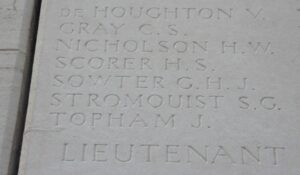
Harry Griffiths Spinks, Private, 39383, South Wales Borderers. Harry was the son of George Henry and Sophia Spinks, of 11, Woodend Road, Llanelli. He had served with the Monmouthshire Regiment, before being transferred into the 5th Battalion, South Wales Borderers, which was attached to 58 Brigade, 19th (Western) Division. The Division moved to France during July 1915, and moved to positions near Loos, where it took part in the opening attack of the Battle of Loos on 25 September 1915. The following year the Division moved to the Somme, where it took part in the second wave of the attack on Ovillers-La Boiselle on 1 July, capturing the village at heavy cost. Harry was wounded on the Somme during the Battle of the Ancre Heights, and died on 13 October 1916. He was 20 years old, and is buried at Puchevillers British Cemetery, France.
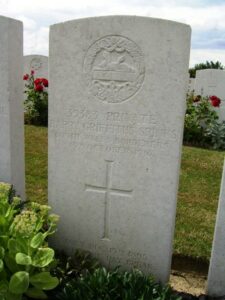
Noel Gordon Stallard, Lance Corporal, 3886, Welsh Regiment. Noel was the son of Alfred and Eliza Sarah Stallard, of 12, Westbury Street, New Dock, Llanelli. He enlisted with his brother Harry at Llanelli into the 1/4th Battalion, Welsh Regiment, which was the local Territorial Battalion, attached to 159 Brigade, 53rd (Welsh) Division. The Division landed at Cape Helles, Gallipoli, on 9 August 1915, and was immediately thrown into action, spending the next few days in isolated pockets, fighting against a Turkish counter-attack during the Battle of Sari Bair. Noel was killed here on 10 August 1915, and Harry was wounded the same day. Noel was 18 years old, and is buried at Green Hill Cemetery, Gallipoli.
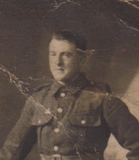
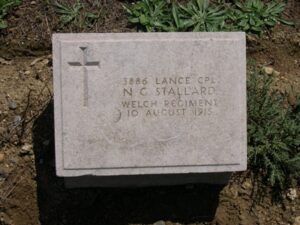
William Herbert Parry Stephens, Corporal, 95366, Royal Field Artillery. William was the son of Frank and Martha Ann Stephens, of 34 Auckland Terrace, Llanelli. He enlisted at Llanelli into the Royal Field Artillery, and was posted to France with ‘A’ Battery, 86th Brigade, Royal Field Artillery, which was attached to the 19th (Western) Division. William was killed near Arras on 17 April 1917. He was 23 years old, and is buried at Bailleul Road East Cemetery, St. Laurent-Blangy, France.
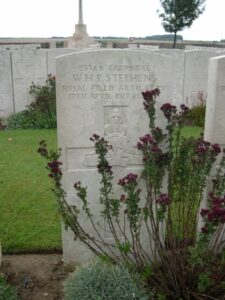
Frederick William Stoddart, Captain, Wiltshire Regiment. Frederick was the son of Col. William Stoddart (Madras Staff Corps), and the husband of Marguerite Fanny Stoddart, of 35, Queen’s Gardens, Ealing, London. He had served with the Wiltshire Regiment in China during the Boxer Rising, and at the outbreak of war went to France with the 1st Battalion, Wiltshire Regiment, which was attached to 7 Brigade, 3rd Division. One of the first Divisions to move to France, the 3rd Division remained on the Western Front throughout the war, and fought during the opening Battle of Mons, and in the epic retreat, from the Rearguard Action of Solesmes, through the Battle of Le Cateau, and down to the Marne, where the German Offensive was stopped. They followed the German withdrawal to the Aisne, where they met them in battle, and stopped the advance on Paris. The Division then moved north to Flanders, and took part in the Battle of La Bassée, and at the Battle of Messines, which were a prelude to the First Battle of Ypres. Frederick was killed during the First Battle of Ypres, on 27 October 1914. He was 39 years old, and is commemorated on the Le Touret Memorial, Richebourg L’Avoue, France. He was awarded the Chevalier of the Legion of Honour during his short time in France.
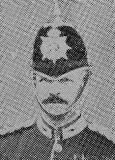
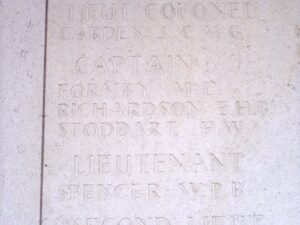
Clifford James Stokes, Corporal, B/203390, Rifle Brigade. Clifford was the son of James and Alice M. B. Stokes, of Chedzoy, Bridgwater, Somerset. He worked for the GWR at Llanelli prior to the war, and enlisted there into the King’s Royal Rifle Corps. Clifford was later posted to the 1st Battalion, Rifle Brigade, which was attached to 11 Brigade, 4th Division. They took part in the epic retreat to the Marne, where the German Offensive was halted, and in the advance to the Aisne. The Division was then moved north to Flanders, and took part in the Battle of Messines, where Units of 4th Division took part in the famous Christmas Truce while they were still in this area, in trenches near Ploegsteert Wood. In 1915 the Division fought at the Second Battle of Ypres, and in the summer of 1916 were on the Somme, where they fought at the Battle of Albert and the Battle of Le Transloy. In April 1917 they were at Arras, and fought at the First Battle of the Scarpe. Clifford was killed here on 9 April 1917, aged 23. He is commemorated on the Arras Memorial, France.
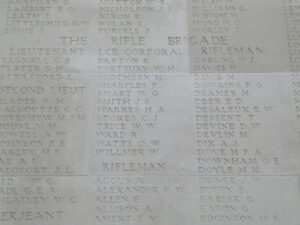
John Frederick Stone, Private, 12962, South Wales Borderers. John was the son of John and Margaret Stone, of 70, Hopwood Street, Blackburn. By 1911 he was residing at 30, Caroline Street, Llanelli, working in a Tinplate Works. He enlisted there into the 4th Battalion, South Wales Borderers, which was attached to 40 Brigade, 13th (Western) Division. On 13 June 1915 the Division sailed for Alexandria, then landed at Cape Helles, Gallipoli from 6 July 1915, relieving the 29th Division. On 8 January 1916, the Division was evacuated from Helles, and by 31 January was concentrated at Port Said, where they held forward posts in the Suez Canal defences. On 12 February, 1916 the Division began to move to Mesopotamia, to strengthen the force being assembled for the relief of the besieged garrison at Kut al Amara. John was killed in Mesopotamia, during the Battle of The Boot, at Band-i-Adhaim on 30 April 1917, aged 24. He is commemorated on the Basra Memorial, Iraq.
Isaac John Storer, Private, 204114, Dorsetshire Regiment. John was the husband of Ada Storer, of 3, Sea View Terrace, Bwlchyqwynt, Llanelli. He was a regular soldier, and had served during the South African Campaign of 1899-1902 with the Derbyshire Regiment. At the outbreak of the Great War John rejoined the 9th Battalion, Welsh Regiment. He was then posted to the 6th Battalion, Dorsetshire Regiment, which was attached to 50 Brigade, 17th (Northern) Division. During July 1915 the Division landed in France, and moved to the southern area of the Ypres salient. Here they took part in fighting at the Bluff during February, 1916 before moving south, where they fought at the Battle of Albert, where the Division captured Fricourt at heavy cost during the opening of the Somme Offensive. They then saw action during the Battle of Arras, at the First and Second Battles of the Scarpe and the Capture of Roeux, before moving back to Ypres, and taking part in the First and Second Battles of Passchendaele. In March, 1918 the Division were on the Somme, and faced the German Spring Offensive there, fighting at the Battle of St Quentin, and retreated back, fighting at the First Battle of Bapaume. John was wounded near Arras, and died on 6 May 1918, aged 37. He is buried at Doullens Communal Cemetery Extension No. 2, France.
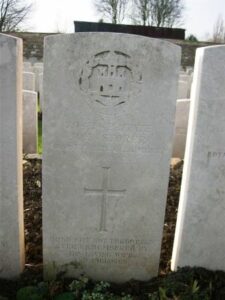
William John Stroud, Private, 4164, Welsh Regiment. William was the son of Thomas and Mary Jane Stroud, of 5, Corporation Avenue, Llanelli. He enlisted at Llanelli into the 1/4th Battalion (Carmarthen), Welsh Regiment, which was attached to 159 Brigade, 53rd (Welsh) Division. The 53rd (Welsh) Division moved to the Mediterranean, sailing from Devonport in July, 1915 arriving at Mudros by 5 August 1915. From here they moved to Gallipoli, landing on 9 August. Here the Division was immediately thrown into action, and spent the next few days in isolated pockets, fighting against a Turkish counter-attack during the Battle of Sari Bair, and then at the Attack on Scimitar Hill. William was killed here on 19 August 1915, aged 20. He is commemorated on the Helles Memorial, Gallipoli.

Cornelius Sullivan, Private, 63127, Welsh Regiment. Cornelius was the son of Cornelius and Mary Sullivan, of 9, Swansea Road, Llanelli. His papers show that he had originally enlisted in August 1914 into the 3rd Welsh, but had deserted, before enlisting at Llanelli on 23 October 1914, into the 4th Welsh. He had served at Gallipoli, and in Egypt with the 1/4th Welsh, before being posted to the 11th Battalion, Welsh Regiment, which was in Salonika attached to 67 Brigade, 22nd Division. Cornelius survived the war, but died on 5 April 1919. He is buried at Old Road Church Cemetery, Llanelli.
David Summers, Private, 13802, Worcestershire Regiment. David was born at Tipton, Staffordshire. He worked at Llanelli for several years prior to the war, and enlisted there into the army. David was posted to the 4th Battalion, Worcestershire Regiment, which was attached to 88 Brigade, 29th Division. The Division moved to Gallipoli via Egypt, landing on 25 April 1915, and saw extensive fighting during the campaign. David was killed during the Battle of Krithia Vineyard, on 6 August 1915, aged 35. He is commemorated on the Helles Memorial, Gallipoli.
Sidney Summers, Private, 109620, Tank Corps. Sidney was born at Llanelli in 1884, the son of Edwin and Margaret Summers. The family later resided at 19, West Street, Gorseinon. Sidney enlisted at Merthyr into the Royal Field Artillery, before being sent to France, where he was attached to the 11th Battalion, Tank Corps. Sidney was killed during the great offensive, near Cambrai on 27 September 1918. He was 34 years old, and is buried at Fifteen-Ravine British Cemetery, Villers-Plouich, France.
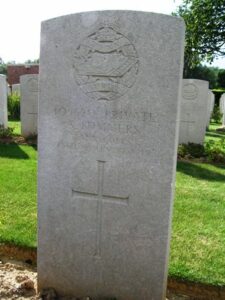
Francis Wright Sutherns, Gunner, 87130, Royal Field Artillery. Francis was the son of Frederick William and Matilda Sutherns, of 7, Florance Street, New Dock Road, Llanelli. He enlisted at Llanelli into the Royal Field Artillery, and was posted to France with D Battery, 59th Brigade, Royal Field Artillery, which was attached to the 11th (Northern) Division. Francis was killed during the Battle of Messines, and died on 23 July 1917. He was 21 years old, and is buried at Lijssenthoek Military Cemetery, Belgium.
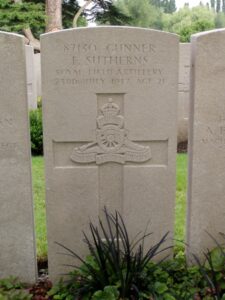
William Sweeney, Private, 18534, East Lancashire Regiment. William was the son of Mr. and Mrs. Edward Sweeney, of 10, Edate St., Failsworth, Manchester. He probably worked at Llanelli prior to the war, and enlisted there into the Welsh Regiment, under the name of William Dean. William was then posted to the 6th Battalion, East Lancashire Regiment, which was attached to 38 Brigade, 13th (Western) Division. On 13 June 1915 the Division sailed for Alexandria, and moved to Mudros before being landed at Cape Helles, Gallipoli from 6 July 1915, relieving the 29th Division. William was killed here during actions at Suvla Bay, on 11 December 1915. He was 33 years old, and is buried at Green Hill Cemetery, Gallipoli.
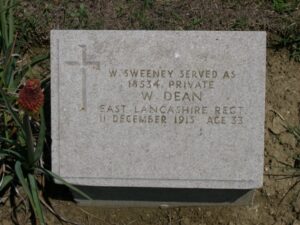
John Albert Sweet, Private, 552984, Canadian Infantry. John was born on 4 December 1880, the son of Silas and Mary Sweet, of 55, Robinson Street, Llanelli. He resided at Magrath, Canada prior to the war, and enlisted there on 3 April 1916 into Princess Patricia’s Canadian Light Infantry. The battalion was in France attached to the 7th Canadian Brigade, 3rd Canadian Division. John fought at Vimy Ridge after arriving in France, and was killed in action during the later Battle of Hill 70, near Loos, on 31 August 1917. He was 36 years old, and is buried at Aix-Noulette Communal Cemetery Extension, France.
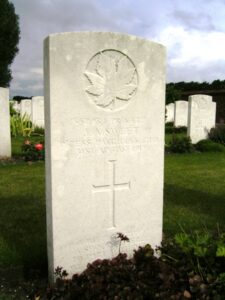
Francis John Taggart, Driver, 14317, Royal Field Artillery. Francis was born at Llanelli in 1884. He married Beatrice Louisa Woodman, of 42, William Street, Swansea on 10 September 1910, and the couple lived with her parents. Francis enlisted at Swansea into the Royal Artillery, and was posted to France with the 39th Brigade Ammunition Column, Royal Field Artillery, which was attached to the 1st Division. The Division had been one of the first to arrive in France, fighting at the Battle of Mons, and taking part in the retreat to the Marne, where the Germans were stopped. They then fought at the Aisne, and at Chivy, before being moved north to Ypres. Here they fought at the First Battle of Ypres, where they again stopped the German Offensive, before wintering in Flanders. The following year saw them in action again at the Battle of Aubers. Francis was wounded around this time, and died on 6 April 1915. He was 30 years old, and is buried at Wimereux Communal Cemetery, France.
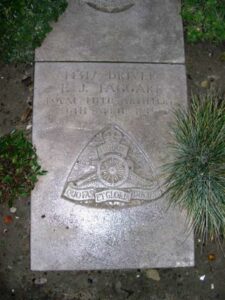
Phillip Taylor, Stoker, Royal Naval Transport Section. Phillip resided at 29, Stanley Street, New Dock, Llanelli. He served in the Royal Navy, and was Mentioned in Despatches for his work during the Gallipoli landings on 25 April 1915. Nothing more can presently be traced about Phillip.
Cyril Vaughan Thomas, Lieutenant, Royal Field Artillery. Cyril was born on 28 January 1895, the son of John Henry and Sarah Jane Thomas, of Gwynfryn, College Square, Llanelli. He enlisted into the Royal Field Artillery as a Driver on 31 August 1914, and served in France from May 1915. He was commissioned into the Royal Field Artillery on 6 September 1916. Cyril moved back to France on 2 November 1916, joining the 21st Battery, 2nd Brigade, Royal Field Artillery, which was attached to the 2nd Division. He was killed in action near the La Bassée Canal, during the Third Battle of the Scarpe, on 18 July 1917. Cyril was 22 years old, and is buried at Philosophe British Cemetery, Mazingarbe, France.
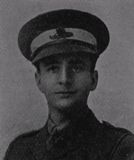
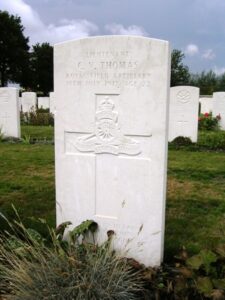
Daniel Thomas, Private, 125782, Machine Gun Corps. Daniel was the son of David and Mary Ann Thomas, of 7, Pentrepoeth, Llanelli. He had served with the Monmouthshire Regiment before transferring to the 37th Company, Machine Gun Corps. The unit was attached to the 12th (Eastern) Division, and was equipped with the Vickers gun. Daniel was killed in action during the later stages of the German spring offensive on the Somme on 6 April 1918. He was 19 years old, and is buried in Gezaincourt Communal Cemetery Extension, France.
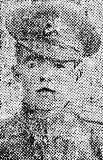
D. Thomas, Private, South Wales Borderers. This man cannot presently be identified.
D. E. Thomas, Private, South Wales Borderers. This man cannot presently be identified.
David Thomas, Private, 203441, Welsh Regiment. David was the son of Richard and Catherine Thomas, of Hen-Barc, Llanllechid, Bangor. He worked at Llanelli prior to the war, and enlisted there into the 4th Battalion, Welsh Regiment. David was posted to Salonika later in the war, where he joined the 11th Battalion, Welsh Regiment, which was attached to 67 Brigade, 22nd Division. He was killed during the Battle of Doiran, on 18 September 1918, aged 31, and is buried at Doiran Military Cemetery, Greece.
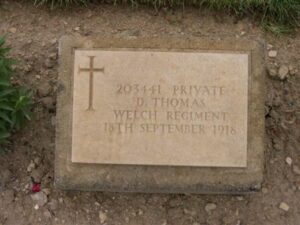
David Thomas, Private, 32295, East Lancashire Regiment. David was the son of John and Mary Thomas, of Garn Ffrwd, Mynydd Cerrig, Pontyberem. He enlisted at Cardiff into the 2/1st Monmouthshire Regiment, which was attached to 205 Brigade, 68th Division. The Division remained in the UK on Home Service for the duration of war, but David transferred to the 1st Battalion, East Lancashire Regiment, which had been in France since 22 August 1914 attached to 11 Brigade, 4th Division. They had fought at Le Cateau, the Marne and the Aisne, and also at Messines in 1914 where they took part in the famous Christmas Truce. In 1915 they fought at Second Ypres, and in 1916 at Albert and Le Transloy during the Somme Offensive. Spring 1917 saw them at Arras, where they fought at the Battles of the Scarpe, and they then moved to Ypres, where they fought in the Battle of Polygon Wood, and at Broodseinde, where David was killed in Action on 4 October 1917, aged 30. He is remembered on the Tyne Cot Memorial, Belgium.
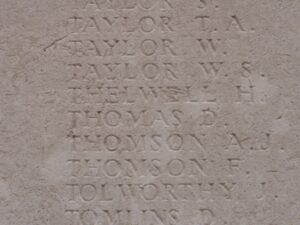
David Clement Thomas, Sapper, 66100, Royal Engineers. David was born at Golden Grove, the son of Ebenezer and Hannah Thomas. The family later resided at 77, Dillwyn Street, Llanelli. He worked there as a Sorting Clerk and Telegraphist. David had served in the Middle East with the Welsh Field Company, Royal Engineers, and remained in the Royal Engineers for several months after the armistice, being was posted to ‘L’ Signal Battalion, Royal Engineers. He was demobilised in the summer of 1919, and was on holiday in Pembrokeshire when he was killed in a cycling accident at Letterston on 13 September 1919. David was 32 years old, and is buried at Llanelli (Box) Cemetery, in the old section.
David James Thomas, Able Seaman, 197451, Royal Navy. David was born on 22 December 1881, the son of David Price Thomas and Caroline Fisher Thomas, of Bank Cottage Farm, Burry Port. He had served with the Royal Navy for several years prior to the war, and married Charlotte Betty McIntosh, of 7, Hill Street, Dundee on 18 August 1916. David served with the Royal Navy, aboard HM Submarine G7. She was on patrol in the North Sea when contact was lost with her on 23 October 1918. She was declared lost with all hands on 1 November 1918. David is now remembered alongside his fellow crewmen on the Plymouth Naval Memorial, Devon. He had been a long servant to the Royal Navy, as he had gained his Long Service and Good Conduct Medal prior to his death.

David Joseph Thomas, Private, 18646, Welsh Regiment. David was born at Llanelli, the son of David and Ann Thomas, later of 1120, Neath Rd., Plasmarl, Swansea. He married Sarah Davies at Llanelli in 1912, and the couple moved to Swansea. David enlisted at Neath into the Rhondda Battalion, Welsh Regiment, and was posted to the 16th Battalion, Welsh Regiment, which was attached to 115 Brigade, 38th (Welsh) Division. The Division had landed in France during December 1915 and had spent their first winter in the trenches near Armentieres. In June they marched south to the Somme, where they were tasked with the capture of Mametz Wood. The attack on the wood began on 7 July, but met with fierce resistance, and it took until 14 July to totally clear the wood. The Division suffered terrible casualties at Mametz, and were taken out of the line, and moved to Ypres to rebuild. Here they fought at the Battle of Pilckem Ridge, and the Battle of Langemarck. David was killed at Eagle Trench, during the Battle of Langemarck, on 27 August 1917. He was 38 years old, and is commemorated on the Tyne Cot Memorial, Belgium.
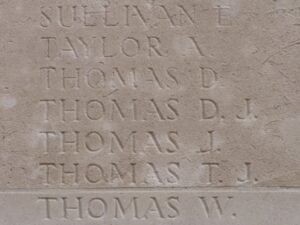
David Rees Thomas, Acting Company Quarter Master Sergeant, 45, Royal Engineers. David was the son of David and Mary Jane Thomas, of 93, Station Road, Llanelli, and lived at the Melbourne Inn, Llanelli prior to the war. He enlisted at Llanelli into the 1/1st Welsh Field Company, Royal Engineers, which was attached to the 53rd Welsh Division. The division landed at Gallipoli on 8 August 1915 and was plunged immediately into heavy fighting, remaining on the peninsula for the next four months. David was killed in action at Helles, Gallipoli on 23 October 1915, aged 31. He is buried at Lala Baba Cemetery, Gallipoli.
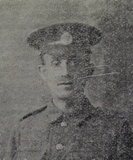
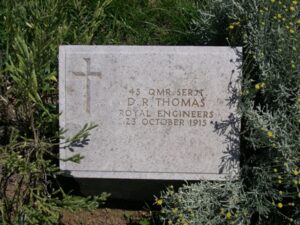
David Walter Thomas, Private, 39445, Gloucestershire Regiment. David was born at Llanelli, and enlisted at Carmarthen into the Welsh Regiment. He was sent to France, where he joined the 8th (Service) Battalion, Gloucestershire Regiment, which was attached to 57 Brigade, 19th (Western) Division. The Division moved to France during July 1915, and fought at the Battle of Loos on 25 September 1915. The following year the Division fought on the Somme. In 1917 the Division moved to Ypres, taking part in the Battle of Messines, and in the main Passchendaele offensive. In 1918 they were caught up in the German Spring Offensive near St. Quentin, where they suffered terrible casualties, and fought at the Battle of Bapaume. They moved to Ypres, but were caught up in the German attack at Messines, and at Bailleul, and Kemmel. After suffering terribly again, they moved South to the quieter French sector to rebuild, but were caught up in the German offensive on the Aisne. After suffering heavily, they were back on the northern sector of the Somme later that year, and took part in the great offensive from 21 August 1918. David was killed here on 9 September 1918. He is commemorated on the Loos Memorial, France.
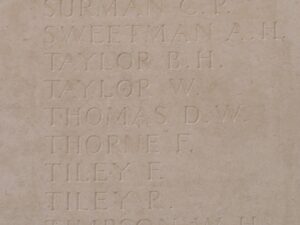
David William Thomas, Private, 12777, South Wales Borderers. David was born in 1889, the son of Jonah Thomas and Caroline Thomas, of Cornish Place, New Dock, Llanelli. His mother died in 1894 and his father remarried to Emily Trewhella. David married Margaret Jane Daniel in 1909 and the couple lived at 81, Ropewalk Road, Llanelli, where their son, Jonah, was born. David worked as a furnaceman prior to enlisting at Llanelli into the 4th Battalion, South Wales Borderers. The battalion formed at Brecon, before moving to Park House Camp, near Tidworth to join 40 Brigade, 13th (Western) Division, then moved to billets in Cirencester before moving to Woking in March 1915 for final training. On 29 June 1915 the Division sailed from Avonmouth for Mudros, before landing at Cape Helles, Gallipoli on 15 July 1915. Two weeks later the Division was moved to Anzac, to reinforce the Australian and New Zealand troops there, in readiness for a great assault on the Sari Bair Ridge, in conjunction with fresh Allied landings at Suvla Bay. The assault began on 6 August 1915 and raged over the coming days. The 4th SWB reached the Achyl Dere before assaulting, and seizing Damakjelik Bair, one of the ridges held by the Turks. The Turks counter-attacked on 9 August and terrible fighting raged throughout the coming days. David was killed at Gallipoli, during the Battle of Sari Bair, on 12 August 1915. The 26-year-old has no known grave and is commemorated on the Helles Memorial, Gallipoli. His half-brother, Robert Gwynfor Thomas, died in India in 1919.
E. Thomas, Private, Suffolk Regiment. This man cannot presently be identified.
Edward Thomas, Private, 28582, Royal Inniskilling Fusiliers. Edward was the son of William and Ann Thomas, of Thomas Street, Llanelli, and the husband of Sophia Thomas, of 22, Glanmor Terrace, Llanelli. He had originally enlisted at Llanelli into the Welsh Regiment, but was later posted to the 7th Battalion, Royal Inniskilling Fusiliers, which was attached to 49 Brigade, 16th (Irish) Division. During December, 1915 the Division moved to France and concentrated in the Bethune area. They saw their first major action during the Somme Offensive, at the Battle of Guillemont, Edward was killed here on 9 September 1916, aged 47. He has no known grave, and is commemorated on the Thiepval Memorial, France. His widow Sophia was left alone to raise their seven children.
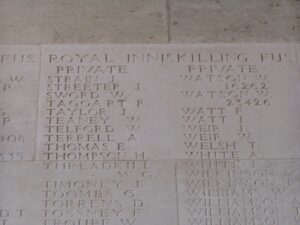
Edwin Isaac Thomas, Corporal, 200457, Welsh Regiment. Edwin was the son of John and Mary Thomas, of 52, Little Water Street, Carmarthen. He worked as a Time and Store Keeper at the GWR Depot at Llanelli prior to the war. Edwin lived at 75, Priory Street, Carmarthen, with his wife and two young children. He enlisted into the army, and served as a sergeant-instructor in a signalling section for several months, prior to going to Egypt in February 1917, where he joined the 1/5th Battalion, Welsh Regiment. The battalion was attached to 159 Brigade, 53rd (Welsh) Division, and was preparing for the advance into Palestine. Edwin was killed in action during the Third Battle of Gaza, on 3 November 1917. He was 27 years old, and is buried at Beersheba War Cemetery, Israel.

Evan Edward Thomas, Private, 203027, South Lancashire Regiment. Evan was the son of Jonah and Cathrine Ann Thomas, of 3, Custom House Bank, Llanelli. He enlisted at Llanelli into the army, and was posted to France, joining the 1/4th Battalion, South Lancashire Regiment, which was the Pioneer battalion to the 55th (West Lancashire) Division. The Division was reformed in France during January 1916, and relieved the French 88th Division south of Arras. Relieved by the 11th (Northern) Division on 25 July, the Division moved south and fought in the Somme offensive. The Division left the Somme on 28 September 1916, and moved to Ypres, in the Railway Wood sector, until taking part in the Battle of Pilkem. After suffering terrible casualties, the Division was withdrawn to Recques for re-fit and training, before moving back into the line on 15 September, and fighting at the Battle of the Menin Road. The Division moved out of the line from 22 September and took part in the Battle of Cambrai. The Division relieved 42nd (East Lancashire) Division in the front line at Givenchy and Festubert on 15 February, and suffered several German raids in March 1918. Evan was killed during one such raid, on 20 March 1918. He was 18 years old, and is buried at Rue-Du-Bois Military Cemetery, Fleurbaix, France.
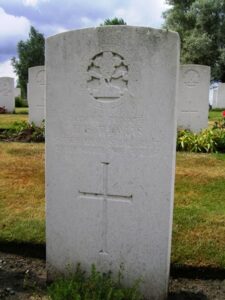
Gordon Richard Cynlais Thomas, Lance Corporal, 57799, Welsh Regiment. Gordon was the son of David and Helena Rebecca Thomas, of the Ship Inn, Church Street, Llanelli. He enlisted at Llanelli on 11 December 1915 into the Pembroke Yeomanry, and was posted to France on 24 November 1916, joining the 15th Battalion, Welsh Regiment, which was known as the Carmarthen Pals battalion, attached to 114 Brigade, 38th (Welsh) Division. The Division was stationed at Boesinghe, on the Yser Canal, where it remained until launching its attack on Pilckem Ridge on 31 July 1917. The 15th Welsh remained in the line, and also took part in the Battle of Langemarck, before the entire Division was moved to positions near Armentieres over the winter. After the Germans launched their offensive on the Somme on 21 March 1918, the Division was moved back to the Somme, and took up positions north of Albert, around Aveluy Wood. From here they took part in the great advance from 21 August 1918 which was to win the war. Gordon survived the war, but died of pneumonia on 15 March 1919, aged 22. He was buried at Box Cemetery, Llanelli.
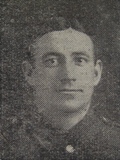
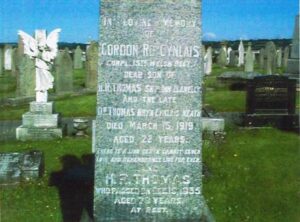
Gwilym Daniel Thomas, Private, 203008, South Lancashire Regiment. Gwilym was the son of John and Frances Thomas, of 73, Bigyn Hill, Llanelli. He enlisted at Llanelli on 1 September 1914 into the Royal Welsh Fusiliers, and was posted to France on 19 July 1915 with the 9th Battalion, Royal Welsh Fusiliers. On 6 September 1917 Gwilym was admitted to 58 Field Ambulance after being wounded, and during December 1917 returned to England. During 1918 he returned to France, and was posted to the 2/4th Battalion, South Lancashire Regiment, which was attached to 172 Brigade, 57th (2nd West Lancs) Division. In August 1918 they took part in the great advance, and Gwilym was killed during the Battle of The Scarpe, on 28 August 1918. He was 25 years old, and is commemorated on the Vis-En-Artois Memorial, France.
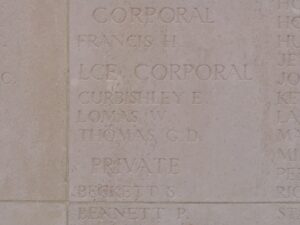
Hiram Rees Thomas, Private, 72075, Cheshire Regiment. Hiram was the son of William and Jane Thomas, of 1, Tunnel Terrace, Tunnel Road, Llanelli. He enlisted there into the army on 25 September 1917, and was posted to France on 11 April 1918, joining the 11th Battalion, Cheshire Regiment, which was attached to 7 Brigade, 25th Division. The Division had seen heavy fighting around Bullecourt during the German Spring Offensive. It moved north to Flanders on the night of 30 March, where they took up positions at Ploegsteert again, where they received reinforcements, and rebuilt. However, on 9 April the Germans launched an offensive on the Lys, and the Division was caught up in the terrible fighting here, at the Battles of Estaires, Bailleul, Messines and Kemmel. The Division withdrew to Abeele on 17 April, but on 25 April was ordered back into the line, and took part in the Second Battle of Kemmel. Hiram was killed here on 3 May 1918, aged 18. He is commemorated on the Tyne Cot Memorial, Belgium.
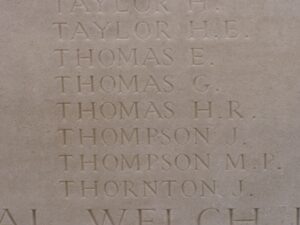
Hubert Thomas, Corporal, 63468, Royal Garrison Artillery. Hubert was the son of John and Elizabeth Thomas, of 2, Laburnum Cottage, Swansea Road, Llanelli. He enlisted at Llanelli on 5 November 1915 into the Royal Garrison Artillery, and was posted to France on 26 September 1916 with the 183rd Siege Battery, Royal Garrison Artillery. Hubert was wounded during the German retreat to Hindenburg Line, and died on 4 March 1917, aged 21. He is buried at Faubourg D’Amiens Cemetery, Arras, France.
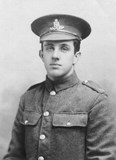
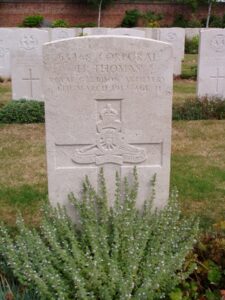
James Thomas, Corporal, 201101, Welsh Regiment. James was born at Llanelli, and enlisted there into the 1/4th Battalion, Welsh Regiment, which was the local Territorial Battalion, attached to 159 Brigade, 53rd (Welsh) Division. The Division landed at Cape Helles, Gallipoli, on 9 August 1915, and was immediately thrown into action, spending the next few days in isolated pockets, fighting against a Turkish counter-attack during the Battle of Sari Bair. The Division remained here throughout the coming months, and suffered severe losses in manpower strength during the great November 1915 blizzard on Gallipoli, when its total strength was reduced to less than that of a full-strength Brigade. On 11 December 1915 the Division was evacuated to Mudros, and by 23 December 1915 were moved to Egypt. They remained on the Suez Canal Defences for the next twelve months, where it took part in operations against the Sultan of Darfur, and in March 1917 took part in the advance into Palestine. James was then attached to the 2/2nd King’s African Rifles, which fought in the East African campaign. James was killed here on 31 August 1918, aged 44. He is buried at Lumbo British Cemetery, East Africa.
James Brown Thomas, Stoker, 6765/S, Royal Naval Reserve. James was born at Carmarthen on 7 March 1879, the son of William and Margaret Thomas. The family had moved to Llanelli within two years, and by 1905 James had married, and lived with his wife Sarah Jane Thomas, at Old Farmer Cottage, Llwynhendy, Llanelli. He served with the Royal Naval Reserve aboard HMS Edgar, which was stationed in the Mediterranean. James took ill, and was hospitalised at Mudros, where he died on 14 December 1917. He was 37 years old, and is buried at East Mudros Military Cemetery, Greece.
John Thomas, Sergeant, 14956, Royal Welsh Fusiliers. John was the son of John and Margaret Thomas, of Pwll, Llanelli. He enlisted at Llanelli at the outbreak of war into the 11th Battalion, Royal Welsh Fusiliers, which was attached to 67 Brigade, 22nd Division. John visited his family at Llanelli in August 1915, just before the division was to move to France. He took ill while on leave, and was rushed to hospital, where he died on 3 September 1915, aged 29. John was buried at Pwll (Bethlehem) Baptist Chapelyard.
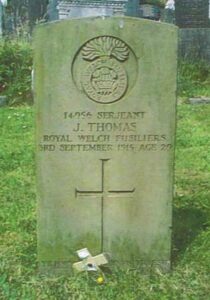
John Thomas, Sergeant, 8952, Rifle Brigade. John was the son of Harriet Thomas, later of 25, Richard Street, Llanelli. He had served with the 3rd Welsh in South Africa, Egypt and India prior to the war, and being a reservist was called up in August 1914, joining the 2nd Battalion, Rifle Brigade. The battalion was attached to 25 Brigade, 8th Division, and moved to the Western Front in November 1914, a badly-needed reinforcement to the BEF which had been all but wiped out at Ypres. They saw their first major action at the Battle of Neuve Chapelle, and then at the Battle of Aubers. They then saw further fighting at the Action of Bois Grenier, before moving to the Somme in 1916, where they fought at the Battle of Albert. In March, 1917 they followed the German Retreat to the Hindenburg Line, and later that year moved to Ypres, fighting at the Battle of Pilckem, and the Battle of Langemarck. John was killed at Ypres on 19 November 1917. He was 33 years old, and is commemorated on the Tyne Cot Memorial, Belgium.
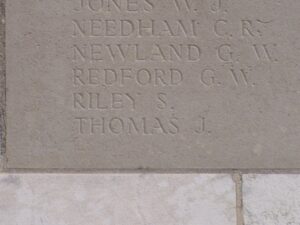
John Thomas, Private, 14106, South Wales Borderers. John was born at Llanelli, and lived at Dolau Road. He enlisted at Llanelli into the 4th Battalion, South Wales Borderers, which was attached to 40 Brigade, 13th (Western) Division. On 13 June 1915 the Division sailed for Alexandria, and moved to Mudros before being landed at Cape Helles, Gallipoli from 6 July 1915, relieving the 29th Division. On 8 January 1916, the Division was evacuated from Helles, and by 31 January was concentrated at Port Said, where they held forward posts in the Suez Canal defences. On 12 February, 1916 the Division began to move to Mesopotamia, to strengthen the force being assembled for the relief of the besieged garrison at Kut al Amara. John was killed here on 5 April 1916. He is commemorated on the Basra Memorial, Iraq.
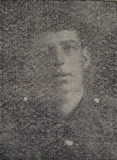
John Oliver Thomas, Private, 65, Non Combatant Corps. John was the son of William and Margaret Thomas, of 63, High Street, Llanelli. John was a conscientious objector, and after a court hearing at Llanelli, was accepted for service with the 1st Western Company, Non Combatant Corps on 27 March 1916. He married Sarah Hughes at Llanelli on 13 May 1916, and they lived at 89, Cleveland Buildings, Station Road, Llanelli. Within weeks, John was posted to France, and was put to work as a shunter. On 12 September 1917, John was working as a shunter aboard a military train at Incheville, and had just uncoupled some wagons from the front of the engine, when he slipped, and was run over, losing a leg and suffering severe head injuries. He died in No. 2 Canadian General Hospital at Le Treport on 18 September 1917, aged 32, and is buried at Mont Huon Military Cemetery, Le Treport, France.
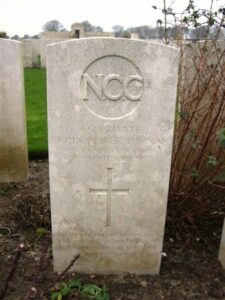
L. Thomas, Sapper, Royal Engineers. This man cannot presently be identified.
Lewis Thomas, Corporal, 201202, Welsh Regiment. Lewis was born at Treorchy, but lived at Burry Street, Seaside, Llanelli prior to the war. He enlisted there into the 1/4th Battalion, Welsh Regiment, which was the local Territorial Battalion, attached to 159 Brigade, 53rd (Welsh) Division. The Division landed at Cape Helles, Gallipoli, on 9 August 1915, and was immediately thrown into action, spending the next few days in isolated pockets, fighting against a Turkish counter-attack during the Battle of Sari Bair. The Division remained here throughout the coming months, and suffered severe losses in manpower strength during the great November 1915 blizzard on Gallipoli, when its total strength was reduced to less than that of a full-strength Brigade. On 11 December 1915 the Division was evacuated to Mudros, and by 23 December 1915 were moved to Egypt. They remained on the Suez Canal Defences for the next twelve months, where it took part in operations against the Sultan of Darfur, and in March 1917 took part in the advance into Palestine. Lewis was killed during the First Battle of Gaza, on 26 March 1917, aged 32. He is commemorated on the Jerusalem Memorial, Israel.
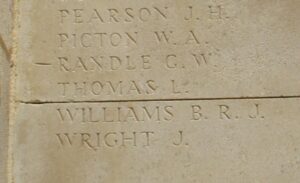
Martyn Thomas, Private, 4089, Honourable Artillery Company. Martyn was the son of Henry and Rachel Thomas of Llanelli. He was a retired tea brewer, and member of Royal Cinque Ports Golf Club, Deal, Kent prior to enlisting on 21 July 1915 into the 1st Battalion, Honourable Artillery Company. He embarked for France at Southampton on 4 December 1915, and joined the battalion on 18 December. The battalion was attached to GHQ Troops, then on 9 July 1916 transferred to 190 Brigade, 63rd (Royal Naval) Division. Martyn was killed at Arras by a shell, the following month, on 10 August 1916. He was 39 years old, and is buried at Bois-De-Noulette British Cemetery, Aix-Noulette, France.
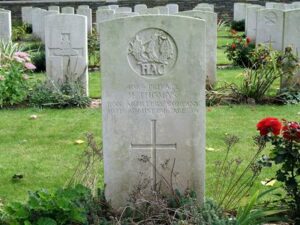
Maubrey Charles Thomas, Private, M2/079602, Royal Army Service Corps. Maubrey was born in Haverfordwest in 1898, the son of Thomas and Caroline Thomas. By 1904 his father had died, and Caroline had married Henry Lloyd, of Garage House, Prospect Place, Llanelli. Maubrey enlisted at Swansea into the Royal Army Service Corps, and served with the 593rd Company. Maubrey was then attached to the XIV Corps Heavy Artillery. He was at Ypres during the spring of 1916 when he took ill and died on 23 June 1916, aged 17. Maubrey was buried in Vlamertinghe Military Cemetery, Belgium.
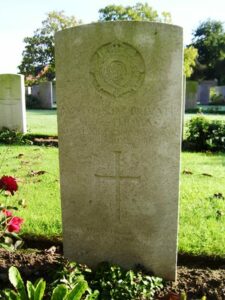
Richard Thomas, Private, 1929, Royal Irish Regiment. Richard was the son of Mary Ann Thomas, of 5, Old Houses, Penycoedcae, Pontypridd. He probably worked at Llanelli prior to the wear, and enlisted there into the army. Richard was posted to the 5th Battalion, Royal Irish Regiment, which was attached to 29 Brigade, 10th (Irish) Division. On 27 June the Division received orders to prepare for service on Gallipoli, and embarked at Liverpool on 9 July. By the end of the month most units had assembled on Lemnos, and between 6 and 7 August 1915 landed on Gallipoli at Suvla Bay, less the 29th Brigade, which went to ANZAC Cove. The main body made an attack on Chocolate Hill on 7 and 8 August. Parts of 29th Brigade took part in actions on Sari Bair between 6 and 10 August, and Hill 60 later that month. Richard was killed at Sari Bair on 16 August 1915. He was 28 years old, and is commemorated on the Helles Memorial, Gallipoli.
Robert Gwynfor Thomas, Gunner, 261894, Royal Field Artillery. Robert was born on 27 August 1896, the son of Jonah Thomas and Emily Thomas (nee Trewhella), of 25, Cornish Place, New Dock, Llanelli. He worked as a tin worker prior to the war and had enlisted into the local Territorial Army battalion, the 4th Battalion, Welsh Regiment at Llanelli on 23 May 1913, attending his first annual TA Summer Camp at Haverfordwest that year. Robert must have enjoyed army life, as on 16 September 1913 he left Llanelli and enlisted into the Royal Field Artillery at Preston. Following the outbreak of war, Robert was posted to India with the 89th Battery, Royal Field Artillery. He served for most of the war but sadly became ill within weeks of the Armistice and died of pneumonia at Nowshera Military Hospital on 29 October 1918. The 21-year-old was buried at Nowshera Military Cemetery, India. He is also commemorated on the Delhi Memorial (India Gate), India. His half-brother, David William Thomas, was killed at Gallipoli in 1915.
Robert Newton Thomas, Gunner, 72135, Royal Garrison Artillery. Robert was the son of John and Ann Thomas, of London House, Llandebie. He enlisted at Llanelli into the Royal Garrison Artillery in February 1916, becoming a Gunner in 182 Siege Battery, RGA. He married Mary Annie Thomas while on leave, at Llandeilo on 26 December 1916, and she moved to 83, Marble Hall Road, Llanelli, where she gave birth to their son, Clifford Newton Thomas, on 21 October 1916. Robert was posted to France on 19 June 1917 with 182 Siege Battery, and was killed in Action on 29 November 1917, during the Third Battle of Ypres. Robert is buried in Menin Road South Military Cemetery, Belgium.
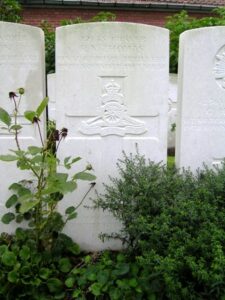
Sydney Thomas, Private, 5340, Welsh Regiment. Sydney was born at Llanelli in 1888, and was the husband of Hannah Jane Thomas, of 52, Wern Road, Llanelli. He was a tinworker prior to enlisting at Llanelli into the 4th Battalion, Welsh Regiment on 9 November 1914. Sydney was posted to the 4th Welsh base at Hearson Camp, and by the summer of 1915 had began to feel the effects of active service. Sydney was discharged from the army due to a heart condition on 14 October 1916, and returned to Llanelli, where he died on 5 November 1918, aged 30, leaving his wife with three young children. Little more is presently known of Sydney, as he is not commemorated by the CWGC.
Thomas Dylan Thomas, Private, 542169, Canadian Infantry. Thomas was born on 18 January 1890, the son of Mrs. M. A. Thomas, of Llanelli. He lived with his wife, Annie Sabina Thomas, at 48, Aloina Avenue, Toronto prior to the war. He enlisted there on 17 July 1916 into the 75th Battalion (Central Ontario), Canadian Infantry, which was attached to the 11th Canadian Brigade, 4th Canadian Division. Thomas probably joined the battalion in France in time to take part in the Battle of Vimy Ridge in April 1917. He would have fought at Passchendaele later that year. During August 1918 the Canadian Corps took part in the Battle of Amiens, where the fighting spirit of the German army was broken. Thomas was killed here on 22 August 1918, during the great advance. He was 28 years old, and is buried at Hillside Cemetery, Le Quesnel, France. His widow, Annie, later moved back to Wales, and served as a Nurse with the VAD, and lived at Tre-Mor, Mackworth Road, Porthcawl.
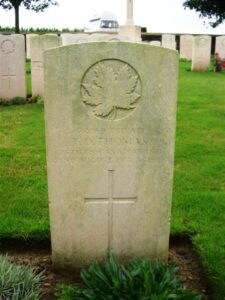
W. J. Thomas, Corporal. This man cannot presently be identified.
Walter Thomas, Private, 4013, Royal Inniskilling Fusiliers. Walter was the son of William Thomas and Mary Buchanan, of 42, Miller Street, Londonderry. His ties with Llanelli are unclear, but Walter enlisted at Londonderry into the 2nd Battalion, Royal Inniskilling Fusiliers, which was attached to 12 Brigade, 4th Division. One of the first Divisions to move to France, arriving just in time to join the hard-pressed Divisions of II Corps at The Battle of Le Cateau. They then took part in the epic retreat to the Marne, where the German Offensive was halted, and in the advance to the Aisne. The Division was then moved north to Flanders, and took part in the Battle of Messines. Walter was killed at Messines on 13 November 1914. He was 19 years old, and is buried at Strand Military Cemetery, Belgium.
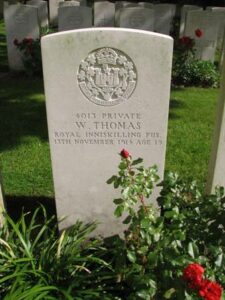
William Thomas, Private, 4476, Welsh Regiment. William lived at King’s Square, Llanelli, and enlisted at Llanelli into the 1/4th Battalion (Carmarthen), Welsh Regiment. The battalion was attached to 159 Brigade, 53rd (Welsh) Division, and moved to the Mediterranean, sailing from Devonport in July 1915. They arrived at Mudros by 5 August 1915, and from there moved to Gallipoli, landing on 9 August. Here the Division was immediately thrown into action, and spent the next few days in isolated pockets, fighting against a Turkish counter-attack during the Battle of Sari Bair, and then at the Attack on Scimitar Hill. William was killed here on 10 August 1915. He is commemorated on Panel 140-144 of the Helles Memorial, Gallipoli.
William Thomas, First Engineer, Mercantile Marine. William was the son of William and Mary Thomas, and the husband of Margaret Thomas (nee Williams), of 32, Lukefield Road, Llanelli. William served as First Engineer aboard the SS Beatrice, a cargo ship owned by Cleeves Western Anthracite Company, Cardiff. He was drowned when Beatrice was torpedoed off Falmouth on 20 July 1917. He was 36 years old, and is commemorated on the Tower Hill Memorial, London.
William Henry Thomas, Private, 13518, Royal Welsh Fusiliers. William was the son of Mrs. Sarah Thomas, of 143, Sandy Road, Llanelli. He enlisted at Llanelli into the 1st Battalion, Royal Welsh Fusiliers, which was attached to 22 Brigade, 7th Division. The Division landed at Zeebrugge on 6 October 1914, but the City was falling, and the Division moved to Ypres, where they became the first British Division to hold the city. They fought during the First Battle of Ypres, and helped stop the German advance through Belgium, and in March 1915 fought at the Battle of Neuve Chappelle. During May they fought at the Battle of Aubers Ridge, and at Festubert, before taking part in the Battle of Loos in September. In the summer of 1916, the Division was on the Somme, and took part in the Battle of Albert, where they captured Mametz, one of the few successes of 1 July 1916. They then fought at the Battle of Bazentin, and the Attacks on High Wood. It was here on 14 July 1916 that William was killed. He was 27 years old, and is commemorated on the Thiepval Memorial, France.

William John Thomas, Private, 200433, Welsh Regiment. William was the son of John Henry Thomas and Sarah Ann Thomas, of 6, Swanfield Place, Llanelli. He had enlisted there into the Welsh Regiment, and had served in France with the 6th Battalion, Welsh Regiment, which was the Pioneer battalion to the 1st Division. William took ill in France, and came home for treatment, but died on 3 February 1918, aged 19. He is buried at Old Road Church Cemetery, Llanelli.
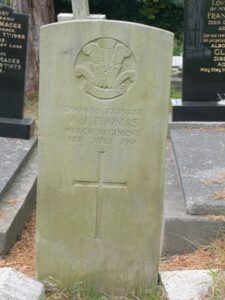
William Llewellyn Thomas, Private, 34133, South Lancashire Regiment. William was the son of William Llewellyn Thomas and Martha Thomas, of Wenvoe House, Pentrepoeth, Llanelli. He enlisted at Llanelli into the Royal Welsh Fusiliers, but later transferred into the 1/5th Battalion, South Lancashire Regiment, which was part of 166 Brigade, 55th (West Lancashire) Division. The Division moved to France during January 1916, moving to Arras. They moved to the Somme in July 1916, and fought here until relieving the 29th Division at Ypres in October 1916, being stationed near Railway wood. The Division fought at the Third Battle of Ypres from July 1917, and in September and moved to positions near Lempire, and fought at the Battle of Cambrai. The Division relieved 42nd (East Lancashire) Division in the front line at Givenchy and Festubert on 15 February 1918, and faced numerous strong enemy raids in March. April was at first much quieter, but it was a lull before the storm, as the Germans launched another offensive here, with the Division taking part in the Battle of Estaires. William was wounded here, and sadly died of wounds on 23 April 1918, aged 41. He is buried at Pernes British Cemetery, France. There is an inscription to his memory on his parents’ grave at Felinfoel Churchyard. Many thanks to Emma Lister for the photograph of William.
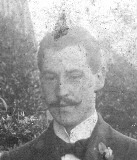
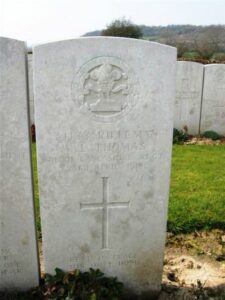
William Oliver Thomas, Corporal, 274258, Royal Engineers. William was born at Cardiff on 23 August 1890, the son of the Rev. Lewis Thomas and Elizabeth Ann Thomas. The family were originally from Llanelli, but prior to the war resided at 59, Bannister Street, Withernsea, Hull. William worked as a Surveyor for the Inland Revenue prior to the war, enlisting into the Royal Engineers on 24 April 1917, where he was posted to the 343rd Field Company, which was a Road Construction unit. William was at Ypres with his unit during the Battle of Passchendaele, and was wounded there on 18 November 1917. He died later that day, aged 27, at No. 3 Canadian Casualty Clearing Station, Lijssenthoek, and was buried at Lijssenthoek Military Cemetery, Belgium.
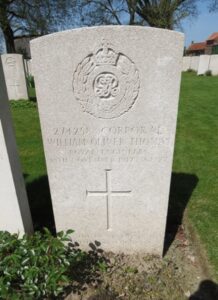
Joseph Thompson, Corporal, 14006, South Wales Borderers. Joseph was the son of John Edward and Mary Ann Thompson, of 15, Rigg Street, Carlisle, and the husband of Carrie Thompson, of 2, Greenway Street, Llanelli. He enlisted at Llanelli into the 5th Battalion, South Wales Borderers, which was attached to 58 Brigade, 19th (Western) Division. The Division moved to France during July 1915, and moved to positions near Loos, where it took part in the opening attack of the Battle of Loos on 25 September 1915. The following year the Division moved to the Somme, where it took part in the second wave of the attack on Ovillers-La Boiselle on 1 July, capturing the village at heavy cost. It then fought through at the Battle of Poziéres. Joseph was wounded here, and died on 26 July 1916, aged 28. He is commemorated on the Thiepval Memorial, France.

John Tissington, Private, 16907, Somerset Light Infantry. John was the son of John and Emma Tissington, of 7, Church Street, Swadlincote. He worked as a tinworker, and lived with his brother Alfred at Dafen Inn Row, Llanelli prior to the war. He enlisted there into the army, and was posted to France with the 8th Battalion, Somerset Light Infantry, which was attached to 63 Brigade, 37th Division. Late in July 1915 the Division landed in France. It saw its first major action during the Attack on the Gommecourt Salient, during the first phase of the Battle of the Somme. After fighting at the Ancre later that year, they moved to Arras in March 1917 and took part in the First Battle of the Scarpe, where they captured Monchy le Preux. They then took part in the Second Battle of the Scarpe, and the Battle of Arleux before moving north to Ypres. John was killed here during the Third Battle of Ypres, on 31 July 1917, aged 25. He is commemorated on the Ypres (Menin Gate) Memorial, Belgium.
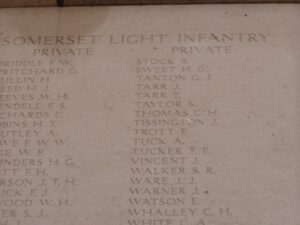
Frederick Toft, Private, 18198, Royal Defence Corps. Frederick was born in 1870, the son of Frederick and Ann Toft, of Fords Row, Llanelli. He had enlisted into the 3rd Volunteer Battalion, Welsh Regiment (Militia) prior to transferring into the South Wales Borderers on 6 September 1893. He served in Gibraltar, and in South Africa during the Boer War, before being discharged to the Reserve, and took up work at Llanelli Steel. In 1905 he married Sarah Jane Jones and the couple set up home at 7, Sandy Gate Terrace, Llanelli. On 26 October 1914 Frederick re-enlisted into the 4th Battalion, Welsh Regiment at Llanelli, knocking sixteen years off his age! He was transferred to 333 Protection Company, Royal Defence Corps on 29 April 1916, and served until being discharged later that year due to ill health. He died at Llanelli on 7 April 1923, aged 53, and is buried in Box Cemetery, Llanelli. He is not commemorated by the CWGC because he was not a war casualty, and died after the official date for commemoration.
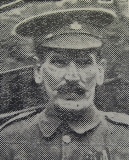
Bertram Treharne, Leading Seaman, Z/744, Royal Navy. Bertram was born on 26 March 1893, the son of William and Elizabeth Treharne. He served in the Royal Navy, aboard the battlecruiser HMS Indefatigable. Which served in the 1st Battlecruiser Squadron. She sadly became the first casualty of the Battle of Jutland on 31 May 1916, when she was struck by a salvo of shells from the German battlecruiser SMS Von der Tann, which exploded her magazines, sending her to the bottom in minutes, with the loss of all bar three of her crew of 1,017. Bertram was one of the dead, and is commemorated on panel 19 of the Plymouth Naval Memorial, Devon.
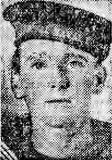
Edgar Treharne, Seaman, Z/3610, Royal Navy. Edgar was born on 28 September 1895, the husband of Katie Treharne, of 50, Dillwyn Street, Llanelli. He served with the Royal Navy aboard the SS Rose Marie. On 5 January 1918, Rose Marie, was on a voyage from Scapa Flow to Barry in ballast, when she was torpedoed and sank by the German submarine U-61, in St George Channel. Edgar was the only man lost when Rose Marie went down that day. He was 22 years old, and is commemorated on the Plymouth Naval Memorial, Devon.
William Sidney Treharne, Private, 307135, Lancashire Fusiliers. William was the son of David and Susannah Treharne, of 81, Brynmor Road, Llanelli. He enlisted at Llanelli into the army, and was posted to the 1/7th Battalion, Lancashire Fusiliers, which was attached to 125 Brigade, 42nd (East Lancashire) Division. The Division had sailed from Southampton in September 1914 for Egypt, and fought a series of skirmishes against the Turks. On 6 May 1915 the Division landed at Cape Helles, Gallipoli, where they fought until evacuation in January 1916. They then spent twelve months in Egypt again, and were moved to the Western Front in February 1917. In September they moved north to Ypres, where they fought through Third Ypres, until moving to the Coast in September to refit. November 1917 saw them moving to positions at Givenchy, where they remained until moving back south in early 1918. Here they faced the German Spring Offensive of 21 March on the Somme, and fought in the Battle of Bapaume, and then at Arras. The offensive stalled for several months, until an Australian victory at Villers Brettoneux on 8 August saw the tide of war turn. The British attacked the German lines on the Somme on 21 August, with the 42nd Division in the line, and began the great offensive that was eventually to end the war. William was killed during the Battle of the Selle, on 23 October 1918. He was 32 years old, and is buried at Romeries Communal Cemetery Extension, France.

William Charles Tremble, Private, 17015, Royal Welsh Fusiliers. William was born in 1891, the son of Frederick and Joanna Tremble, of 16, Cheesehill Street, Winchester. He probably worked at Llanelli prior to the war, and enlisted there into the army. He was posted to France, where he joined the 1st Battalion, Royal Welsh Fusiliers, which was attached to 22 Brigade, 7th Division. He probably joined the battalion in the summer of 1915, and fought at the Battle of Aubers Ridge, and at Festubert, before taking part in the Battle of Loos in September. In the summer of 1916, the Division were on the Somme, and took part in the Battle of Albert, where they captured Mametz, one of the few successes of 1 July 1916. They then fought at the Battle of Bazentin, and the Attacks on High Wood. The Division then took part in the Battle of Delville Wood, and it was here, on 3 September 1916, that William was killed. He was 25 years old, and is commemorated on the Thiepval Memorial, France.

Eugene Twohig, Private, 260247, Gloucestershire Regiment. Eugene was born at Llanelli, the son of Eugene and Mary Tuohig, later of Corovally, Clonakilty, Co. Cork. He enlisted at Carmarthen into the army, and was posted to the 1/5th Battalion, Gloucester Regiment, which was attached to 145 Brigade, 48th (South Midland) Division. The Division moved to France during March 1915, and saw its first major engagement at the opening of the Battle of the Somme. In March 1917 they followed the German Retreat to the Hindenburg Line, and later in the year fought at Third Ypres. The Division was ordered to Italy on 21 November 1917, where it remained for the duration of the war. Eugene was killed during the Battle of The Piave River on 15 June 1918. He was 32 years old, and is buried at Boscon British Cemetery, Italy.
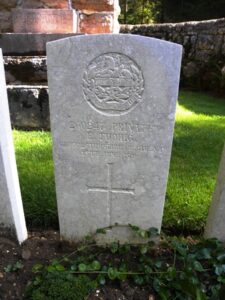
Joseph Arthur Vaughan, Private, 1636, Welsh Regiment. Joseph was born at Llanelli in 1884. He married Maggie Bonham at Llanelli in 1907. Joseph enlisted at Gorseinon into the 1/6th Battalion, Welsh Regiment. On 29 October 1914 the battalion landed at Le Havre and moved to work on Lines of Communication. On 5 July 1915 it was attached to 84 Brigade, 28th Division, then on 23 October 1915 transferred to 3 Brigade, 1st Division. Joseph was killed at Loos on 12 December 1915. He was 31 years old, and is buried at Philosophe British Cemetery, Mazingarbe, France.

William Vaughan, Private, 12735, Devonshire Regiment. William was born at Llanelli, and was the husband of Leah Vaughan, of 50, School St., Llanbradach, Cardiff. He enlisted at Caerphilly into the army, and was posted to the 2nd Battalion, Devonshire Regiment, which was attached to 23 Brigade, 8th Division. The Division moved to the Western Front in November 1914, a badly-needed reinforcement to the BEF which had been all but wiped out at Ypres. They saw their first major action at the Battle of Neuve Chapelle, and then at the Battle of Aubers. They then saw further fighting at the Action of Bois Grenier. William was wounded around this time, and died on 28 August 1915. He was 30 years old, and is buried at Y Farm Military Cemetery, Bois-Grenier, France.

Cecil William Wadman, Private, 44087, Welsh Regiment. Cecil was the son of William Arthur and Ada Annie Wadman, of East Stower, Gillingham, Dorset. He worked at Llanelli prior to the war, and enlisted there into the army. He was posted to the 18th Battalion, Welsh Regiment, which was attached to 119 Brigade, 40th (Bantam) Division. The Division moved to France between the 1 and 9 June, and moved to the front near Loos. Late in 1916 they moved south to the Somme, and fought at the Battle of the Ancre, and remained in the area over the winter. In March 1917 the Germans withdrew to their shortened line, called the Hindenburg Line, and the 40th Division were one of the Divisions that followed the withdrawal. Later in the year they took part in the Battle of Cambrai, playing an important role in the attack on Bourlon Wood. Cecil was killed at Cambrai on 23 November 1917. He was 21 years old, and is commemorated on the Cambrai Memorial, Louverval, France.

Harry Wainman, Private, 70583, Royal Welsh Fusiliers. Harry was the son of George Wainman, of 115, Baughton St., Birmingham, and the husband of Martha Wainman, of 59, High St., Fenton, Stoke-on-Trent. He worked at Llanelli prior to the war, and served with the 9th Battalion, Royal Welsh Fusiliers, which was attached to 58 Brigade, 19th (Western) Division. The Division had been in France since July 1915, and had fought at Loos that year. In 1916 it fought at the Battle of the Somme, and in 1917 fought at Messines and Third Ypres. In 1918 they were caught up in the German Spring Offensive near St. Quentin, where they suffered terrible casualties, and fought at the Battle of Bapaume. They moved to Ypres, but were caught up in the German attack at Messines, and took part in ferocious fighting over the coming days. Harry was wounded here, and died on 13 May 1918. He was 26 years old, and is buried at Esquelbecq Military Cemetery, France.

Philip Dudley Waller, Lieutenant, South African Infantry. Philip was born in Somerset on 28 January 1889, the son of Alfred Percy Waller and Emily Elizabeth Waller (nee Chard). The family had moved to 5, Greenfield Terrace, Llanelli by 1901 and Philip’s father worked as an Inspector for HM Inland Revenue. Philip began his rugby career in Llanelli and became a famous Welsh International rugby player prior to the war. Having then played hooker for Newport, he had won six caps for Wales before war touring South Africa with the British Lions in 1910, and opted to stay in South Africa. When war erupted, he enlisted into the South African forces and gained a commission as Second Lieutenant into the 71st Siege Battery, South African Heavy Artillery. After their formation, the South African Brigade embarked at Cape Town and sailed for Britain, assembling at Bordon Camp in Hampshire. Here the South Africans began three months of training in preparation for embarking for France however, their orders were changed and on 30 December 1915 they boarded ships in Devonport and sailed for Egypt to join the campaign against the Senussi tribesmen. The 1st South African Brigade was then transferred to France early in 1916 to join the 9th (Scottish) Division, joining the division on the Somme. The division took part in the fighting to clear the village of Longueval, before launching an assault on the adjacent Delville Wood on 15 July 1916, where it suffered terrible casualties. By the spring of 1917 the 9th Division was at Arras, where it fought at the First Battle of the Scarpe and the Third Battle of the Scarpe. The Division then moved north to Ypres, and fought at the Battle of the Menin Road, and at the First Battle of Passchendaele, before being moved to Cambrai, and fighting at the Action of Welsh Ridge. Philip was wounded at Cambrai, and died of his wounds on 14 December 1917. The 28-year-old is buried is Red Cross Corner Cemetery, Beugny, France. His brother Richard Percy Waller was killed in a flying accident at Montrose on 23 May 1918 whilst training as a pilot.
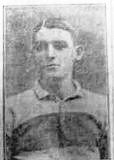
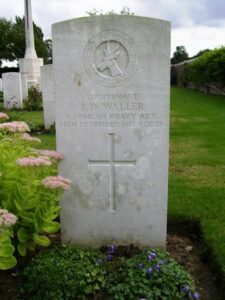
Richard Percy Waller, Lieutenant, Royal Air Force. Richard was born in Islay, Angus, Scotland in 1898, the son of Alfred Percy Waller and Emily Elizabeth Waller (nee Chard). The family had moved to 5, Greenfield Terrace, Llanelli by 1901 and Philip’s father worked as an Inspector for HM Inland Revenue. Richard was commissioned as Second Lieutenant into the Royal Air Force on 15 January 1918. He was learning to fly with 6 Training Squadron, Royal Air Force, when he crashed his aeroplane at Montrose, receiving severe injuries. Richard died on 22 May 1918, aged 20. He is buried at Alloa (Sunnyside) Cemetery, Scotland. His brother Philip also fell. Their parents had by then left Llanelli and were residing at Croft House, Blairlogie, Stirling.
Percy John Walsh, Private, 8639, Royal Irish Rifles. Percy was born at Newry, Co. Down. He must have worked at Llanelli prior to the war, and was a reservist, being recalled to the colours, and going to France with the 2nd Battalion, Royal Irish Rifles, which was attached to 7 Brigade, 3rd Division. One of the first Divisions to move to France, the 3rd Division remained on the Western Front throughout the war, and fought during the opening Battle of Mons, and in the epic retreat, from the Rearguard Action of Solesmes, through the Battle of Le Cateau, and down to the Marne, where the German Offensive was stopped. They followed the German withdrawal to the Aisne, where they met them in battle, and stopped the advance on Paris. The Division then moved north to Flanders, and took part in the Battle of La Bassée, and at the Battle of Messines, which were a prelude to the First Battle of Ypres. Percy was killed at Ypres on 26 October 1914, aged 25. He is commemorated on the Le Touret Memorial, France.
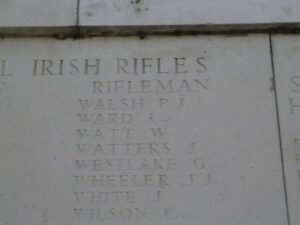
Leonard Alfred Walter, Private, G/95309, Middlesex Regiment. Leonard was the son of Percy and Mabel E. Walter, of 8, College Avenue, Slough, Bucks. He worked at Llanelli prior to the war, and enlisted at Cardiff into the army. He was posted to France with the 4th Battalion, Middlesex Regiment, which was attached to 63 Brigade, 37th Division. The Division had moved to France in August 1915, and had fought at Loos. In 1916 it took part in the Somme offensive, and in 1916 fought at Arras and Ypres. During March 1918 the Division was at the Somme, and fought during the German Offensive, at the Battle of Albert. Their next major action was at the Battle of Havrincourt, during the Battles of the Hindenburg Line, and then the Battle of the Canal du Nord. After the Hindenburg Line had been breached, the Division took part in the advance to victory. Leonard was killed during the Pursuit to the Selle, on 12 October 1918. He was 20 years old, and is buried at Romeries Communal Cemetery Extension, France.
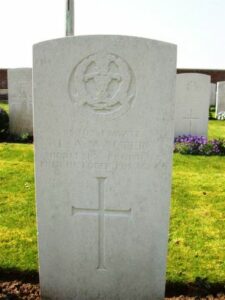
Emrys Walters, Private, 68820, Royal Welsh Fusiliers. Emrys was the son of William and Sarah Walters, of Danygraig, Bynea, Llanelli. He originally enlisted at Cardiff into the Army Service Corps, but was later posted to the 11th Battalion, Royal Welsh Fusiliers, which was attached to 67 Brigade, 22nd Division. The Division crossed to France in early September 1915, but it’s stay in France was to be very short, as on 27 October 1915 the Division began to embark for Salonika. It completed concentration there in November, although the final artillery units were still coming in as late as 13 December 1915. It remained in the theatre for the rest of the war, taking part in the Retreat from Serbia during December, 1915. In August 1916 they fought at the battle of Horseshoe Hill, then in September at the battle of Machukovo. Between 24-25 April and 8-9 May 1917 the Division fought at the battle of Doiran. It was in Salonika, on 6 May 1918, that Emrys was killed. He was 26 years old, and is commemorated on the Doiran Memorial, Greece.
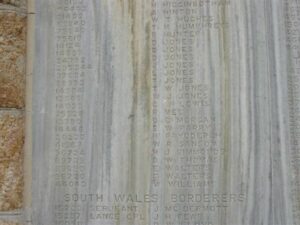
James Walters, Gunner, 188021, Royal Field Artillery. James was the son of Evan and Mary Walters, of 25, Raby Street, Llanelli. He worked at the Gorse Galvanising Works at Dafen prior to enlisting at Llanelli into the Royal Field Artillery. James was posted to France, where he joined ‘Y’, 17th Trench Mortar Battery, RFA, which was attached to the 17th (Northern) Division. James was killed during the first day of the German Spring offensive, during Battle of St. Quentin on 21 March 1918, aged 25. He is commemorated on the Arras Memorial, France.
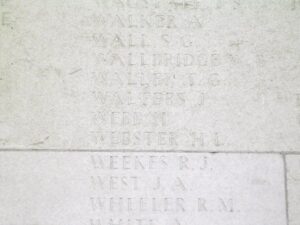
Charles Ward, Private, 86622, King’s Liverpool Regiment. Charles was the son of Henry and Jane Ward, of 11, Amos Terrace, Llanelli. He enlisted at Llanelli into the army, and was posted to France with the 6th Battalion, King’s Liverpool Regiment, which was attached to 165 Brigade, 55th (West Lancashire) Division. The Division had moved to France in January 1916, and had fought on the Somme that year. During 1917 it fought at the Third Battle of Ypres, and at Cambrai. The Division moved to Givenchy in February 1918, and the following month was caught up n the German offensive on the Lys. After several months of heavy fighting, on 24 August 1918 the Division successfully carried out a surprise attack that took and held the Givenchy craters, before taking part in the great advance. Charles was gassed early in September 1918, and died on 7 September 1918, aged 19. He is buried at Pernes British Cemetery, France.
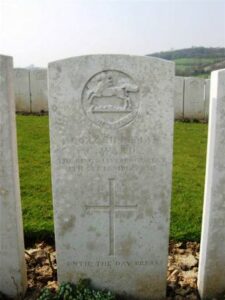
Rupert Washer, Acting Corporal, 201158, Welsh Regiment. Rupert was born at St Clears in 1884, the son of Henry Washer and Anna Washer (nee John) The family later moved to 20, Wellfield Terrace, Llanelli by 1891. Rupert worked as a tinplater and had played rugby for New Dock Stars, captaining the side for several seasons. He married Mary Hannah Rogers in 1910 and moved in with Mary and her parents at 9, Biddulph Street, New Dock. Rupert enlisted at Llanelli into the 1/4th Battalion, Welsh Regiment soon after the outbreak of war. The battalion was the local Territorial unit and mobilised for war at Carmarthen in August 1914, as part of South Wales Brigade, Welsh Division and moved to Tunbridge Wells until the end of the month, before moving to Scotland to man the Forth and Tay Defences. In December the Division moved to Cambridge and then in May 1915 to Bedford, where the Division was numbered and the formation became 158 Brigade, 53rd (Welsh) Division. On 19 July 1915 the entire Division sailed from Devonport for Imbros and on 9 August 1915 landed at Suvla Bay. The infantry moved off the beaches across the Salt Lake, under shellfire, into the scrub covered Chocolate Hill, but due to a lack of maps and no knowledge of the terrain, many of the units became disorientated, and the situation became chaotic. Rupert had been killed in action at sometime during the day, on 26 March 1917. The 32-year-old has no known grave and is commemorated on the Jerusalem Memorial, Israel.
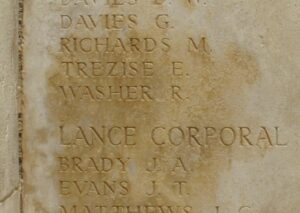
James Waters, Private, 34193, South Lancashire Regiment. James was born at Carlow, Ireland, and resided at 4, Heolfawr, Llanelli prior to the war. He enlisted there on 12 December 1915 into the 3rd Welsh, before being posted to France, where he joined the 8th Battalion, South Lancashire Regiment, which was attached to 75 Brigade, 25th Division. He served in France from 20 July 1917, joining the battalion at Ypres. James fought at Pilckem, before the Division moved to positions around Bullecourt in reserve. Here the Division was used to reinforce the badly depleted British units that were hit in the area by the German Spring Offensive. They moved north to Flanders on the night of 30 March 1918, where they took up positions at Ploegsteert again, where they received reinforcements, and rebuilt. However, on 9 April the Germans launched an offensive on the Lys, and the Division was caught up in the terrible fighting here, at the Battles of Estaires, Bailleul, Messines and Kemmel. The Division withdrew to Abeele on 17 April, but on 25 April was ordered back into the line, and took part in the Second Battle of Kemmel. On 9 May the Division moved to Fismes, 20 miles south-east of Soissons in the Champagne, to give it a chance to rest and rebuild again. However, on 26 May they took up positions south of the Aisne, to guard against a predicted German Offensive. On 27 May 1918 the attack hit them, and during the coming days the Division was virtually annihilated. James was sent to hospital in July 1917 after taking ill, and arrived back in Ireland, where he died of pneumonia on 31 October 1918. He was 24 years old, and is buried at Grangegorman Military Cemetery, Ireland.
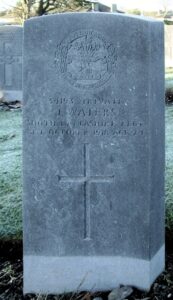
Lewis Watkins, Private, 3237, Welsh Guards. Lewis was the son of William and Emma Watkins, of 67, Trosnant, Pontypool, Monmouth. He resided at Dafen prior to the war, working as a Furnaceman in one of the local tinworks, and enlisted at Llanelli into the 1st Battalion, Welsh Guards. The battalion was attached to 3 Brigade, Guards Division. This division formed in France in August 1915, and saw its first action at the Battle of Loos on 25 September 1915, remaining in the area during the coming months, where they also fought in the subsequent Action of Hohenzollern Redoubt. In July 1916 the Division moved to the Somme, where they fought at the Battle of Flers-Courcelette, and then at the Battle of Morval, capturing Lesboeufs Village. They remained here for the winter, and in March 1917 took part in the advance caused by the German Retreat to the Hindenburg Line. Later that year they moved north to Ypres, where they fought at the Battle of the Pilckem, and then at the Battle of the Menin Road, Battle of Poelcapelle and the First Battle of Passchendaele. November saw them move south again, where they took part in the Battle of Cambrai. Lewis was killed in action here on 1 December 1917, aged 34. He has no known grave, and so is remembered on the Cambrai Memorial, Louverval, France.
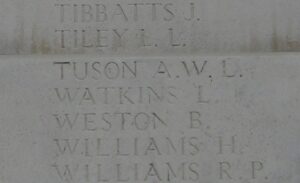
Albert Victor Weaver, Private, 56941, Welsh Regiment. Albert was born in Hackney, but lived at 46, Railway Terrace, Llanelli prior to the war. He enlisted at Llanelli into the Pembroke Yeomanry in August 1914, and was sent to France in August 1916, where he joined the 13th Battalion, Welsh Regiment, which was attached to 114 Brigade, 38th (Welsh) Division. The Division had recently suffered terrible casualties at Mametz Wood and were taken out of the line, and moved to Ypres to rebuild. Here they fought at the Battle of Pilckem Ridge, and the Battle of Langemarck. Albert was killed at Langemarck on 23 August 1917, aged 23. He is commemorated on the Tyne Cot Memorial, Belgium.
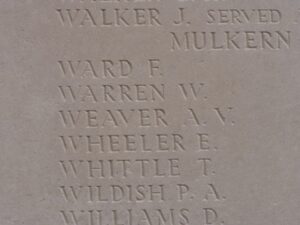
Fred Webb, Private, 24554, South Staffordshire Regiment. Fred was born at Bilston, Staffs, and worked at Llanelli prior to the war. He enlisted at Birmingham, and was posted to France where he joined the 1st Battalion, South Staffordshire Regiment, which was attached to 91 Brigade, 7th Division. The Division had been in France since landing at Zeebrugge on 6 October 1914, and was the first British Division at Ypres. It had taken part in every major action of the war, and by the summer of 1917 had moved to Ypres, after fighting at Arras. Fred was wounded here, during the Battle of Polygon Wood, and died on 3 October 1917. He is buried at Lijssenthoek Military Cemetery, Belgium.
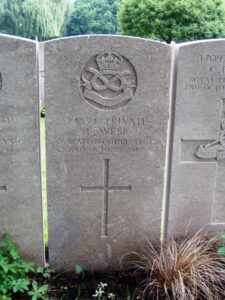
Harold West, Corporal, S/1022, Rifle Brigade. Harold was born at Barry, the son of Henry and Elizabeth West. He worked at Llanelli with his brother Thomas prior to the war. He enlisted back at Barry with his brother Thomas into the 11th Battalion, Rifle Brigade, which was attached to 59 Brigade, 20th (Light) Division. On 26 July 1915 the Division moved to the Fleurbaix Sector for trench familiarisation and training. When the Battle of Loos was launched on 25 September 1915 the Division fought a diversionary attack towards Fromelles. Later that year they moved north, and fought at the Battle of Mount Sorrel alongside the Canadian Corps. They then fought through the Somme Offensive. Harold was killed here during the Battle of Guillemont, on 27 August 1916, aged 21. He is commemorated on the Thiepval Memorial, France. His brother Thomas Henry West had been killed just weeks earlier.
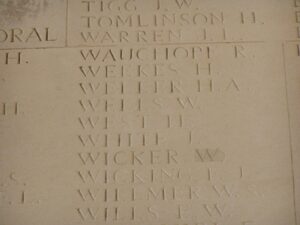
Thomas Henry West, Corporal, S/1019, Rifle Brigade. Thomas born at Cardiff, the son of Henry and Elizabeth West. He worked at Llanelli with his brother Harold prior to the war. He enlisted at Barry with his brother Harold into the 11th Battalion, Rifle Brigade, which was attached to 59 Brigade, 20th (Light) Division. On 26 July 1915 the Division moved to the Fleurbaix Sector for trench familiarisation and training. When the Battle of Loos was launched on 25 September 1915 the Division fought a diversionary attack towards Fromelles. Later that year they moved north, and fought at the Battle of Mount Sorrel alongside the Canadian Corps. Thomas was killed during Battle of Mount Sorrel, on 10 July 1916, aged 27, and is buried at Vlamertinghe Military Cemetery, Belgium. His brother Harry was killed just weeks later on the Somme.
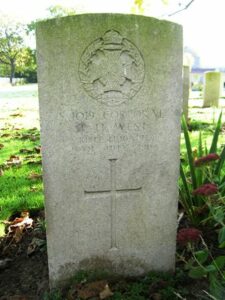
Benjamin Wharton, Private, 226088, King’s Shropshire Light Infantry. Benjamin was the son of William and Maria Wharton of Lamphey. He worked at Llanelli prior to the war, and enlisted there into the army. Benjamin served with the Cheshire Regiment, before being posted to the 10th Battalion, King’s Shropshire Light Infantry, which was attached to 231 Brigade, 74th (Yeomanry) Division. The Division had formed in Egypt in January 1917 and had fought through the Palestinian Campaign, at the Battles of Gaza and the Battle and capture of Jerusalem. Due to the terrible casualties suffered by the British on the Western Front in March and April 1918 the Division was recalled to the Western Front, and arrived at Marseilles during May 1918. Benjamin was killed on the Somme on 2 September 1918. He was 33 years old, and is buried at Sailly-Saillisel British Cemetery, France.
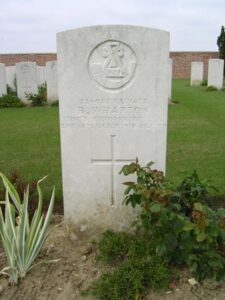
Walter Whitcombe, Private, 3902190, South Wales Borderers. Walter was the husband of Elizabeth Whitcombe, of 37, Custom House Bank, Llanelli. He served with the 2nd Battalion, South Wales Borderers. After the Armistice, the battalion moved to Barrackpore, India, on Garrison duty. Walter took ill and died in India on 18 August 1920. He was 32 years old, and was buried at Jhansi Cantonment Cemetery. He is today commemorated on the Madras 1914-1918 War Memorial, Chennai, India.
Gwilym White, Private, 74010, Welsh Regiment. Gwilym was the son of William and Elizabeth White of Llanelli. He had enlisted at Llanelli into the army, and in 1918 was posted to France where he joined the 15th Battalion, Welsh Regiment, the Carmarthen Pals battalion, which was attached to 114 Brigade, 38th (Welsh) Division. Gwilym joined the battalion on the Somme, and would have taken part in the famous crossing of the River Ancre by the 15th Welsh on 21 August 1918. The Welsh Division then drove across Thiepval and Pozières Ridge, before embarking on their part of the great offensive, towards the Hindenburg Line. Gwilym was killed during the Battle of Epehy, on 19 September 1918, aged 24. He is commemorated on the Vis-En-Artois Memorial, France.

Patrick White, Private, 24035, Royal Irish Fusiliers. Patrick was born at Dundalk, Ireland the son of Patrick White, and lived at 4, King’s Square, Llanelli prior to the war. He enlisted at Llanelli into the army, and landed in France on 24 September 1916 where he joined the 1st Battalion, Royal Irish Fusiliers, which was attached to 10 Brigade, 4th Division. He joined the battalion on the Somme, and was killed on 18 February 1917, aged 31. Patrick was buried at Hem Farm Military Cemetery, Hem-Monacu, France.
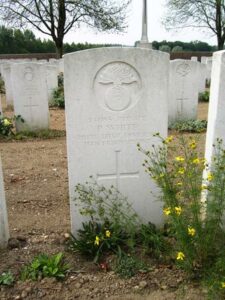
Reginald Lindsay White, Sapper, 448341, Royal Engineers. Reginald was born in 1896, the son of Thomas and Annie White, of 11, Stepney Place, Llanelli. He enlisted there into the Royal Engineers. He served with the 437th Field Company, which had been created after the renumbering of the Welsh Field Company, Royal Engineers, remaining with the 53rd (Welsh) Division. Reginald was wounded in Palestine in August 1917, and died of wounds on 10 August 1917, aged 20. He is buried in Gaza War Cemetery, Israel.
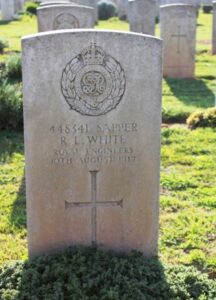
William Whitehouse, Private, 15735, Worcestershire Regiment. William was born at West Bromwich, the son of William and Sarah Ann Whitehouse. The family later moved to Havard Road, Llanelli, and he enlisted there on 4 September 1914 into the 10th Battalion, Worcestershire Regiment, which was attached to 57 Brigade, 19th (Western) Division. The Division crossed to France during July 1915, and moved to positions near Loos. William sadly became ill with fever, and died here soon after, on 6 August 1915. He was just 19 years old, and is buried at Merville Communal Cemetery, France.
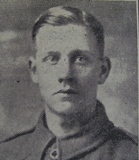
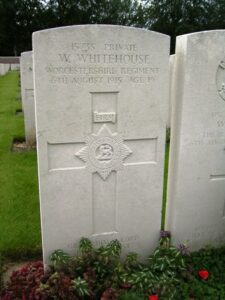
Thomas Aaron Whitney, Private, 73103, Welsh Regiment. Thomas was the son of William and Sarah Eliza Whitney, of 16, Cedric Street, Bigyn, Llanelli. He was posted to France during 1918 where he joined the 14th Battalion, Welsh Regiment, which was attached to 114 Brigade, 38th (Welsh) Division. Thomas joined the battalion on the Somme, and would have taken part in the famous crossing of the River Ancre on 21 August 1918. The Welsh Division then drove across Thiepval and Pozières Ridge, before embarking on their part of the great offensive, towards the Hindenburg Line. Thomas was killed during the capture of the village of Morval on 27 August 1918. He was 19 years old, and is buried at Morval British Cemetery, France.
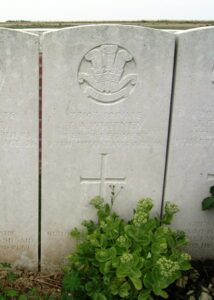
Thomas Wilkins, Private, 13136, Royal Welsh Fusiliers. Thomas was the son of Walter and Jane Wilkins, of Cwm, Furnace, and worked as a Gardener to Major Bythway prior to the war. He enlisted at Llanelli into the 9th Battalion, Royal Welsh Fusiliers, which was attached to 58 Brigade, 19th (Western) Division. The Division moved to France during July 1915, and moved to positions near Loos, where it took part in the opening attack of the Battle of Loos on 25 September 1915. Thomas was killed during the charge across No Mans Land that day. He was 18 years old, and is commemorated on the Loos Memorial, France.
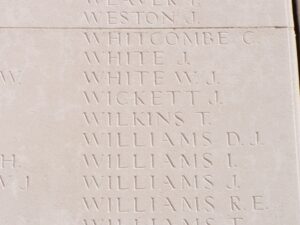
Arthur Williams, Sergeant, 42533, South Wales Borderers. Arthur was the son of David and Ann Williams, of 3, Biddulph Street, New Dock, Llanelli. He enlisted into the King’s Shropshire Light Infantry at the outbreak of war, before being transferred into the 2nd Battalion, South Wales Borderers, which was in France attached to 87 Brigade, 29th Division. The Division took part in its first major action in France during the 1916 Somme Offensive, and fought at the Battles of Albert and Le Transloy, suffering heavy casualties. In the Spring of 1917 they fought at the Battle of the Scarpe, which was part of the Arras Offensive, and then moved further north, taking part in the Third Battle of Ypres, before moving to Cambrai. Here they fought at the Battle of Cambrai in November and December 1917 before moving back to Flanders early in 1918. The German Spring Offensive hit the British on the Somme on 21 March 1918, and hit in Flanders just weeks later. Arthur was killed during the Battle of Estaires, on 11 April 1918, aged 33. He is commemorated on the Ploegsteert Memorial, Belgium.
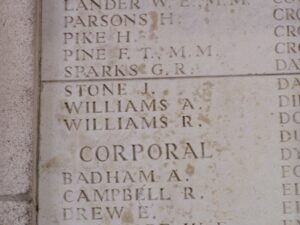
Benjamin Williams, Private, 203271, Labour Corps. Benjamin was the son of William and Mary Williams, of 16, High Street, Llanelli, and the husband of Mary Jane Williams, of 5, Forge Row, Llanelli. Benjamin enlisted at Cardiff into the army, and was posted to France where he joined the 22nd Company, Labour Corps at Ypres. Benjamin was wounded at Ypres during the time of the Battle of Polygon Wood, and was killed by a bomb dropped from a German aeroplane on 29 September 1917. He was 34 years old, and is buried at Ypres Reservoir Cemetery, Belgium.
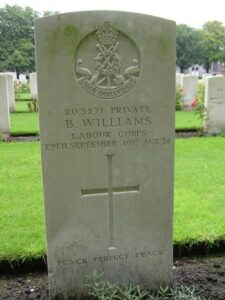
Brinley Williams, Private, 48483, Royal Army Medical Corps. Brinley was the son of John and Selina Williams of Elli House, Tunnel Road, Llanelli. He enlisted at Porthcawl into the Royal Army Medical Corps, and was posted to France with the 62nd Field Ambulance, RAMC, which was attached to the 20th (Light) Division. On 26 July 1915 the Division moved to the Fleurbaix Sector for trench familiarisation and training. When the Battle of Loos was launched on 25 September 1915 the Division fought a diversionary attack towards Fromelles. Later that year they moved north, and fought at the Battle of Mount Sorrel alongside the Canadian Corps. They then fought through the Somme Offensive. Brinley was killed by a shell during the Battle of Guillemont, on 31 August 1916. He was 25 years old, and is buried at Dantzig Alley British Cemetery, Mametz, France.


Charles Williams, Sergeant, 12907, Welsh Regiment. Charles was the son of James Francis and Elizabeth Williams, of Pembridge, Herefordshire. He worked at Llanelli prior to the war, and enlisted there into the 9th Battalion, Welsh Regiment, which was attached to 58 Brigade, 19th (Western) Division. The Division moved to France during July 1915, and moved to positions near Loos, where it took part in the opening attack of the Battle of Loos on 25 September 1915. The following year the Division moved to the Somme, where it took part in the second wave of the attack on Ovillers-La Boiselle on 1 July, capturing the village at heavy cost. It then fought through the Somme Battles of Pozières and the Ancre in 1916. Charles was wounded on the Ancre, and died on 22 November 1916. He was 22 years old, and is buried at Puchevillers British Cemetery, France.
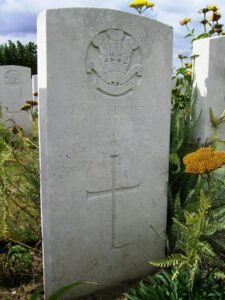
Daniel George Williams, Private, 12525, Royal Welsh Fusiliers. Daniel was the son of John and Margaretta Williams of Incline Row, Dafen. He had married Jane Chamberlain in 1906, and the couple lived at 2, Charles Street, Trealaw, with their three daughters. Daniel enlisted at Tonypandy into the 8th Battalion, Welsh Regiment, which was attached to 40 Brigade, 13th (Western) Division. On 13 June 1915 the division sailed for Alexandria, and then moved to Mudros, preparatory for landing on Gallipoli. During July 1915 the division landed on Cape Helles and relieved the 29th Division. During the following month the division moved to ANZAC Cove and took part in the Battle of Sari Bair. This is where Daniel was killed on 11 August 1915, aged 29. He has no known grave, and so is remembered on the Helles Memorial, Gallipoli. Daniel is not named on the memorial.
David Williams, Private, 45771, Welsh Regiment. David was the brother of Mrs. M. Thomas, of 10, Tabernacle Terrace, Blaenau Festiniog, Merioneth. He worked at Llanelli prior to the war, and enlisted there into the army. David was posted to France late in 1916, where he joined the 15th Battalion, Welsh Regiment, which was the Carmarthen Pals battalion, attached to 114 Brigade, 38th (Welsh) Division. The Division had suffered terrible casualties at Mametz Wood, and were taken out of the line, and moved to Ypres to rebuild. Here they fought at the Battle of Pilckem Ridge, and the Battle of Langemarck. They then moved to Armentieres, where they remained from September 1917 until March 1918 when the German Spring Offensive was launched. The British had been over-run on the Somme, and so in April the Division was moved south, taking up positions North of Albert, from where they weathered the storm of the coming months. On 21 August 1918 the 38th Welsh Division began its attack across the River Ancre, and over the coming weeks drove towards the Hindenburg Line. David was killed during the Battle of Epehy, on 18 September 1918. He is buried at Gouzeaucourt New British Cemetery, France.
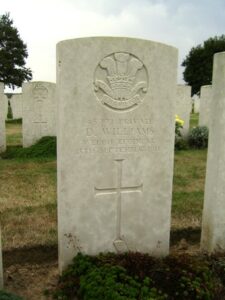
David George Williams, Private, 267421, Royal Warwickshire Regiment. David was the son of John and Louisa Williams, of 32, College Hill, Llanelli. He originally enlisted into the 4th Welsh, before being transferred into the 2/7th Battalion, Royal Warwickshire Regiment, which was attached to 182 Brigade, 61st (2nd South Midland) Division. The Division moved to France during 21 May 1916, moving to positions at Fromelles. The first major action in which the Division was engaged turned out to be a disaster, with heavy casualties suffered, for no real gains. David survived Fromelles, and served in France for a year before returning home ill. He died on 7 June 1916, aged 26, and is buried at Box Cemetery, Llanelli.
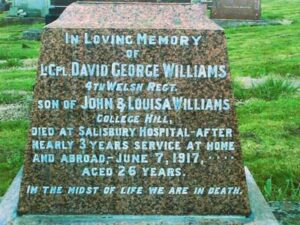
David James Williams, Private, 13385, Royal Welsh Fusiliers. David was the son of Isaac and Elizabeth Annie Williams, of 30, Rice Street, Llanelli. He enlisted there into the 9th Battalion, Royal Welsh Fusiliers, attached to 58 Brigade, 19th (Western) Division. The Division crossed to France during July 1915, and moved to positions near Loos. The Division fought during the opening attack of the Battle of Loos, and it was here that David was killed in action on 25 September 1915, aged 19. He has no known grave, and so is remembered on the Loos Memorial, France.
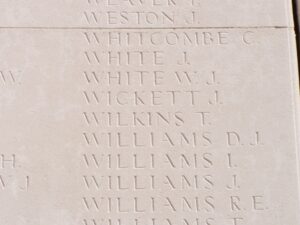
David John Williams, Third Engineer, Mercantile Marine. David was the son of John and Jane Williams, of 33, Nevill Street, Llanelli. He served with the Mercantile Marine aboard the SS Thracia. On 27 March 1917, Thracia was on a voyage from Bilbao to Ardrossan with a cargo of iron ore, when she sunk by a torpedo from the German submarine UC-69. David was killed in the sinking that day. He was 24 years old, and is commemorated on the Tower Hill Memorial, London.
David Joseph Williams, Stoker 1st Class, 36243, Royal Navy. David was born on 30 November 1893, the son of Walter and Mary Williams, of Russell Street, Llanelli. He served with the Royal Navy aboard HMS Contest, which was an Acasta class destroyer, which had been launched in 1913. David died when Contest was torpedoed and sunk by the German submarine U-106 on 18 September 1917. He was 22 years old, and is commemorated on the Plymouth Naval Memorial, Devon.
Evan Williams, Sapper, W/150097, Royal Engineers. Evan was the son of Eleazor and Ann Williams, of Llanelli, and the husband of Mary Ellen Williams, of 12, Pemberton Street, Llanelli. He had enlisted at the outbreak of war into the 4th Battalion, Welsh Regiment, and on 17 February 1918 was posted to the Royal Engineers in France. Evan worked on the railways in France until being demobilised on 28 April 1919. He died during 1921, but is not commemorated by the CWGC, so further research is ongoing.
F. Williams, Private, Yorkshire Regiment. This man cannot presently be identified.
George Williams, Private, 13161, South Wales Borderers. George was the son of David and Mary Ann Williams, of 7, Robinson Street, Llanelli. He enlisted at Llanelli at the outbreak of war into the 2nd Battalion, South Wales Borderers. He served with the battalion at Gallipoli, before contracting enteric fever, and being hospitalised at Malta in 1915. George was then posted to France with the 1st Battalion, South Wales Borderers, which was attached to 3 Brigade, 1st Division. George probably fought with the Division on the Somme in 1916. They followed the German retreat to the Hindenburg Line in early 1917, and were then briefed for an operation on the Flanders Coast, and moved there during the summer of 1917. While training on the coast, the Battle of Third Ypres had stalled in the mire, and the Division were recalled to Ypres, where they fought at the Second Battle of Passchendaele. George was killed here on 10 November 1917. He was 35 years old, and is buried at Tyne Cot Military Cemetery, Belgium.
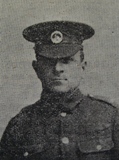
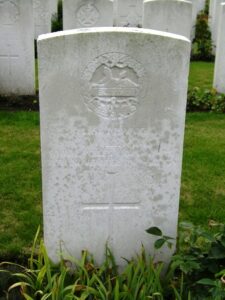
Henry Herbert Williams, Corporal, 38735, Welsh Regiment. Henry was born at Battersea in 1892, the son of Benjamin and Emma Williams, but resided at Llanelli prior to the war. He enlisted there into the Welsh Regiment, and had served at Gallipoli and the Balkans from September 1915. He returned to Britain in 1917, and was attached to the 3rd Welsh, which was a Reserve Battalion. Henry died in hospital on 1 December 1917, aged 25. He is buried at Redcar Cemetery, Yorkshire.
Henry Ivor Williams, Trimmer, 1945ST, Royal Naval Reserve. Henry was born at Newcastle Emlyn on 20 March 1896, the son of Isaiah and Margaret Williams. By 1911 the family had moved to 15, Rice Street, St. Paul’s, Llanelli. Henry served with the Royal Naval Reserve aboard HMS St. George, which was a Depot Ship. Henry took ill aboard her, and died at Salonika on 8 October 1916. He was 20 years old, and is buried at Salonika (Lembet Road) Military Cemetery, Greece.
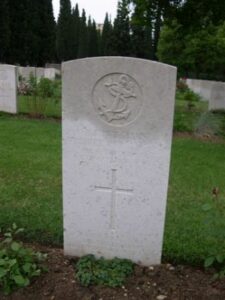
John Williams, Private, 38530, South Wales Borderers. John was born at Burry Port, the son of David and Margaret Williams. By 1911 the family had moved to 6, Nevill’s Terrace, Dafen. John enlisted at Llanelli into the 12th Battalion, South Wales Borderers, who were attached to 119 Brigade, 40th (Bantam) Division. This division was composed of bantam units, and moved to France during June 1916, and moved to the front near Loos. Late in 1916 they moved south to the Somme, and fought at the Battle of the Ancre, and remained in the area over the winter. In March 1917 the Germans withdrew to their shortened line, called the Hindenburg Line, and the Division was one of the Divisions that followed the withdrawal. Later in the year they took part in the Battle of Cambrai, playing an important role in the attack on Bourlon Wood. John was killed in action here on 25 November 1917, aged 18. He has no known grave, and so is remembered on the Cambrai Memorial, Louverval, France. The photograph of John is courtesy of Amy Williams.
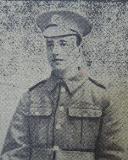
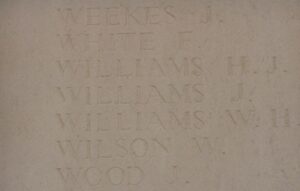
John Basil Percy Williams, Private, 19981, Royal Welsh Fusiliers. John was born at Param, West Indies, the son of Reverend William Rhys Williams and Sara Jane Williams. The family returned to Wales when John was young, and he was educated at Ystrad Meurig Grammar School before entering St. David’s College, Lampeter on 16 October 1908. He enlisted at Llandudno late in 1914 into the 16th Battalion, Royal Welsh Fusiliers, which was attached to the Welsh Division (later 113 Brigade, 38th (Welsh) Division). The Division had landed in France during December 1915 and had spent their first winter in the trenches near Armentieres. In June they marched south to the Somme, where they were tasked with the capture of Mametz Wood. The attack on the wood began on 7 July, but met with fierce resistance, and it took until 14 July to totally clear the wood. The Division suffered terrible casualties at Mametz, and were taken out of the line, and moved to Ypres to rebuild. John was among a batch of men attached to the 254th Tunnelling Company, Royal Engineers at Ypres, and was killed there on 25 June 1917. He was 28 years old, and is buried in Poperinghe New Military Cemetery, Belgium.
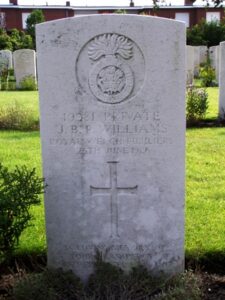
John Charles Williams, Private, 201121, Welsh Regiment. John was the son of George and Elizabeth Williams, of 27, Stepney Place, Llanelli. He enlisted at Llanelli into the 4th Welsh, and was posted to France in 1917 as a reinforcement for the 15th Battalion, Welsh Regiment, the Carmarthen Pals battalion, which was attached to 114 Brigade, 38th (Welsh) Division. John would have joined the Division at Ypres, and possibly fought at Pilckem Ridge. After wintering in the Armentieres sector, the Division moved to the Somme in April 1918, and remained here until the 15th Welsh crossed the River Ancre on 21 August 1918, creating bridgeheads for the remainder of the Division to cross, when they began their great advance towards the Hindenburg Line. John was killed during the Second Battle of Bapaume, on 4 September 1918. He was 35 years old, and is buried at Morval British Cemetery, France.
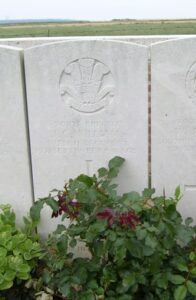
John Morgan Williams, Stoker, K/36178, Royal Navy. John was born on 14 July 1895, the son of Robert J. and Mary Ann Williams, of Brig-Y-Don, New Dock Street, Llanelli. He served with the Royal Navy aboard HMS Ajax, a King George V Class Battleship. Ajax had fought at the Battle of Jutland on 31 May 1916. She had remained based at Scapa Flow with the Grand Fleet for the remainder of the war. John took ill, and died on 28 October 1918. He was 23 years old, and was buried at Box Cemetery, Llanelli.
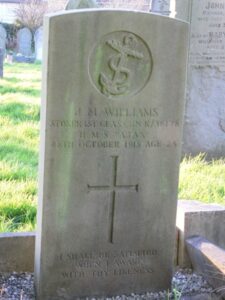
John Trevethan Williams, Private, 330789, Royal Scots. John was the son of William James Williams and Mary Jane Williams, of 12, West End, Llanelli. He enlisted at Bakewell, Derby into the Sherwood Foresters, before being transferred into the 2nd Battalion, Royal Scots, which was attached to 8 Brigade, 3rd Division. The Division had been one of the first in France, and had fought at every major battle thereafter. In the summer of 1917 it moved to Ypres, and it was here on 26 September 1917 that John was killed, during the Battle of Polygon Wood. He was 24 years old, and is commemorated on the Tyne Cot Memorial, Belgium.
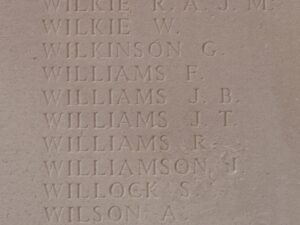
Martin Luther Williams, Private, 129591, Machine Gun Corps. Martin was born at Llanelli, the son of Joseph and Margaret Williams. The family emigrated to America prior to the war, residing at 6065, Chabot Road, Oakland, California, U.S.A. Martin enlisted at New York, and sailed for England, where he joined the Royal Fusiliers. Martin was later transferred into the 12th Battalion, Machine Gun Corps, which was attached to the 12th (Eastern) Division. The Division relieved the 38th (Welsh) Division in the Fleurbaix front in February 1918, and on 24 March moved by motor lorry to Albert, where they were thrown into a desperate battle during the German Offensive. After suffering heavy losses, the Division withdrew at the beginning of April, to Toutencourt. Martin was killed on 17 May 1918. He was 31 years old, and is buried at Mailly Wood Cemetery, Mailly Maillet, France.
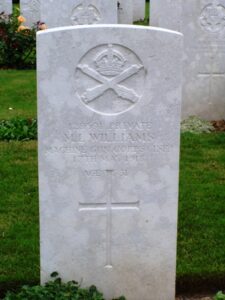
Peter Williams, Private, 201130, Welsh Regiment. Peter had been born at Llanedy in 1888, the son of David and Catherine Williams. He married Elizabeth Ann Richards in 1904 and on 22 May 1906 she gave birth to their son Sydney. By 1911 Peter was lodging at Brook Street, Gwaun-cae-Gurwen, and worked there as a bricklayer. Peter had enlisted into the Welsh Regiment Militia at Pantyffynon on 14 October 1907, and during the following year the battalion became the 4th Battalion, Welsh Regiment. The battalion was the Carmarthenshire Territorial battalion, attached to 158 Brigade, 53rd (Welsh) Division. The Division sailed for the Mediterranean in July 1915 arriving at Mudros by 5 August 1915. From here they moved to Gallipoli, landing on 9 August. Here the Division was immediately thrown into action, and spent the next few days in isolated pockets, fighting against a Turkish counter-attack during the Battle of Sari Bair, and then at the Attack on Scimitar Hill. The Division remained here throughout the coming months, and suffered severe losses in manpower strength during the great November 1915 blizzard on Gallipoli, when its total strength was reduced to less than that of a full-strength Brigade. On 11 December 1915 the Division was evacuated to Mudros, and by 23 December 1915 were moved to Egypt. They remained on the Suez Canal Defences for the next twelve months, and in early 1917 moved into Palestine, where it took part in the First Battle of Gaza. Peter was killed here on 26 March 1917, aged 35, and is commemorated on the Jerusalem Memorial, Israel.
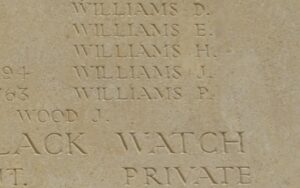
Richard John Williams, Private, 56653, Royal Welsh Fusiliers. Richard was the son of Mary Williams, later of 71, Bigyn Hill, Llanelli, and lived at Maenclochog prior to the war. He originally enlisted into the Welsh Regiment, being allotted the service number 45585, and after training at Kinmel Park was posted to the 14th Battalion, Royal Welsh Fusiliers, which was in France as part of 113 Brigade, 38th (Welsh) Division. The Division had been on the Western Front since December 1915, and had seen action in Flanders before moving to the Somme in June 1916, where it fought at Mametz Wood. It then returned to Flanders, and took part in the Battle of Pilckem Ridge in July 1917, before spending the last winter of the war around Armentieres. In March 1918 the Division was rushed to positions on the Somme to reinforce the thinly stretched lines there, after the German offensive of March 1918, and moved to the Aveluy Sector. Richard died while at Aveluy, on 18 July 1918. He was 27 years old, and is buried at Tourgeville Military Cemetery, France.
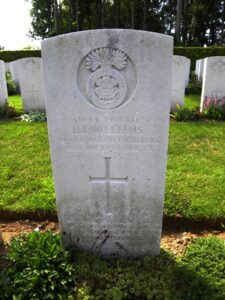
Sidney James Williams, Private, 202990, Royal Welsh Fusiliers. Sidney was the son of John and Sarah Williams, of Llanelli, and the husband of Lucy Williams, of 7, Caradog Street, Llanelli. He had enlisted at Carmarthen on 17 October 1914 into the Pembroke Yeomanry. After several months seconded to the Morfa Tinplate Works, he was posted on 8 December 1916 to the 4th Battalion (Denbighshire), Royal Welsh Fusiliers, which was the Pioneer Battalion to the 47th (2nd London) Division. The Division moved to France in March 1915, and fought at Loos later that year. In 1916 it was attacked by a German assault on Vimy Ridge, before moving to the Somme, fighting at Flers-Courcelette. In 1917 it moved to Ypres, and it was here, during the Passchendaele Offensive, that Sidney was killed on 26 August 1917, aged 26. He is buried at Belgian Battery Corner Cemetery, Belgium.
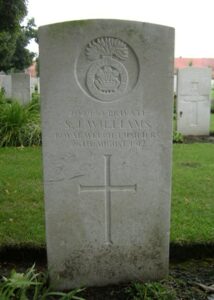
Stanley Henry Williams, Private, 1933, Royal Army Medical Corps. Stanley was the son of Augustus Robert and Ellen Williams, of Cecil House, Waun Wen Road, Swansea. He resided at Llanelli prior to enlisting into the 1/3rd Welsh Field Ambulance, which was attached to the 53rd (Welsh) Division. The Division landed at Gallipoli on 9 August 1915, and was plunged into heavy fighting almost immediately. Stanley was killed in action on 14 August 1915, aged 21, and is buried at Hill 10 Cemetery, Gallipoli.
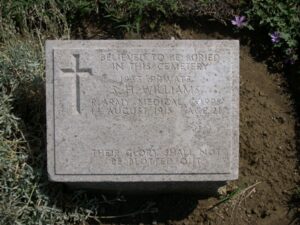
Sydney Williams, Corporal, 13163, Royal Welsh Fusiliers. Sydney was the son of David and Jane Williams, of 5, Park View Terrace, Llanelli. He enlisted there into the 9th Battalion, Royal Welsh Fusiliers, which was part of 58 Brigade, 19th (Western) Division. The Division crossed to France during July 1915, and moved to positions near Loos, form where they fought during the opening attack of the Battle of Loos, on 25 September 1915. Sydney was wounded at Loos, and brought back to the UK for treatment, but sadly died of wounds in hospital at Bury St Edmunds on 20 October 1915. He was 24 years old, and is buried at Felinfoel (Adulam) Baptist Burial Ground.
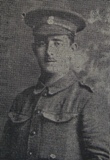

Thomas Williams, Lance Corporal, 9596, Welsh Regiment. Thomas was born in Llanelli on 12 November 1884, the son of George and Minnie Williams. The family later resided at 13, Grey Street, Canton, Cardiff. Thomas enlisted at Cardiff into the 1st Battalion, Welsh Regiment prior to the war and had served in India and Egypt prior to 1914. The battalion was recalled from India at the outbreak of war, to join the newly formed 84 Brigade, 28th Division. The division moved to France during January 1915, and saw its first major action during the Second Battle of Ypres. Following serious casualties at Ypres, a Composite Brigade was formed, composing of the 2nd Battalion, the Buffs, 2nd Battalion, the Cheshires, 1st Battalion, the Welsh, and 1st Battalion, the York and Lancaster. It was dissolved on 19 May 1915, and the formation assumed its normal configuration, taking part in the Battle of Loos. During October 1915, the Division embarked at Marseilles, and proceeded to Egypt, and in November moved on to Salonika where the Division then remained. Thomas was killed in action in Salonika on 28 February 1902, aged 31. He is buried in Struma Military Cemetery, Greece.
T. W. S. Williams, Private. This man cannot presently be identified.
Thomas John Williams, Sapper, 448495, Royal Engineers. Thomas was born in Llanelli, and enlisted there into the Welsh Field Company, Royal Engineers. The company fought at Gallipoli with the 53rd (Welsh) Divisaion after landing on 8 August 1915, and after the evacuation in January 1916 moved to Egypt. In March 1917 the company was reorganised, and Thomas joined the 437th Field Company, Royal Engineers, still in the 53rd Division. Thomas died of sickness during the Final Offensive beyond the Jordan, on 15 October 1918 and is buried at Kantara War Memorial Cemetery, Egypt.
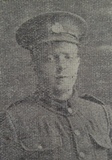
Thomas Sidney Williams, Private, 203543, Welsh Regiment. Thomas was the son of Martin and Margaret Ann Williams, of 4, Swansea Road, Llanelli. He had enlisted at Carmarthen into the army, and after raining was sent to France where he joined the 15th Battalion, Welsh Regiment, known as the Carmarthen Pals. The battalion had been in France since December 1915 as part of 114 Brigade, 38th (Welsh) Division, and had seen action in Flanders before fighting on the Somme at Mametz Wood in 1916. In 1917 it had fought at Pilckem Ridge and Langemarck during the Passchendaele Offensive, before moving to positions near Armentieres for the winter. In March 1918 the Germans launched a massive attack on the British lines in front of the old Somme battlefields, and drove the British back along a narrow front as far as Albert. The 38th Division was sent to Albert at the end of the month to consolidate the line north of Albert at Aveluy Wood. On 10 May 1918 the 15th Welsh assaulted the wood under a concentrated artillery barrage. Due to a mistake, the artillery fell on the Welshmen, inflicting heavy casualties. Thomas was one of many killed that day by friendly fire. He was 19 years old, and is commemorated on the Pozières Memorial, France.
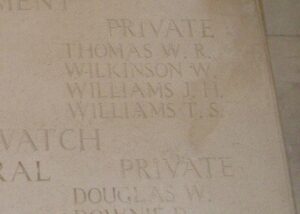
W. Williams, Private, South Wales Borderers. This man cannot presently be identified.
Walter Williams, Sapper, 42584, Royal Engineers. Walter was born at Llanelli, and had fought in South Africa during the Boer War of 1899-1902. At the outbreak of the Great War he was recalled, and joined the 73rd Field Company, Royal Engineers, which was attached to the 15th (Scottish) Division. The Division landed in France during July 1915, and soon gained a reputation as one of the most formidable in the British Army. They saw their first major action during the Battle of Loos, and it was here that Walter was killed on 26 September 1915, aged about 40. He is commemorated on the Loos Memorial, France.
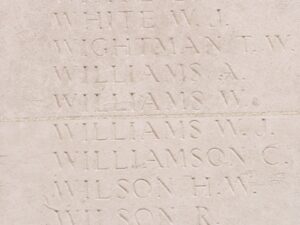
Walter Williams, Private, 4435, Welsh Regiment. Walter was the son of George Williams, of 9, Park Crescent, Llanelli, and the husband of Mary Williams, of 17, Gellideg, Capel, Llanelli. He enlisted into the 1/4th Battalion, Welsh Regiment, which was the local Territorial Battalion, attached to 159 Brigade, 53rd (Welsh) Division. The Division landed at Cape Helles, Gallipoli, on 9 August 1915, and was immediately thrown into action, spending the next few days in isolated pockets, fighting against a Turkish counter-attack during the Battle of Sari Bair. Walter was killed here on 10 August 1915. He was 33 years old, and is commemorated on the Helles Memorial, Gallipoli.
William Williams, Sergeant, 207204, Royal Engineers. William was born at Llanelli, the son of John and Ruth Williams. The family later lived at Mardy, before moving to Narberth. William had enlisted at Mardy into the Royal Field Artillery, before being transferred into the 174th Tunnelling Company, Royal Engineers. The Tunnelling Companies carried out secret underground work, constructing mines and bunkers throughout the British sectors of the Western Front. William took ill during operations at Beaumont Hamel, and died on 8 September 1917, aged 41. He is buried at Favreuil British Cemetery, France.
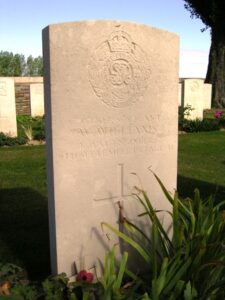
William Williams, Private, 204551, Labour Corps. William was born in Cheshire, but resided at Llanelli prior to the war. He served with the 22nd Company, Labour Corps. William was killed in action during the Battle of Polygon Wood, on 29 September 1917. He is buried at Aeroplane Cemetery, Belgium.
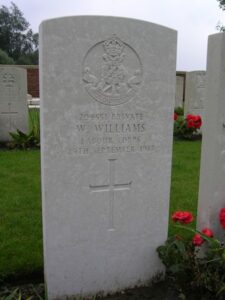
William Edward Williams, Private, 135, Australian Imperial Force. William was the son of Walter and Mary Williams, of 10, Heol Tregoning, Llanelli. He emigrated to Australia prior to the war, and enlisted at Sydney on 20 March 1916 into the 9th Machine Gun Company, Australian Imperial Force. William embarked aboard HMAT Benalla on 12 May 1916, and arrived in England, before being sent to France on 21 November 1916. He became ill with pneumonia over the winter, and had a spell in hospital before rejoining his unit. William came back to Llanelli on leave before returning to France in September 1917 where he joined the 23rd Australian Machine Gun Company, attached to the 3rd Australian Division. The Company was stationed around Polygon Wood, near Beecham Dugout, when William was killed in action on 11 October 1917. He was 27 years old, and is commemorated on the Ypres (Menin Gate) Memorial, Belgium.
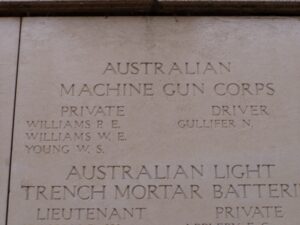
William George Williams, Private, 202672, Royal Welsh Fusiliers. William was born in 1895, the son of John Evan Williams and Jane Williams, of 4, Mill Lane, Llanelli. He worked as a tinplate worker prior to the war. William enlisted at Carmarthen into the 4th (Reserve) Battalion, Welsh Regiment. He was drafted to France early in 1917, where he joined the 19th Battalion, Royal Welsh Fusiliers, which was on the Somme, attached to 119 Brigade, 40th (Bantam) Division. In March 1917 the Germans withdrew to their shortened line, called the Hindenburg Line, and the 40th Division was among the units which followed the withdrawal, reaching positions at Gouzeaucourt, facing the Hindenburg Line, by 16 April and began to dig in. Over the coming months the division remained here, its battalions alternating between spells in the front line and in reserve at Dessart Wood. William was wounded in the chest and abdomen whilst on wiring duties on the evening of 13 September 1917 and was carried back to a nearby dressing station, where he died soon afterwards. The 22-year-old is buried in Rocquigny-Equancourt Road British Cemetery, Manancourt, France.
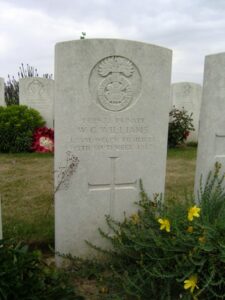
William George Williams, Private, 2598, Welsh Regiment. William was the husband of Margaret Williams, of 4, Funnel Road, Llanelli. He enlisted at Llanelli into the 2nd Battalion, Welsh Regiment, which moved to France at the outbreak of war attached to 3 Brigade, 1st Division. William probably joined the battalion early in 1915, and would have fought at the Battle of Aubers, before the Division moved south to Loos, where they fought during the Battle of Loos, and the action at the Hohenzollern redoubt. During 1916 they fought during the opening of the Somme Offensive at the Battle of Albert, then at The Battle of Bazentin Ridge. William was killed here on 18 July 1916. He was 37 years old, and is commemorated on the Thiepval Memorial, France.
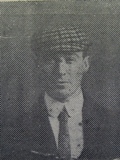
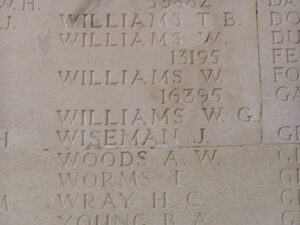
William Henry Williams, MM, Private, 14682, South Wales Borderers. William was born in 1882, the son of William Williams and Susan Williams, of 34, Custom House Bank, Llanelli. By 1911 William was living with his parents at 1, Union Cottages, Sea Side, Llanelli. He worked as a shunter on the Mynydd Mawr Railway prior to the war, and had played for many years with the Llanelli Harbour Lights RFC. William enlisted at Llanelli into the 5th Battalion, South Wales Borderers early in 1916. The battalion formed at Brecon in September 1914, before moving to Park House Camp, near Tidworth to join 58 Brigade, 19th (Western) Division. In December 1914 the battalion moved to Basingstoke in billets, then on 10 January 1915 became converted to the Pioneer Battalion for the 19th Division. The Division completed its training at Bulford and Perham Down, before embarking for France and landing at Le Havre on 16 July 1915. The entire 19th Division then moved to the Nursery Sector at Calonne for trench initiation alongside the Dehra Dun Brigade. The infantry battalions of the division then began carrying out the usual routines of rotating in the trenches: four days in the front line; four in support; and four in reserve, interspersed with training regimes and carrying out working parties and trench raids. Just south, the British launched a great offensive around the town of Loos on 25 September 1915, and the 19th Division was ordered to attack from its positions at the same time, to attempt to draw enemy attention away from the main battle area. The assault was a disaster, and heavy casualties were suffered by the 19th Division for no gain. The following year the Division moved to the Somme, where it took part in the second wave of the attack on Ovillers-La Boiselle on 1 July, capturing the village at heavy cost. It then fought through the Somme Battles of Pozieres and the Ancre in 1916. William had been awarded the Military Medal for bravery in the field on the Somme, and had returned home on a week’s special leave, but was killed just four weeks later, at the Battle of Pozières, on 30 July 1916. The 34-year-old has no known grave and is commemorated on the Thiepval Memorial, France.
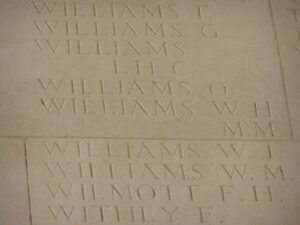
Alfred Wilson, Acting Corporal, 38686, Royal Welsh Fusiliers. Alfred was born at Manchester, and worked at Llanelli prior to the war, lodging with Albert Pedly at 130, Old Castle Road. He enlisted there on 11 August 1915 into the Welsh Regiment, but was later transferred into the 2nd (Garrison) Battalion, Royal Welsh Fusiliers. In March 1916 the battalion moved to Egypt, where it remained for the duration of the war. Alfred was found dead in Alexandria on 1 July 1917, with his rifle by his side and half of his skull blown off. A subsequent court of enquiry failed to uncover how this sad incident had occurred and deemed it as death by misadventure. Alfred is buried at Alexandria (Hadra) War Memorial Cemetery, Egypt.
Ernest Winter, Private, G/17584, Middlesex Regiment. Ernest was the son of Thomas and Janet Winter, of 797, Harrow Rd., London. He worked at Llanelli prior to the war, and enlisted there into the army. Ernest was posted to France, where he joined the 1st Battalion, Middlesex Regiment, which was attached to 98 Brigade, 33rd Division from November 1915. Ernest was taken ill over that first winter in France, and died on 6 June 1916, aged 26. He is buried at Etaples Military Cemetery, France.
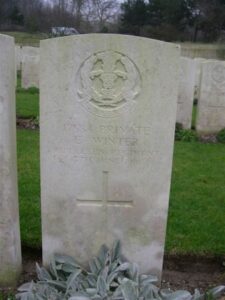
Ernest Wise, Private, 65279, Welsh Regiment. Ernest was the son of Henry James Wise and Catherine Wise, of 39, Robinson Street, Llanelli. He was a Clerk at the Great Mountain Colliery prior to the war, and enlisted at Llanelli into the 59th Training Reserve battalion in February 1917. On 30 March 1918 Ernest landed in France, where he was attached to the 9th Battalion, Welsh Regiment, which had just moved to positions around Messines, after suffering heavy casualties during the German Spring offensive of 21 March 1918, attached to 58 Brigade, 19th (Western) Division. On 9 April 1918 the Germans launched a fresh assault on the Lys, and it was during the desperate fighting that followed, that Ernest was killed near Kemmel on 18 April 1918. He was just 18 years old, and is commemorated on the Tyne Cot Memorial, Belgium. His cousin, Robert Haydn Wise, also fell.
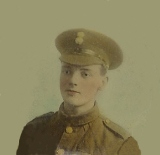

Robert Haydn Wise, Private, 368175, Royal Army Medical Corps. Robert was the son of William and Ellen Wise, of Baglan House, Pembrey Road, Llanelli. He enlisted at Swansea into the Royal Army Medical Corps in October 1914, and was posted to the 1/3rd Welsh Field Ambulance, attached to the 53rd (Welsh) Division. The Division landed at Cape Helles, Gallipoli, on 9 August 1915, and was immediately thrown into action, spending the next few days in isolated pockets, fighting against a Turkish counter-attack during the Battle of Sari Bair, and then at the Attack on Scimitar Hill. The Division remained here throughout the coming months, and suffered severe losses in manpower strength during the great November 1915 blizzard on Gallipoli, when its total strength was reduced to less than that of a full-strength Brigade. On 11 December 1915 the Division was evacuated to Mudros, and by 23 December 1915 were moved to Egypt. They remained on the Suez Canal Defences for the next twelve months, where it took part in operations against the Sultan of Darfur, and in March 1917 took part in the advance into Palestine. Robert was wounded in Palestine, and died on 11 April 1918. He was 26 years old, and is buried at Jerusalem War Cemetery, Israel. His cousin, Ernest Wise, also fell.
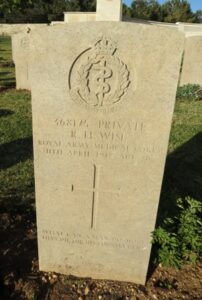
John George Richard Woods, Private, 28507, Welsh Regiment. John was born at Suffolk, and was the Adopted son of the late Mr. and Mrs. Hayward, of Llanelli. He enlisted at Llanelli into the 18th Battalion, Welsh Regiment, which was attached to 119 Brigade, 40th (Bantam) Division. The Division moved to France during June 1916 and moved to the front near Loos. Late in 1916 they moved south to the Somme, and fought at the Battle of the Ancre, and remained in the area over the winter. In March 1917 the Germans withdrew to their shortened line, called the Hindenburg Line, and the 40th Division were one of the Divisions that followed the withdrawal. Later in the year they took part in the Battle of Cambrai, playing an important role in the attack on Bourlon Wood. They remained in the area over the coming months, but were caught here by the German Spring Offensive of 21 March 1918. John was killed during the Battle of St. Quentin on 24 March 1918. He was 29 years old, and is commemorated on the Arras Memorial, France.
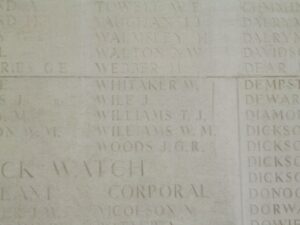
Nelson Stanley John Worsell, Private, S/8351, Rifle Brigade. John was born at Beckenham, Kent on 16 August 1889, the son of John and Jessie Worsell. He married Lily Chapman at Llanelli in 1910, and the couple had a son, Leonard Worsell. John served with the Rifle Brigade, and landed in France on 15 June 1915. He survived the war, and returned to Llanelli, but Lily sadly died before he was demobilised. John remarried, Edith M. Knight during the summer of 1919. He died in Llanelli towards the end of 1920, aged 31. No more is currently known of him, as he is not commemorated by the CWGC.
Bertie Worton, Private, 15002, Worcestershire Regiment. Bertie was the son of John Thomas and Eliza Worton, of Wollescote, Lye, Worcs. By 1911 the family had moved to 50, Nathan Street, Llanelli, and Bertie enlisted there into the 9th Battalion, Worcestershire Regiment, which was attached to 39 Brigade, 13th (Western) Division. The Division left for the Mediterranean on 13 June 1915, and from 6 July 1915 landed on Cape Helles, Gallipoli, relieving the 29th Division. They transferred to ANZAC Cove from 3 August 1915, taking part in the Battles of Sari Bair, Russell’s Top, and Hill 60, before moving to Suvla Bay. Bertie was killed here on 6 October 1915. He was 28 years old, and is buried at Azmak Cemetery, Suvla, Gallipoli.
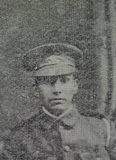
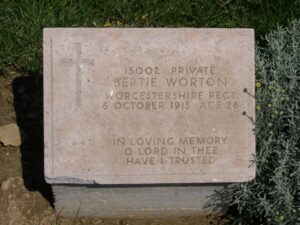
William Wright, Private, S/50137, Queens Own Cameron Highlanders. William was born at Bristol, and resided at Llanelli prior to the war. He enlisted there into the Welsh Regiment, but was later transferred into the 11th Battalion, Queen’s Own Cameron Highlanders, which was attached to 120 Brigade, 40th (Bantam) Division. The Division moved to France during June 1916, and moved to the front near Loos. Late in 1916 they moved south to the Somme, and fought at the Battle of the Ancre, and remained in the area over the winter. In March 1917 the Germans withdrew to their shortened line, called the Hindenburg Line, and the 40th Division were one of the Divisions that followed the withdrawal. Later in the year they took part in the Battle of Cambrai, playing an important role in the attack on Bourlon Wood. They remained in the area over the coming months, but were caught here by the German Spring Offensive of 21 March 1918, and fought there at the Battle of St Quentin and retreating back westwards fought at the First Battle of Bapaume. Due to the terrible casualties suffered by the Division here they were sent north to Flanders to rest and rebuild, but in April the Germans launched an offensive in Flanders, and the 40th Division were caught up in the thick of it again, fighting at the Battle of Estaires, and then at the Battle of Hazebrouck. Following losses in the defence of Hazebrouck, the Division was reduced to a training cadre. A major reorganisation took place, with battalions that had been Garrison Guard units joining and being converted to fighting units. The Division was ready for front-line action again by 18 July 1918, when they took part in the Advance in Flanders, and the Battle of Ypres 1918. William became ill, and died of influenza just before the armistice, on 7 November 1918. He is buried at St. Andre Communal Cemetery, France.
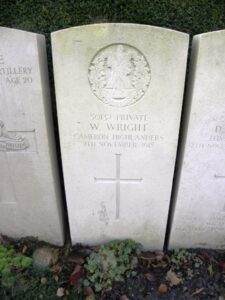
William Henry York, Sapper, 448556, Royal Engineers. William was the son of Noah and Elizabeth York, of 22, Downing Street, Llanelli. He originally served with the Welsh Field Company, Royal Engineers, with the service number T/980, but transferred later and served with the 13th Pontoon Park, Royal Engineers. William died of sickness in Egypt on 13 October 1918, aged 22, and is buried at Cairo War Memorial Cemetery, Egypt.